- Editorial Process
- Why Trust Us?
- Affiliate Linking Policy
- Privacy Policy
- Terms of Service

Weekly Must-Reads View All
7 things to do if you spilled water on your macbook.
Quick steps to save your MacBook from water damage
How to Boot Your Mac Into Verbose Mode: 4 Best Ways
Boot your Mac into Verbose Mode with this step-by-step guide
How to Fix Your Mac Shutting Down Randomly: 16 Fixes to Try
Troubleshoot random shutdowns on Mac with effective solutions
How Much Space Does macOS Take On Your Mac?
Understand macOS size and analyze your Mac's storage usage
Popular Topics
- What to Do With Your Old MacBook? 13 Useful Ways to Reuse an Old Mac
What Is the MacBook Flexgate Issue and How to Fix It
- What Is the MacBook Flexgate Issue
- Uninstall Java
- Safely Transfer Files from Mac to Mac
- Safari Bookmarks Disappeared on Mac: 10 Best Ways to Restore Them
- Repairing disk permissions
- Old MacBook
Trending Now View All

- Troubleshooting Mac Issues
Why Is Safari Running Slow on Mac? 15 Ways to Fix
Hashir Ibrahim
Reviewed by
Last updated: September 25, 2023
Expert verified
Safari may run slowly on Mac due to opening too many tabs, using too many extensions, cache build-up, outdated Safari version, outdated macOS, slow internet connection, hardware limitations, and malware or adware.
Fixing these issues through updating software, managing tabs, clearing cache, and removing unnecessary extensions can improve Safari’s speed and performance on a Mac.
- Managing open tabs and removing unnecessary extensions can free up valuable resources and enhance Safari’s performance.
- Regularly updating Safari and macOS ensures optimal compatibility and access to performance improvements.
- Clearing accumulated cache, cookies, and browsing history can give Safari a fresh start and improve loading times.
- Advanced solutions like switching DNS providers and booting in Safe Mode can address more complex issues affecting Safari’s speed.
Ever found yourself drumming your fingers in frustration as Safari lags on your Mac? A slow browser can turn even the most basic online tasks into a tedious affair.
If Safari is running slow on your Mac, I’ve got your back. Dive into this guide to uncover the mysteries behind Safari running slow on Mac and explore practical solutions to get you back in the fast lane. Ready to turbocharge your browsing experience? Let’s get started!
Before We Begin
If you want to make Safari run faster on your Mac, download MacKeeper. This tool clears up RAM, removes unnecessary Safari extensions, deletes unneeded files, and more. All these features help speed up a slow-running Safari.
Why Is Safari Running Slow on Mac?
Safari running slow on Mac can be due to various reasons. Below, I’ve shared the most common reasons for Safari’s sluggishness on your Mac:
- 🖥️ Too Many Tabs or Windows Open : Having numerous tabs or windows open can consume a lot of memory and slow down Safari.
- 🧩 Heavy Use of Extensions : Some Safari extensions can use a lot of resources, causing the browser to slow down.
- 🍪 Cache and Browsing Data : Accumulated cache, cookies, and browsing history can impact Safari’s performance.
- ⌛ Outdated Safari Version : Running an outdated version of Safari can lead to performance issues.
- 🍎 Outdated macOS : An outdated operating system can cause compatibility issues and slow down Safari.
- 🌐 Internet Connection Issues : An unstable or slow internet connection on Mac can affect browsing speed.
- 💻 Hardware Limitations : Older Mac models with limited RAM and processing power may struggle to run Safari efficiently.
- 🦠 Malware or Adware : Malicious software can significantly degrade the performance of Safari.
Addressing these issues through updating software, managing tabs, clearing cache, and removing unnecessary extensions can improve Safari’s speed and performance on a Mac.
How to Fix Safari Running Slow on Mac
A sluggish Safari on your Mac can be quite a bottleneck, especially during important online tasks. The good news is, there’s no need to let a slow browser rain on your parade. In this section, I’ll walk you through various solutions to bring Safari back to its optimal speed.
Let’s dive into the nitty-gritty of boosting your Safari browser’s performance on your Mac.
1. Check Your Internet Speed
Before diving into more complex solutions, ensuring that your internet connection isn’t the culprit behind Safari’s sluggishness is essential. A slow or unstable internet connection can significantly impact your browsing experience.
To test your internet connection, follow these steps:
- Open Safari on your Mac.
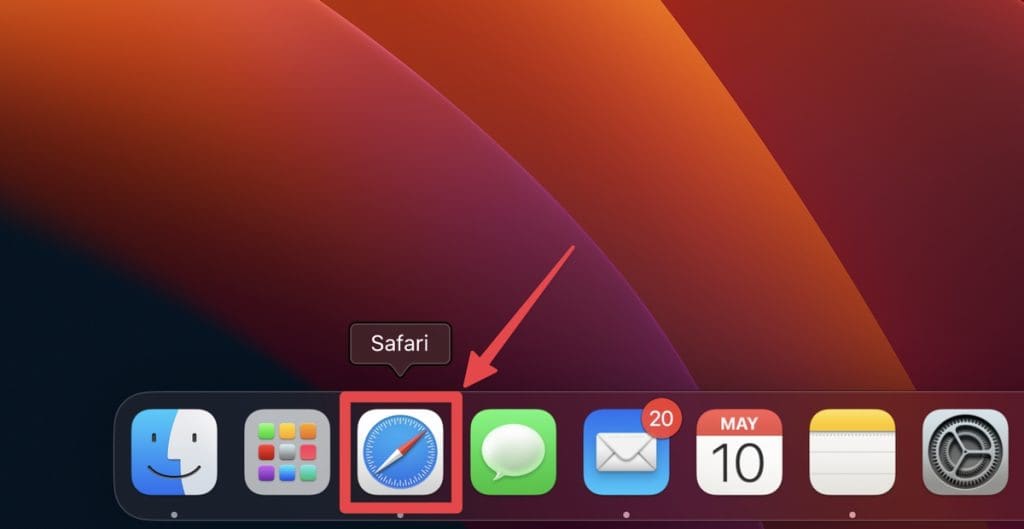
- Navigate to an online speed test tool like Speedtest.net .
- Click the Go button to start the test.
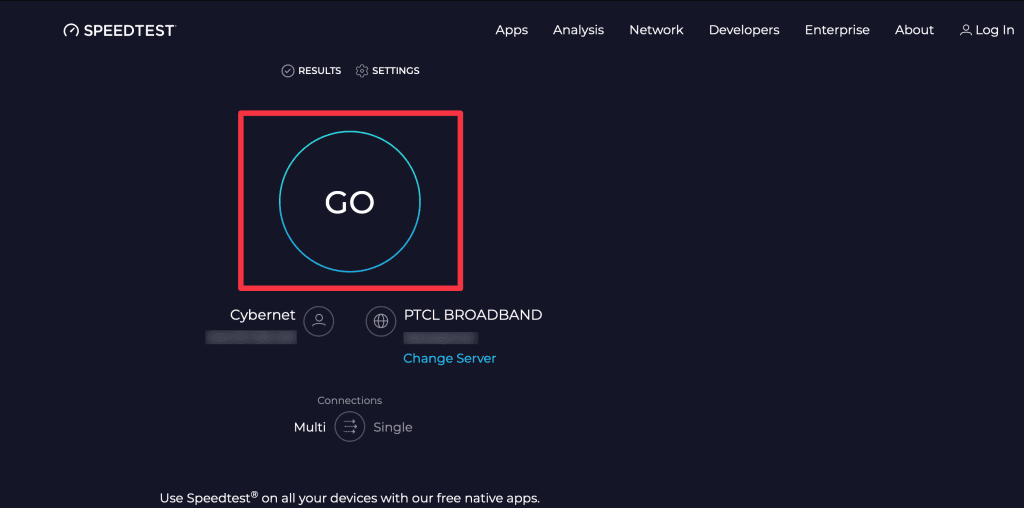
- This will give you an idea of your current internet speed.
- Pay attention to the download and upload speeds. If they are significantly lower than what your Internet plan promises, there might be an issue with your connection.
- If your internet speed is slow, reset your router. Unplug it from the power source, wait 30 seconds, and plug it back in. Wait for it to restart and retest your internet speed.
- If resetting doesn’t help, try moving closer to the router or removing any obstacles interfering with the signal.
- If the above steps don’t improve your internet speed, it might be time to contact your Internet Service Provider (ISP) for further assistance.
2. Force Close and Relaunch Safari
At times, Safari or any of its tabs might encounter errors or issues that consume excessive system resources, leading to slowdowns. Force closing and re-launching Safari can terminate these problematic processes and give the browser a fresh start.
Here’s how to force quit Safari and relaunch it on your Mac:
- Click the Apple logo in the top-left corner of your screen and select Force Quit from the drop-down menu.
- In the new window, select Safari and click the Force Quit button.
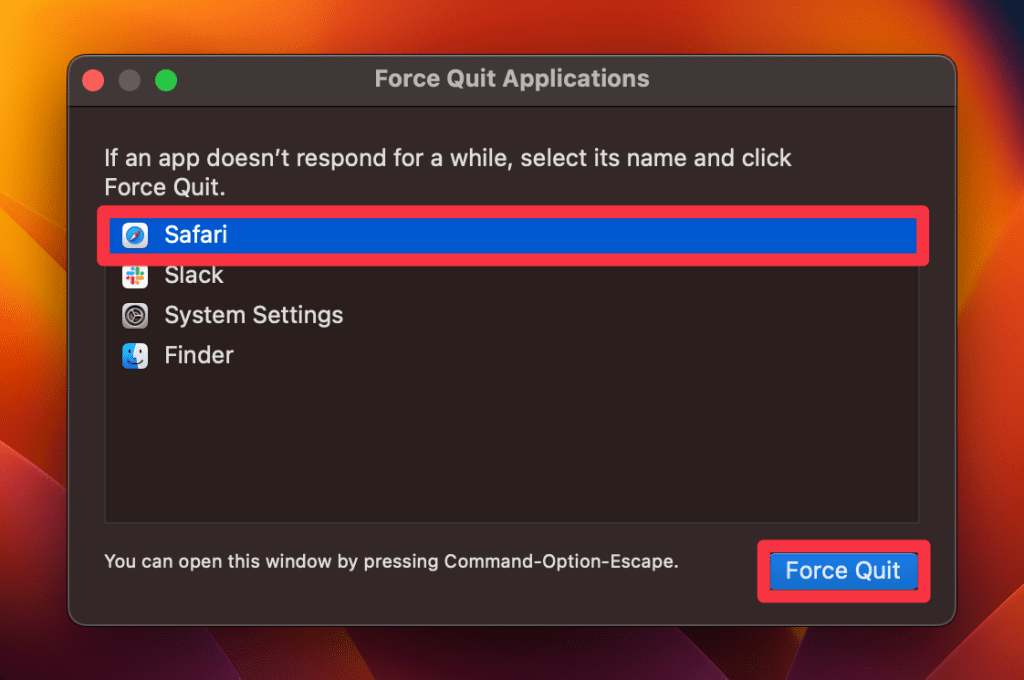
- Click Force Quit on the pop-up.
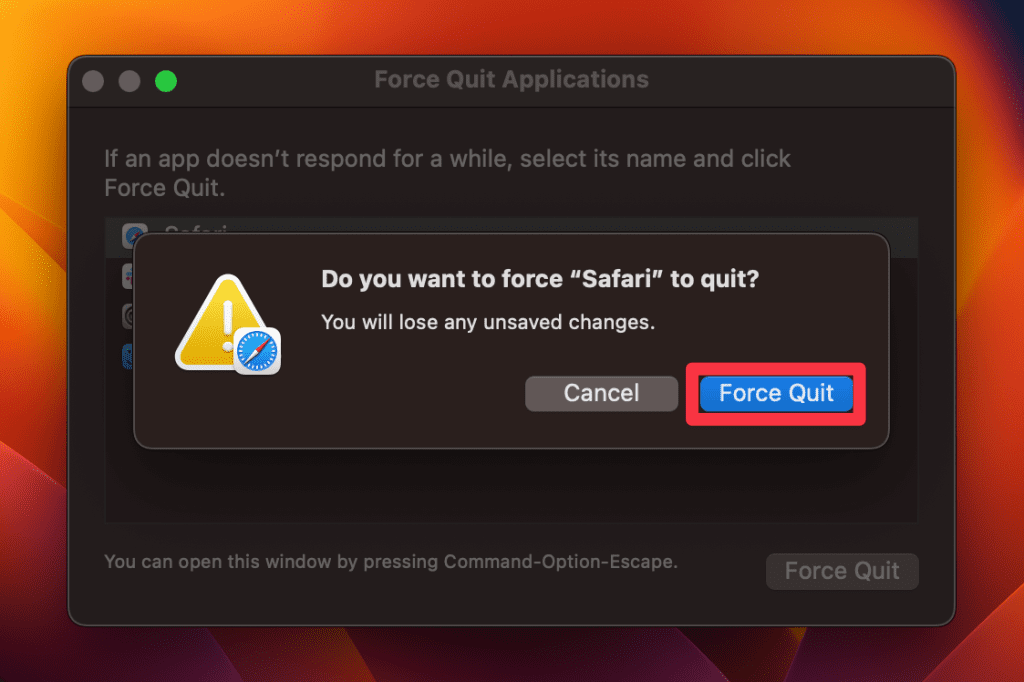
- After force-closing Safari, wait for a few moments to let the system properly terminate all processes related to the browser.
- Find the Safari icon in your Dock and click it to re-launch the browser.
- Check if the performance has improved.
3. Close Unwanted Tabs
Each open tab in Safari consumes your Mac’s memory and processing power. Having multiple tabs open, especially those with heavy content or active scripts, can significantly slow down the browser and even the entire system.
Closing unnecessary tabs can free up valuable resources and enhance Safari’s performance. Here’s how to go about it:
- Take a look at all the tabs you have open in Safari. Identify which ones are not currently needed or are consuming significant resources.
- Click the small x icon on the left of each tab you wish to close.

- Alternatively, you can close an active tab using a Mac keyboard shortcut : Command ⌘ + W .

- You can also right-click a tab and select Close Tab from the context menu.
- After closing unwanted tabs, check if Safari’s performance has improved.
4. Clear Safari History
Over time, Safari accumulates a history of the websites you’ve visited, cached files, and cookies. While these elements are designed to speed up page loading times, they can also clutter your browser and consume system resources, leading to slowdowns.
Clearing your browsing history can give Safari a fresh start and potentially improve its performance. Here’s how to delete Safari’s history on Mac :
- If not already open, launch the Safari browser on your Mac.
- Click the Safari menu item at the top left of your screen. From the drop-down menu, select Settings .

- Select the Advanced tab and check the box next to the Show Develop menu in menu bar if it is unchecked.
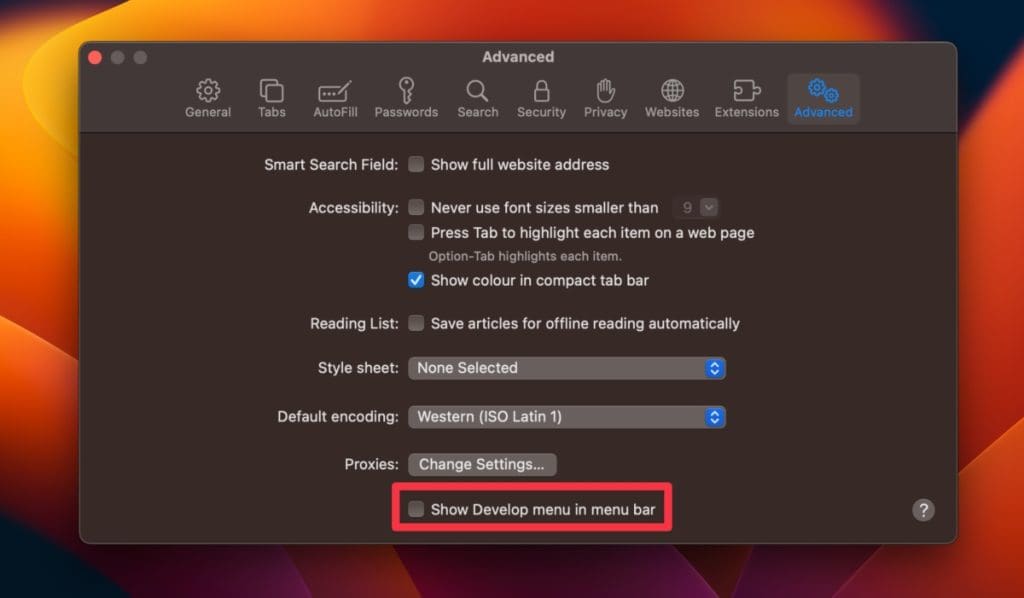
- Return to the menu bar, click Develop , and select Empty Caches from this drop-down list.
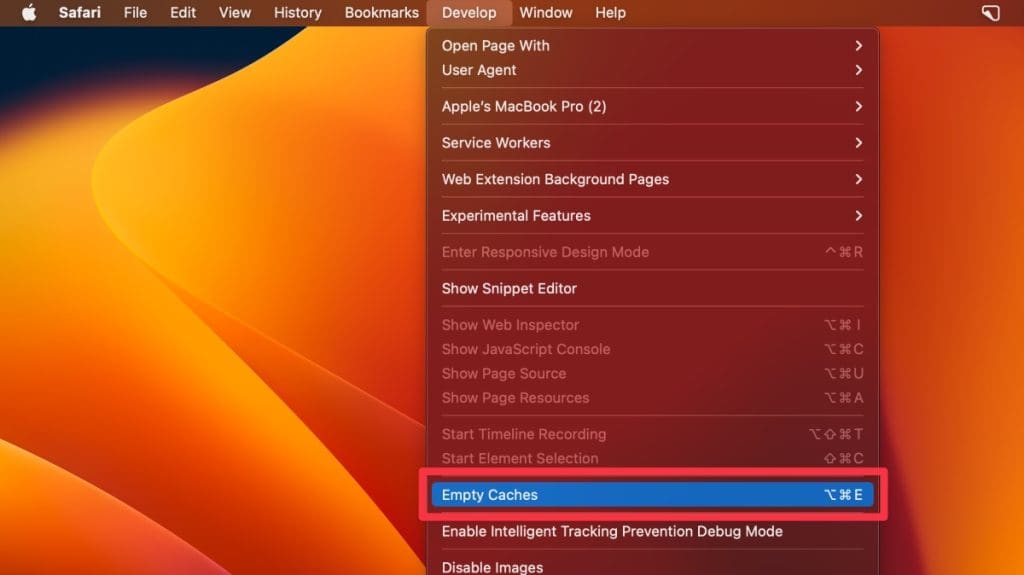
- After clearing the history, navigate through various websites to check if there is an improvement in Safari’s speed and responsiveness.
5. Clear Safari Cache and Cookies
The cache stores temporary files from websites to help pages load faster in future visits, while cookies save small pieces of information like login details. Over time, these stored files can accumulate and cause Safari to slow down.
Clearing the browser cache on your Mac can free up storage and improve browser speed. Here’s how to clear Safari cache on your Mac :
- Launch Safari and click Safari in the top menu bar, then select Settings from the drop-down menu.
- In the Settings window, select the Privacy tab and click Manage Website Data .
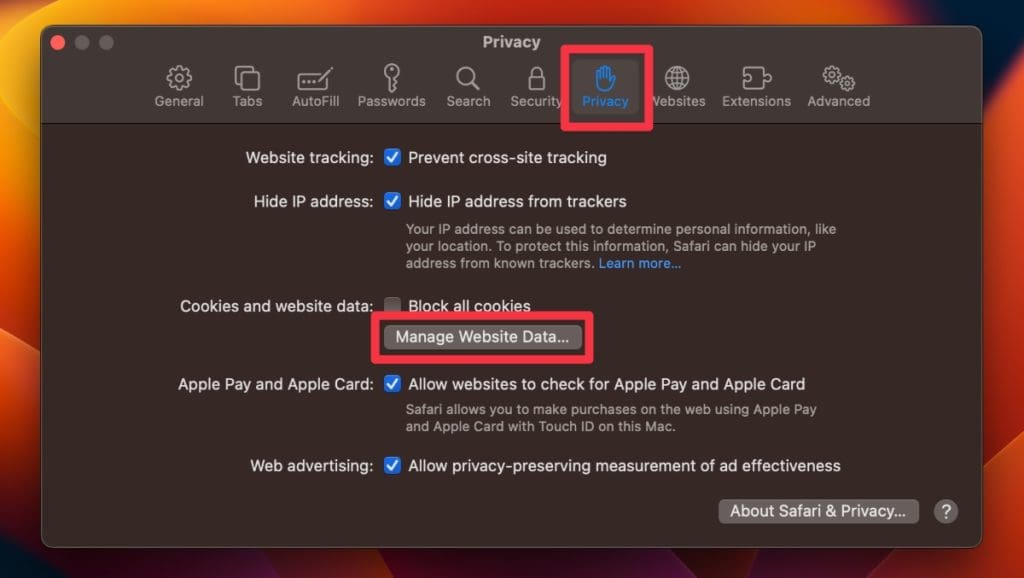
- A new window will open, showing a list of websites storing data.
- Click Remove All to clear all cookies and cached data. Confirm the action when prompted.
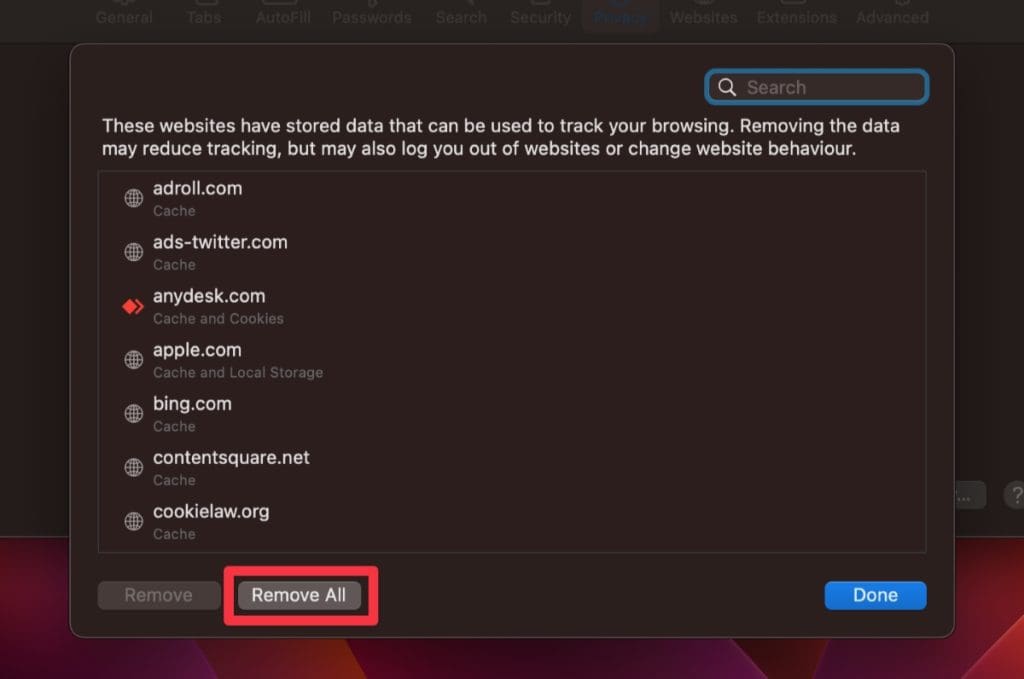
- After completing these steps, browse through different websites and assess whether Safari’s performance has improved.
6. Delete Unwanted Extensions
Extensions are additional features or functionalities added to Safari to enhance user experience. However, some extensions can be resource-intensive, causing the browser to slow down. Removing unnecessary or problematic extensions can help in optimizing Safari’s speed.
Here’s how you can delete unwanted extensions on Mac :
- Open Safari on your Mac, click the Safari menu in the menu bar and select Settings .
- Click the Extensions tab to view all the installed extensions.
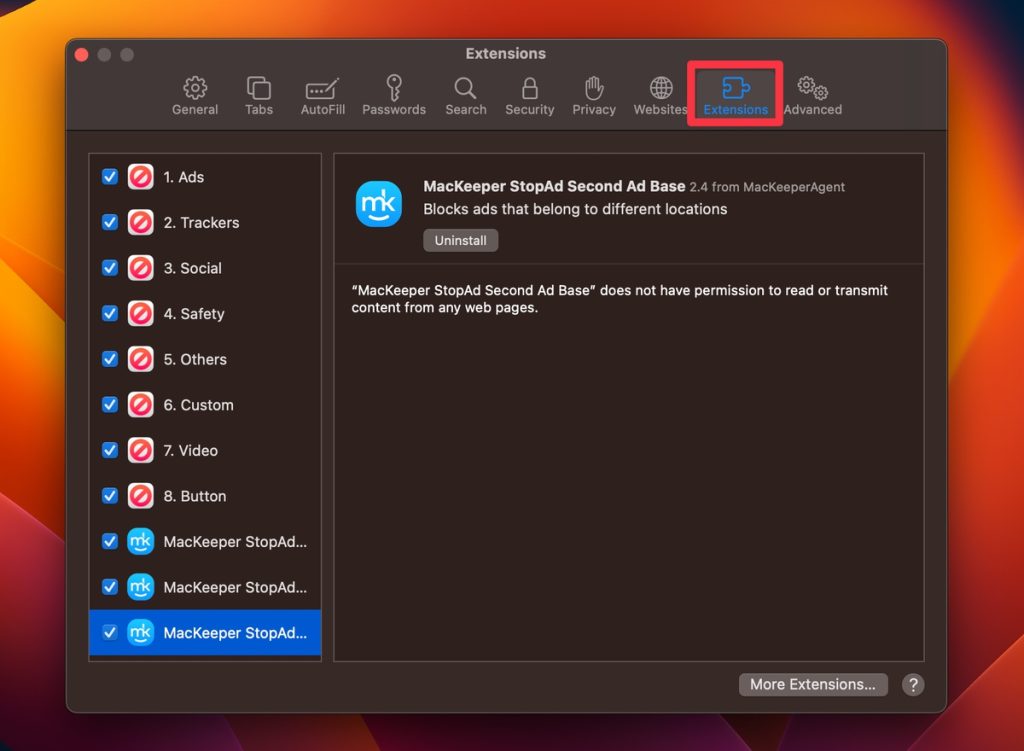
- Find the extension you want to remove and click it.
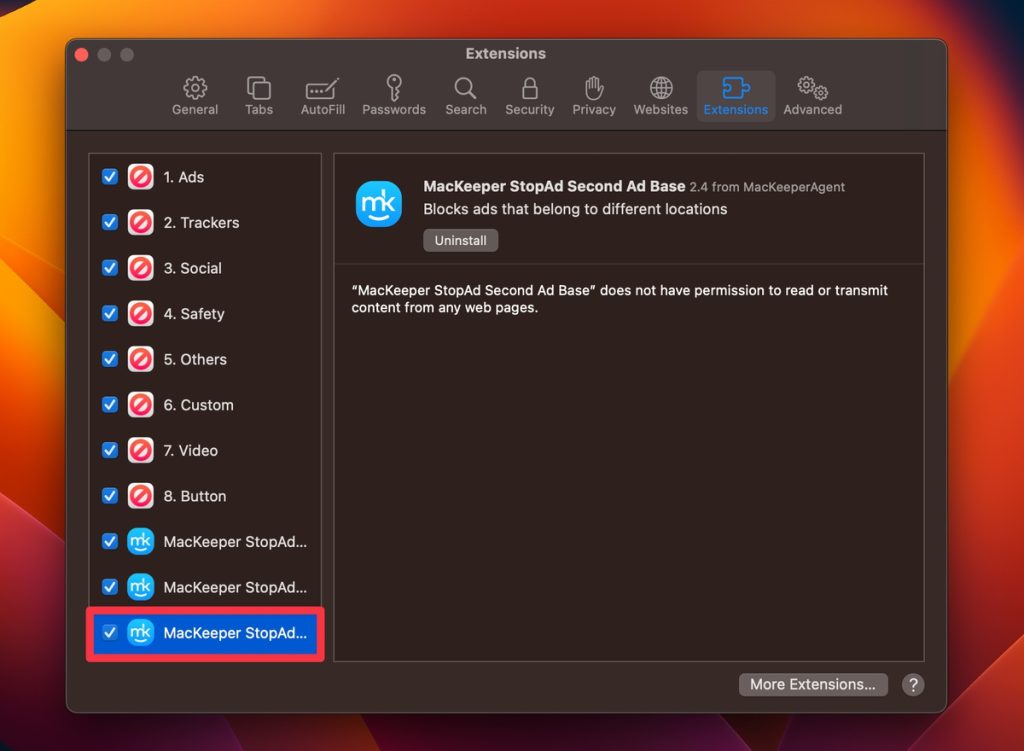
- Click the Uninstall button to confirm that you want to remove the extension.
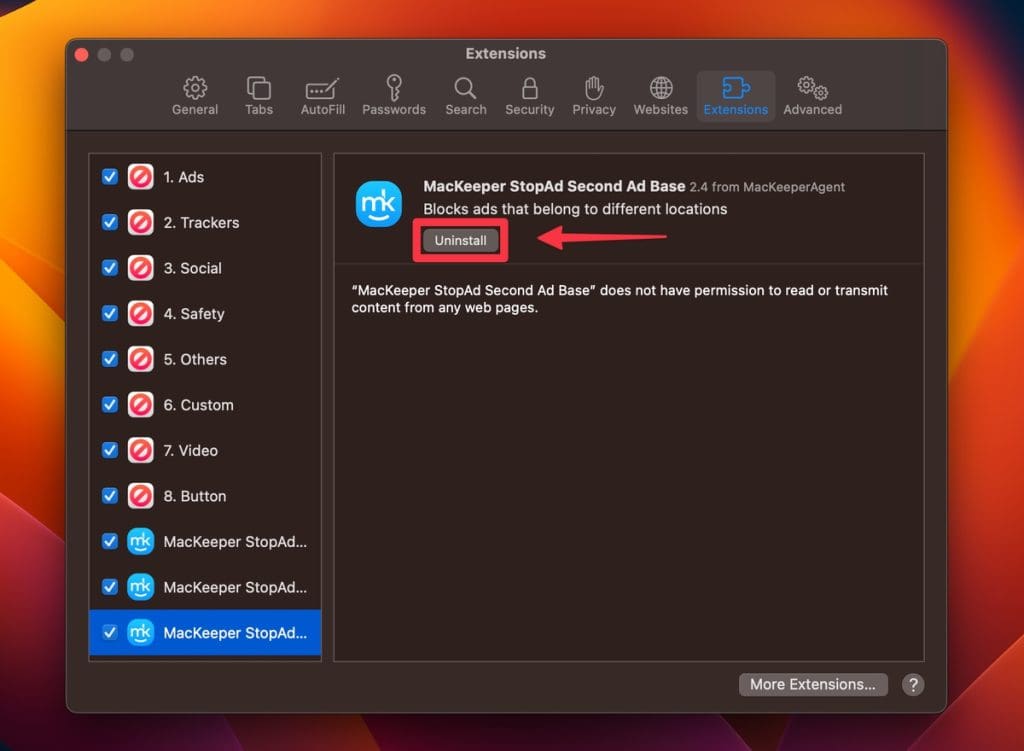
Alternatively, you can use MacKeeper to remove unwanted extensions from Safari. Here are the steps to follow:
- Download and install MacKeeper on your Mac.
- Open MacKeeper and click the Smart Uninstaller option in the left sidebar.

- Click the Start Scan button to scan your computer for installed browser extensions.
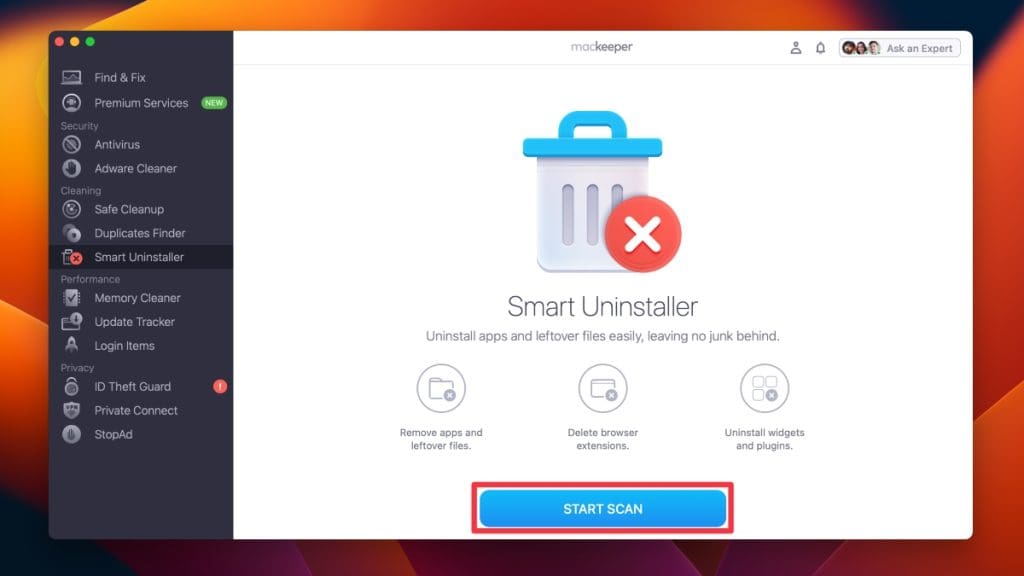
- Once the scan is complete, click Browser Extensions in the left sidebar and locate the extension you want to remove from the list.
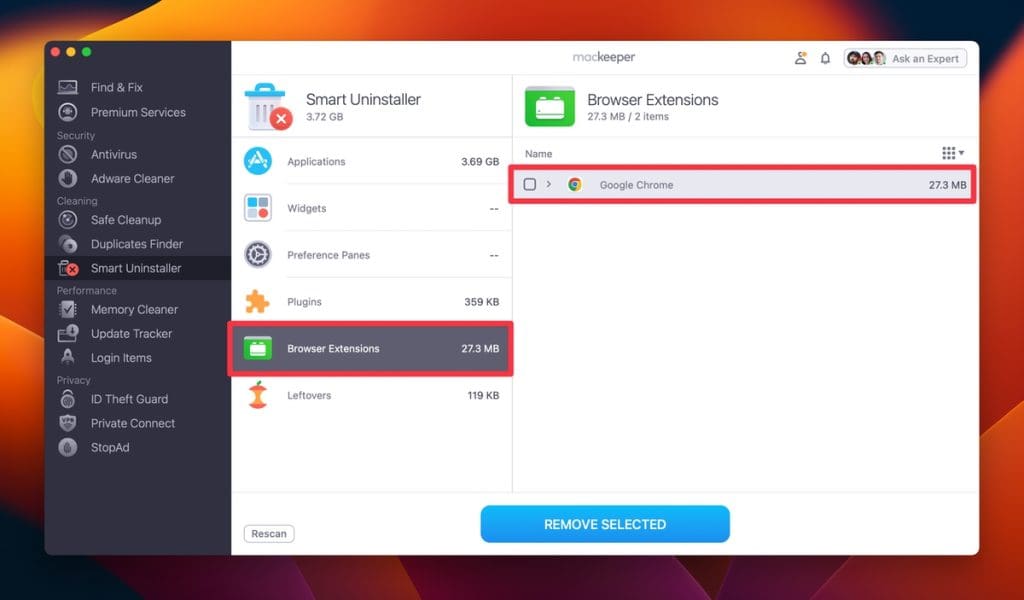
- Click the checkbox next to the extension you want to remove and tap Remove Selected .
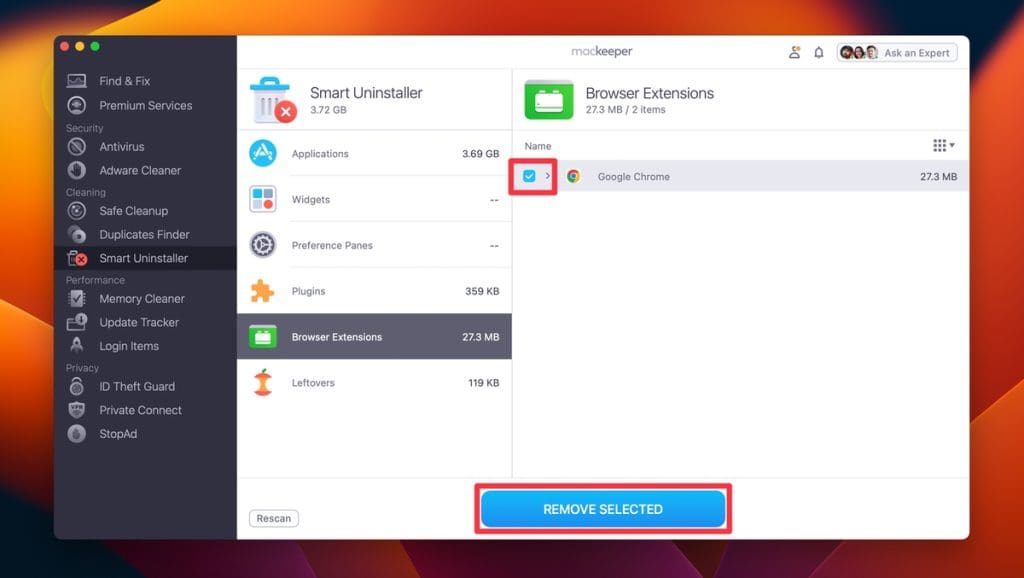
- Confirm the action by clicking the Remove button in the confirmation dialog box.
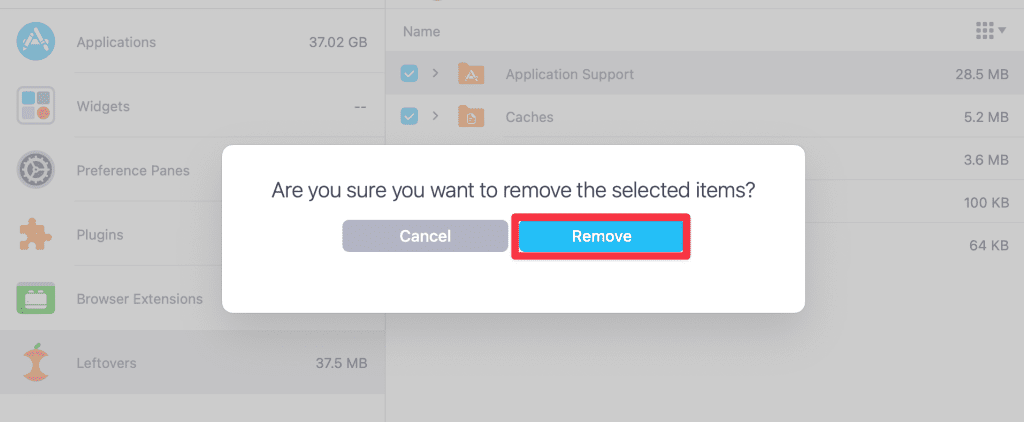
- Wait for the uninstallation process to complete.
- Restart your browser to ensure the extension has been completely removed.
7. Disable Search Engine Suggestions
Search engine suggestions are generated in real-time as you type into the search bar, which can sometimes slow down Safari, especially on slower internet connections or older Mac models. Disabling this feature can reduce the load on Safari and potentially improve its speed.
Here’s how you can disable search engine suggestions on Safari:
- Launch Safari, click Safari in the menu bar and select Settings from the drop-down menu.
- In the Settings window, click the Search tab.
- Uncheck the box next to Include search engine suggestions to disable the feature.
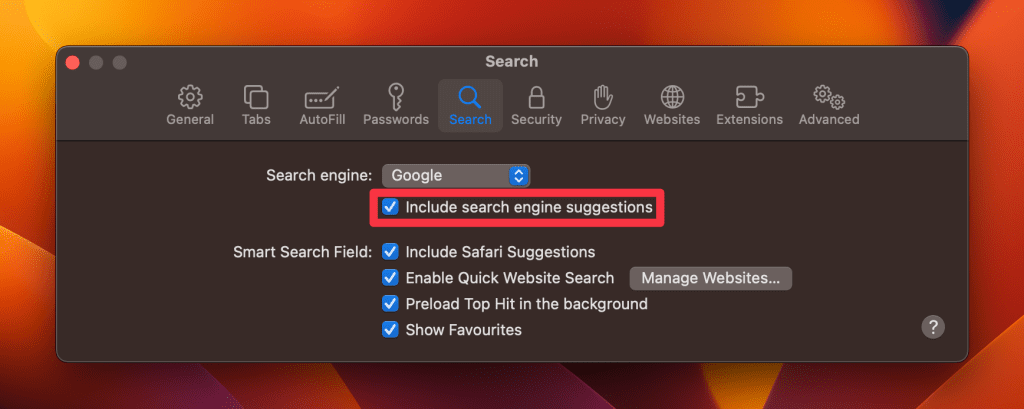
- Close the Settings window and test Safari by typing into the search bar to see if there is an improvement in responsiveness.
8. Disable Autofill
Autofill automatically completes forms using stored information, which, while convenient, can sometimes cause Safari to lag, especially if there’s a lot of data stored. Disabling this feature can help Safari run more smoothly.
Here’s how you can disable Autofill on Safari:
- In the Settings window, click the Autofill tab.
- You will see several options for different types of information that Safari can autofill. Uncheck the boxes next to the types of information you don’t want Safari to autofill.
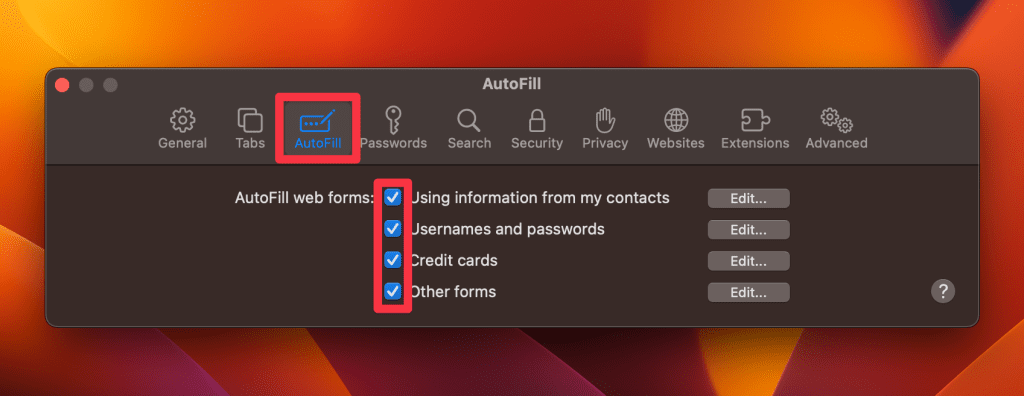
- After making the changes, close the window and restart Safari to apply the adjustments.
- With Autofill disabled, navigate to various websites with forms and assess whether there’s an improvement in Safari’s speed and responsiveness.
9. Update Safari
Running an outdated version of Safari can lead to performance issues, as updates often include optimizations and fixes for known bugs. Ensuring Safari is up-to-date can help resolve slowdowns and enhance browser stability.
Here’s how you can update Safari on Mac:
- Click the Apple logo in the top-left corner of your screen and select App Store from the drop-down menu.
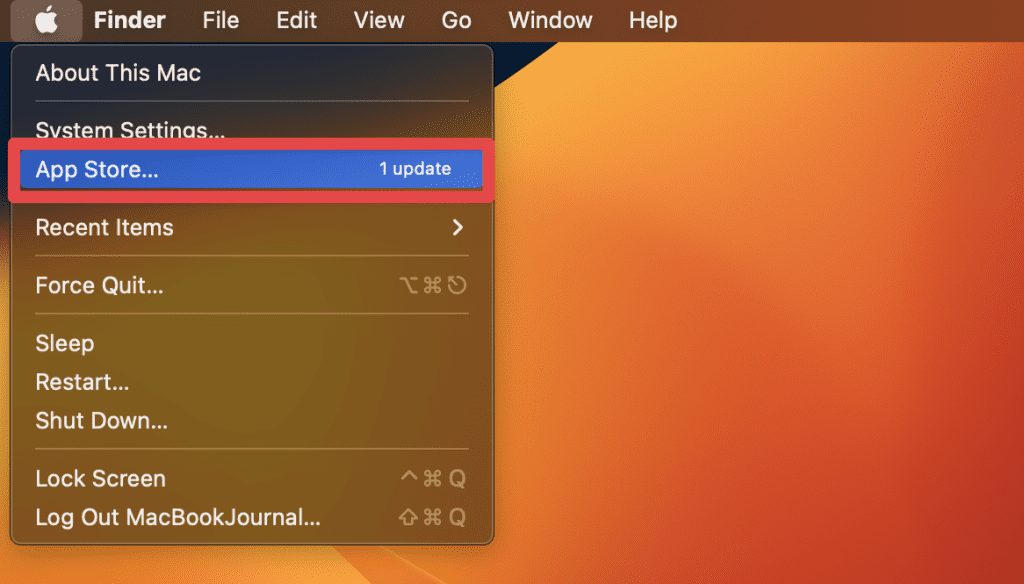
- In the App Store, click the Updates tab to view available app updates.
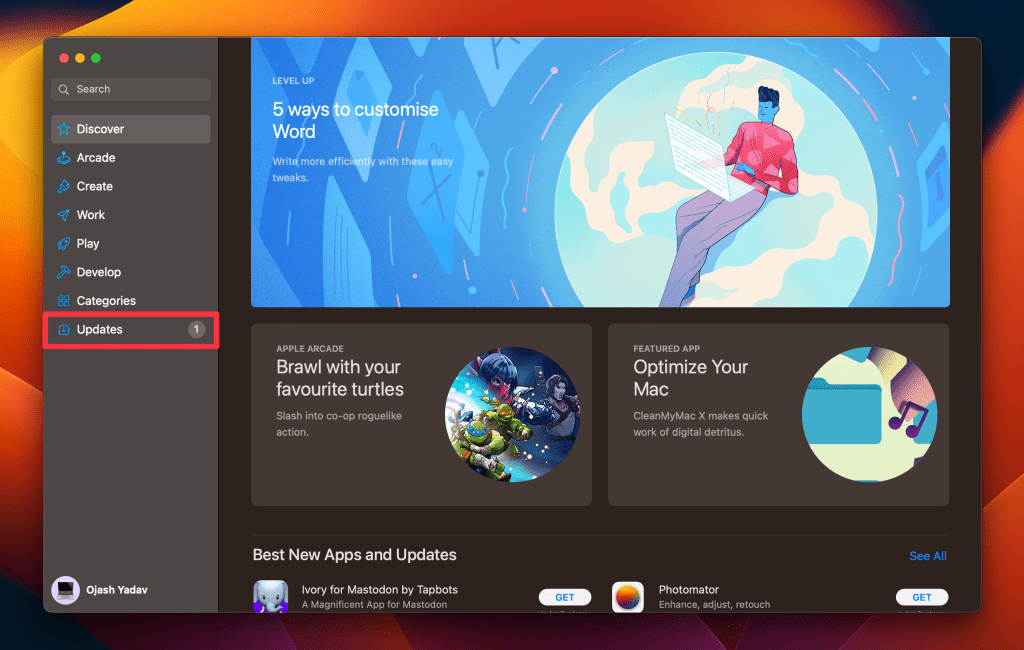
- Scroll through the list of updates and look for Safari. If an update is available, it will be listed here.
- Click the Update button next to Safari to download and install the latest version.

- Once the update is complete, close and restart Safari to apply the changes.
- After updating Safari, navigate different websites and assess whether the browser’s performance has improved.
10. Disable DNS Prefetching
DNS prefetching is a feature that pre-resolves domain names before you click a link, aiming to improve page load times. However, this feature can cause Safari to slow down or become unresponsive on some networks. Disabling it can help alleviate these issues.
Here’s how you can disable DNS prefetching:
- Navigate to Finder > Applications > Utilities > Terminal to open the Terminal application on your Mac.

- In the Terminal window, type the following command and press Enter :
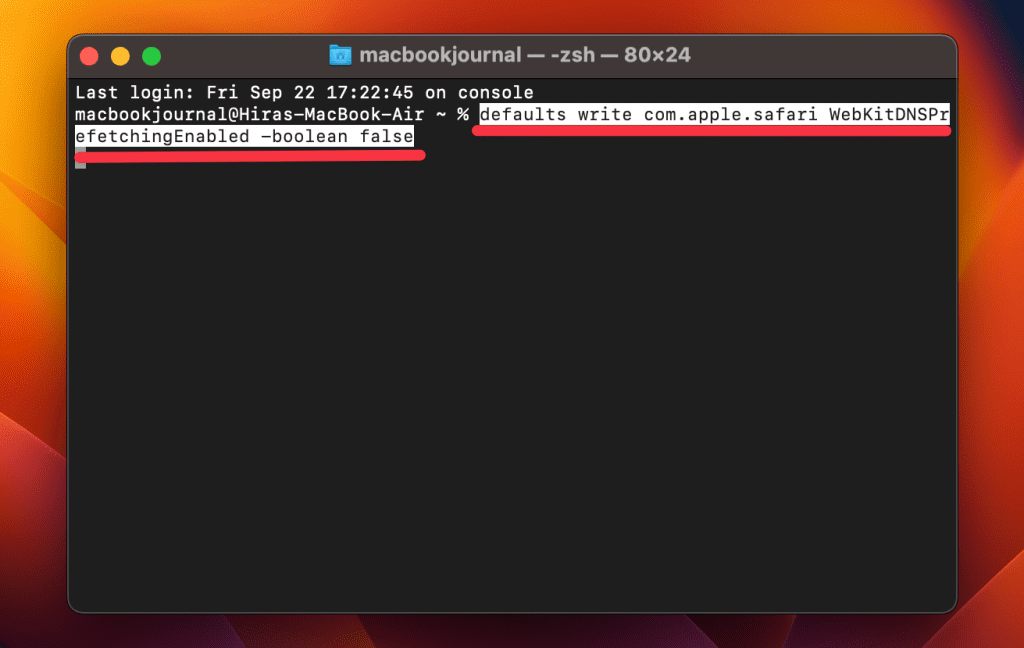
- Close open Safari windows and relaunch the browser to apply the changes.
- Navigate through various websites and evaluate whether disabling DNS prefetching has improved Safari’s speed and responsiveness.
11. Switch DNS Provider
The Domain Name System (DNS) translates website names to IP addresses. Sometimes, the default DNS servers provided by your ISP may be slow or overloaded, affecting your browsing speed. Switching to a faster, more reliable DNS provider can enhance your internet speed and Safari’s performance.
Here’s how you can switch your DNS provider:
- Click the Apple logo and select System Settings from the drop-down menu.
- In the System Settings window, click Network to access your network settings.
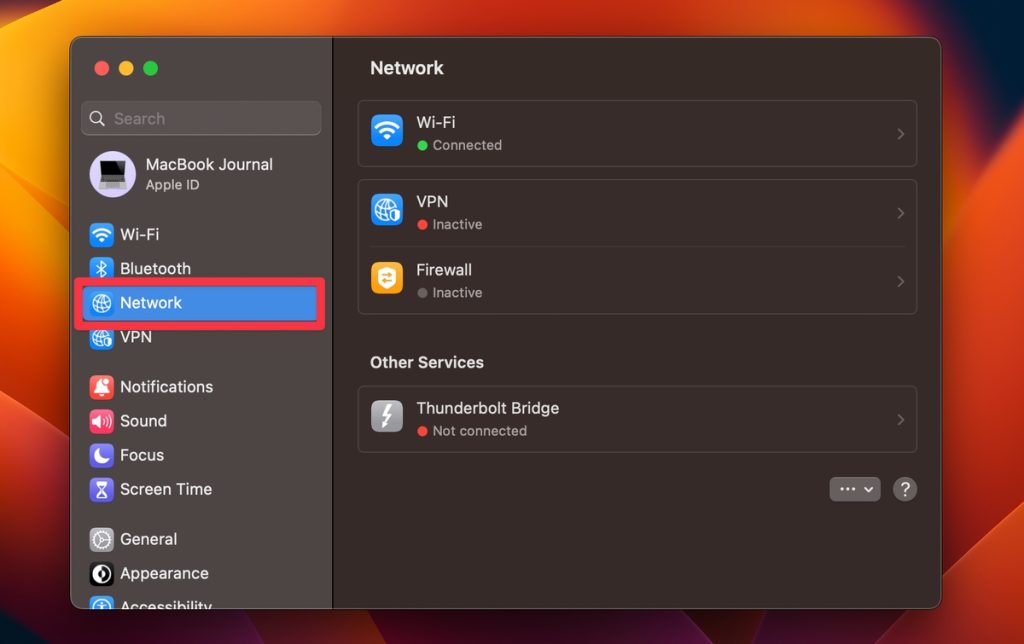
- In the Network settings window, click Wi-Fi and tap the Details button next to your active Internet connection.
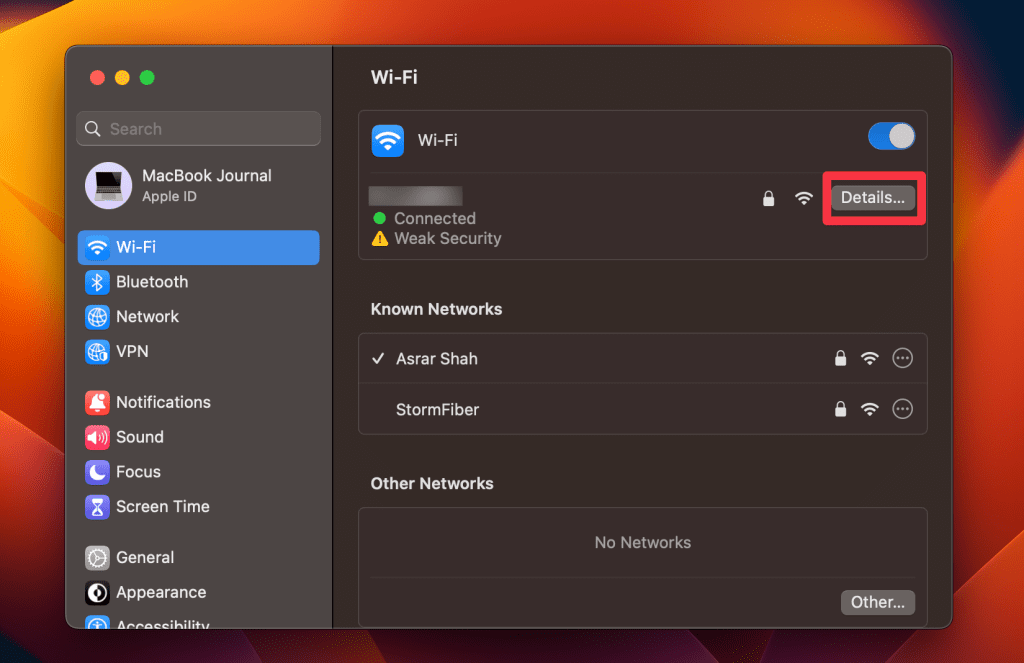
- Click the DNS tab in the Advanced Settings window.
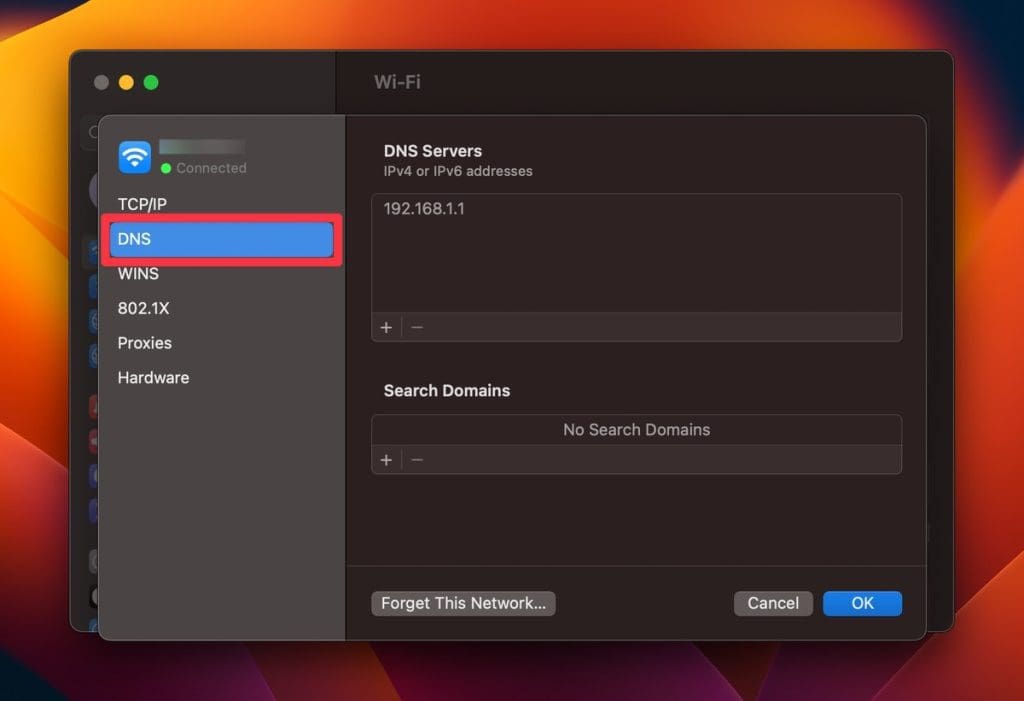
- Click the + button below the DNS Servers box.

- IPv4 addresses: 8.8.8.8 and 8.8.4.4
- IPv6 addresses (if your network supports it): 2001:4860:4860::8888 and 2001:4860:4860::8844
- If there are existing DNS servers listed, make sure the Google DNS addresses are at the top of the list. You can click and drag the entries to reorder them.
- Click the OK button in the DNS Servers window to save the changes.
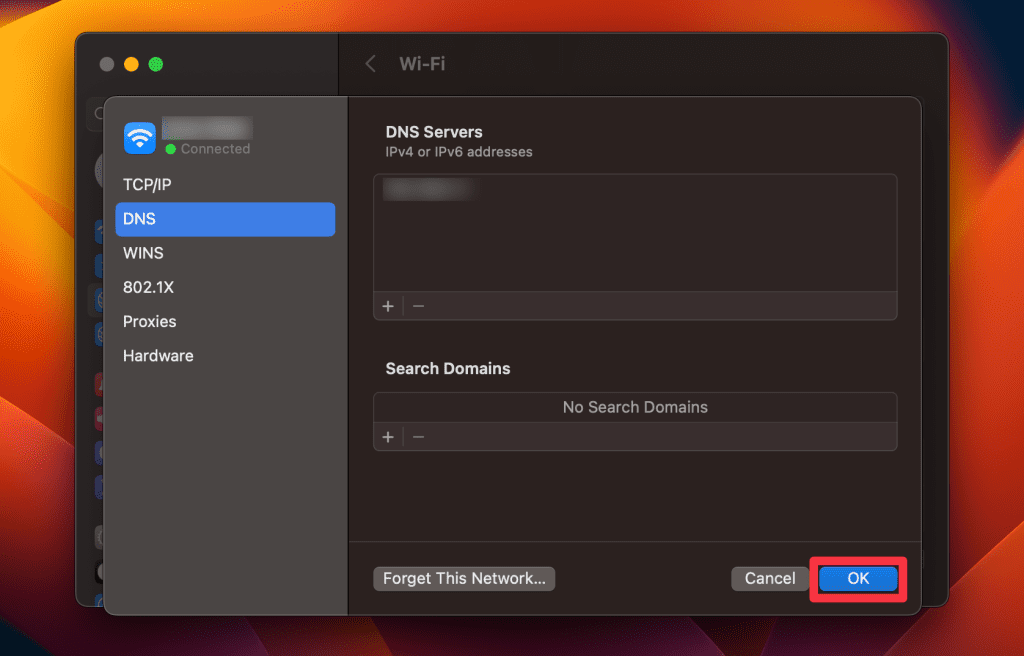
- After switching the DNS provider, open Safari and browse through different websites to check if there’s an improvement in speed and responsiveness.
12. Kill Resource-intensive Processes
Some processes running on your Mac can consume a significant amount of system resources, affecting the overall performance of your computer and, consequently, Safari. Identifying and terminating these resource-intensive processes can free up system resources and improve Safari’s responsiveness.
Here’s how you can kill resource-intensive processes on your Mac :
- Open Activity Monitor by going to Finder > Applications > Utilities > Activity Monitor .
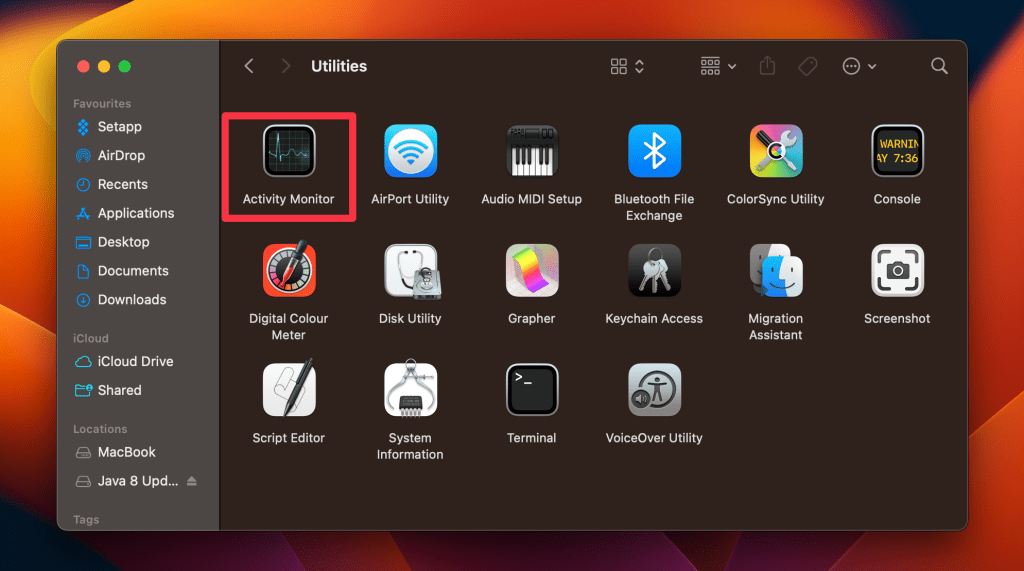
- In Activity Monitor, you’ll see a list of active processes sorted by their usage of system resources such as CPU, Memory, Energy, Disk, Network, or Cache .
- Identify the background process you want to terminate by browsing the list or using the search box at the top-right corner.
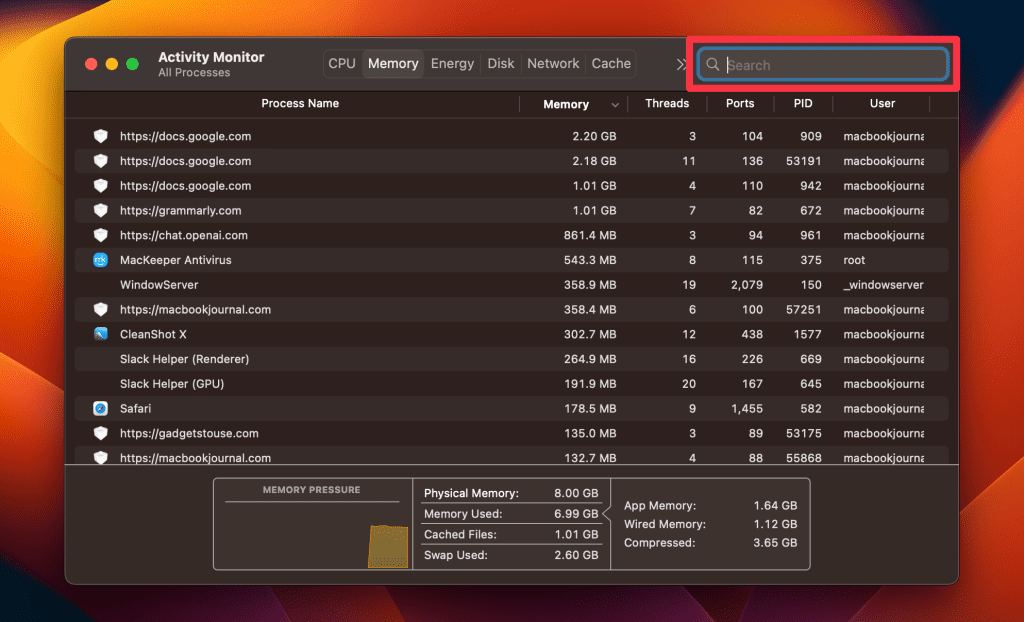
- Select the process you want to terminate to highlight it, and click the X button in the top toolbar.

- Click the Quit button in the confirmation window to terminate the selected process.
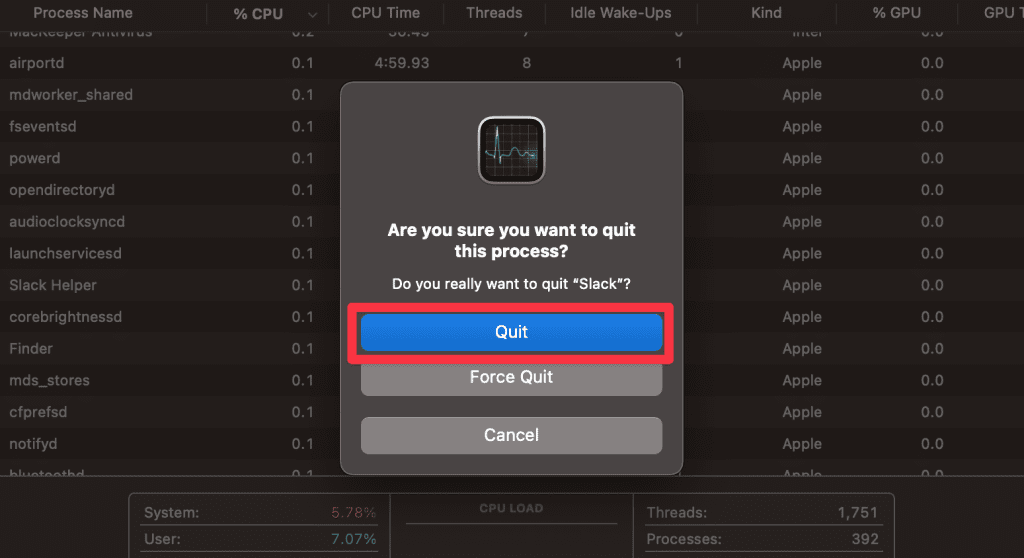
Alternatively, you can use MacKeeper’s Memory Cleaner to free up RAM on your Mac and kill background processes. Here’s how:
- Open MacKeeper and click Memory Cleaner under the Performance tab.
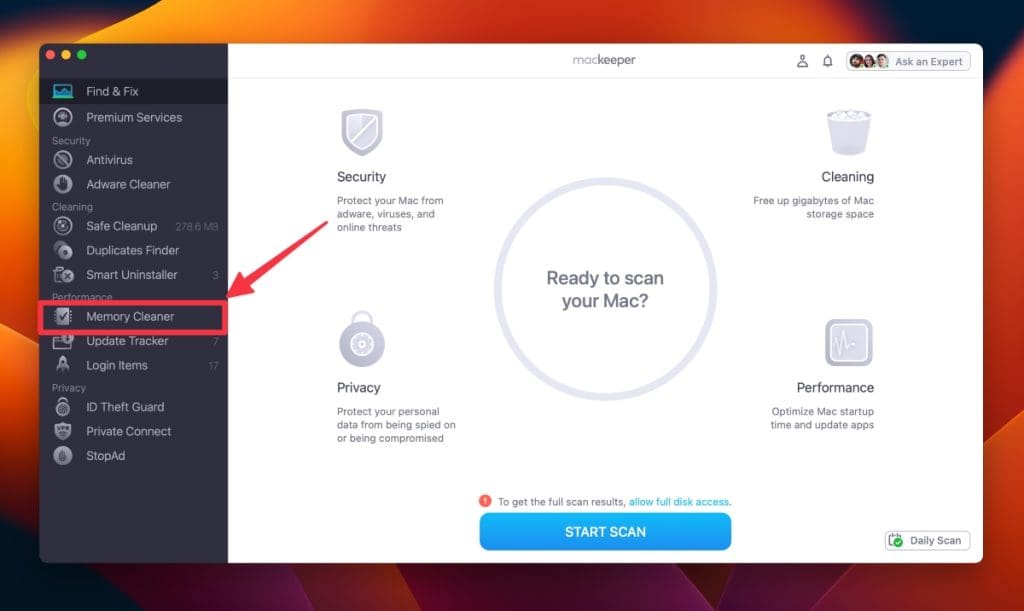
- Click Open .
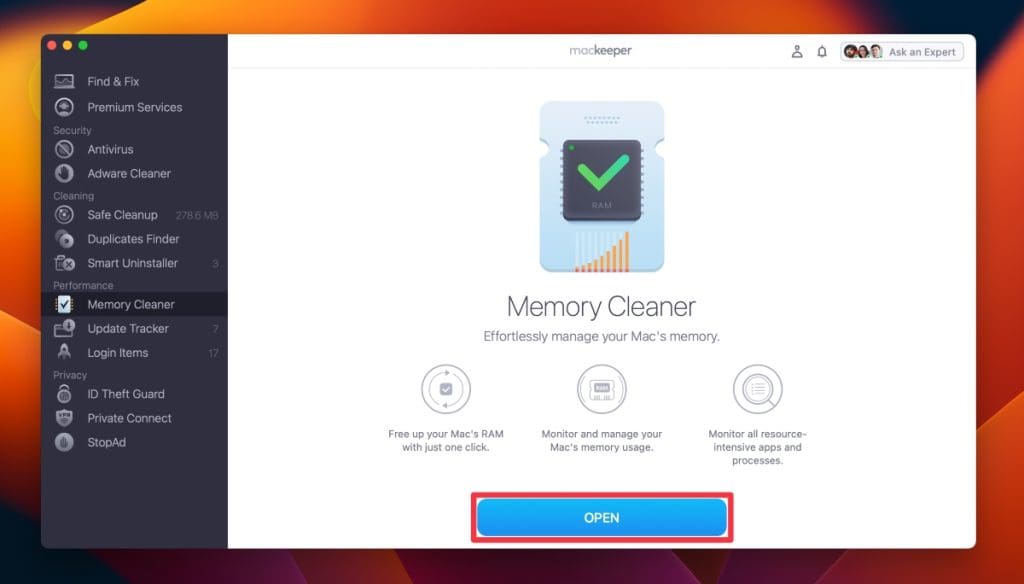
- Click Clean Memory .
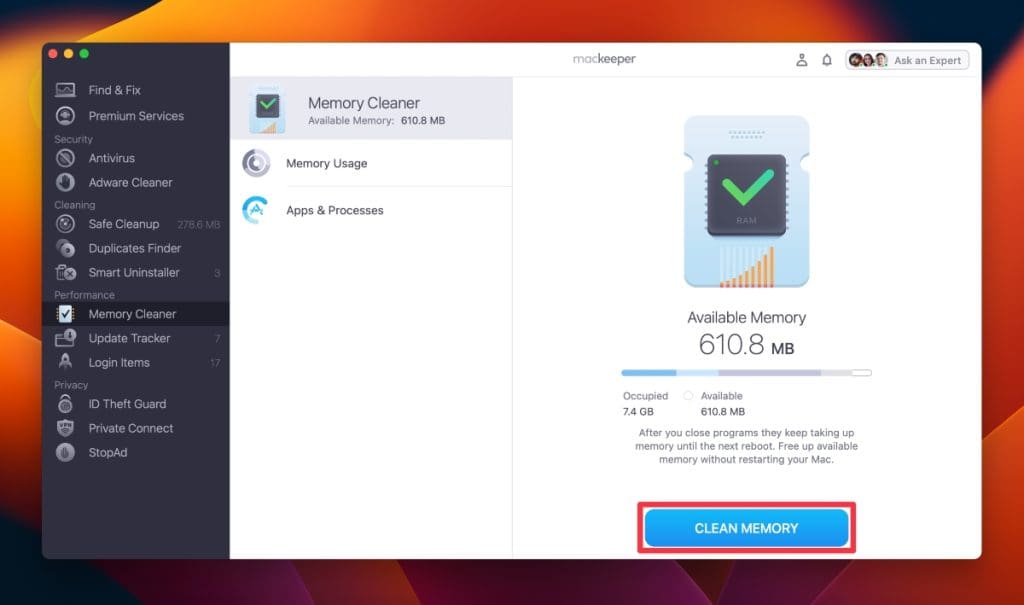
- It will clean your Mac and free up available memory. You can see how much memory it freed under Last Cleanup .
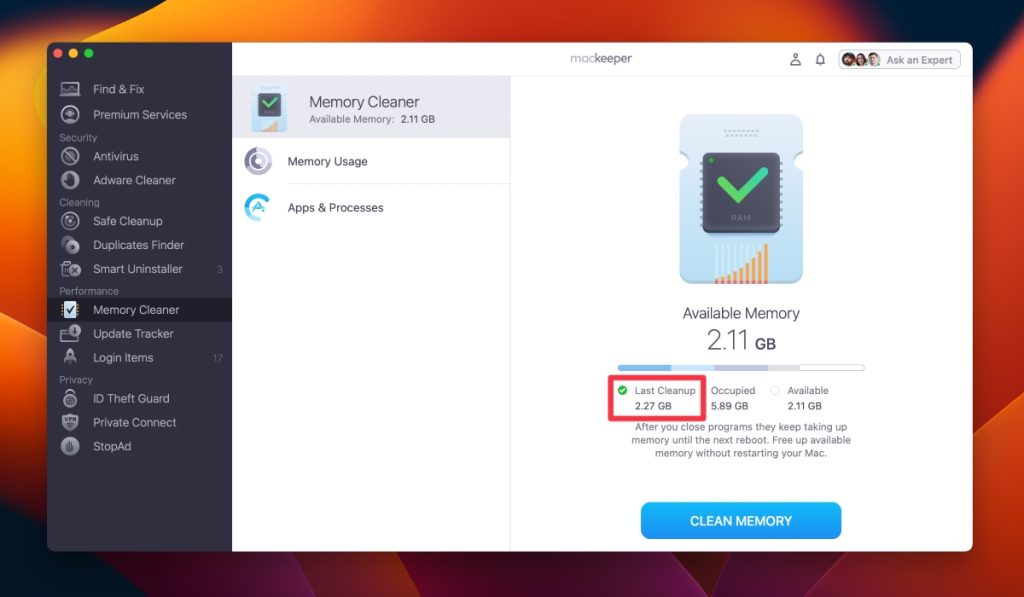
13. Reset Safari to Factory Defaults
Resetting Safari to factory defaults will remove all your settings, history, bookmarks, and other data. It’s like starting fresh with Safari, which can be helpful if the browser’s performance is severely affected by configurations or corrupted data.
Here’s how you can reset Safari to factory defaults:
- Before resetting, backup your bookmarks, saved passwords, and any other important data from Safari.
- Navigate to the Extensions tab and uninstall all extensions.
- Then, go to the Privacy tab and click Manage Website Data to remove all website data.
- Close Safari.
- Open Finder, click Go , and select Go to Folder .
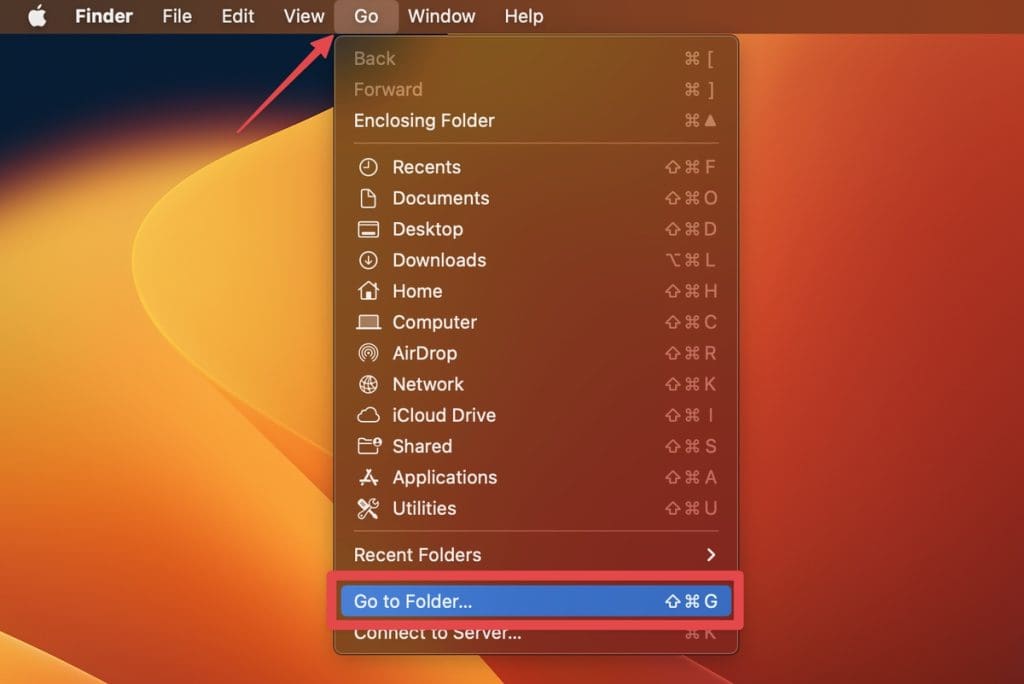
- Type the following path and press Enter :

- Locate the file named com.apple.Safari.plist and move it to the Bin.
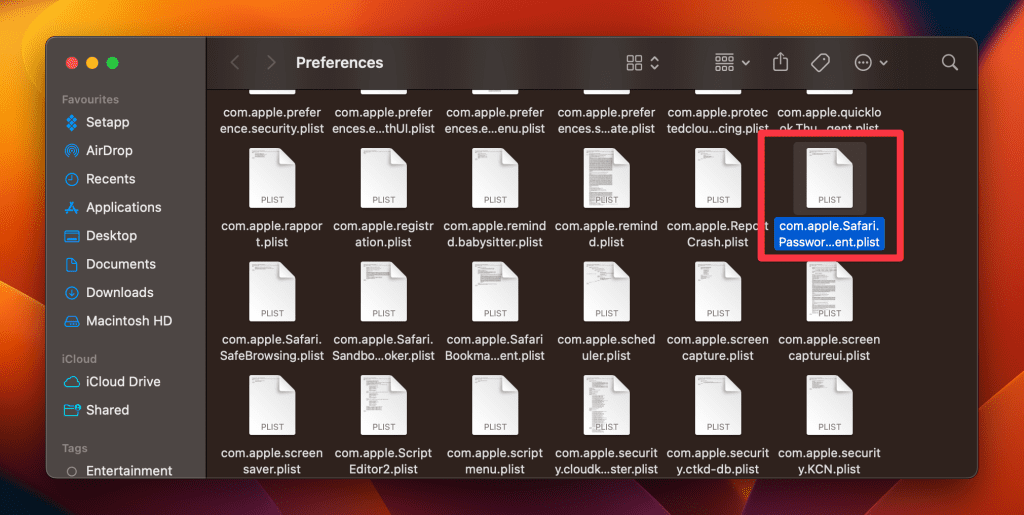
- Open Safari again. It should now be reset to its factory defaults.
14. Scan Your Mac for Virus
Malware and viruses can significantly degrade the performance of your Mac and affect Safari’s functionality. Running a thorough virus scan can identify and remove malicious software, potentially resolving any slowdowns in Safari.
Here’s how to run a virus scan on your Mac using MacKeeper:
- Download and install MacKeeper.
- Launch MacKeeper and navigate to the Antivirus tab in the left sidebar.

- Initiate an instant virus scan by clicking the Start Scan button.

- If any viruses are detected during the scan, click the Fix Items button to resolve the issues.
- If your system is threat-free, you’ll see a No threats found message. You can tap the Restart button to run the scan again.
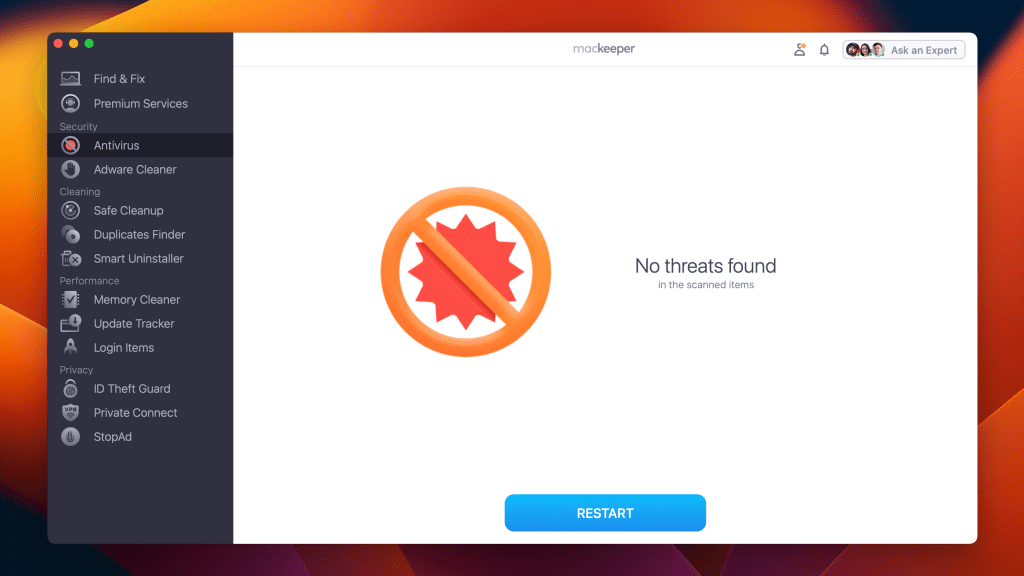
- Enable real-time antivirus protection to safeguard your Mac from future threats by clicking the Enable button.

Once you have configured your security settings, MacKeeper will continue to operate in the background, diligently scanning for threats and actively blocking any malicious activity.
What Else Can MacKeeper Do?
Besides removing browser extensions from Mac and scanning it for viruses, MacKeeper can remove junk files , uninstall applications , and optimize Mac storage . Check out my in-depth MacKeeper review to learn about all its features.
15. Boot Your Mac Into Safe Mode
Safe Mode starts your Mac in a basic state with only the essential system software. It checks for issues and deletes certain system caches, potentially resolving Safari’s performance problems.
Here’s how to boot your Mac in Safe Mode :
Apple Silicon Macs
- Click the Apple icon and choose Shut Down from the drop-down menu.
- Wait for your Mac to shut down completely, and press the Power button to turn it on.

- Keep holding the Power button until you see the Loading startup options screen.
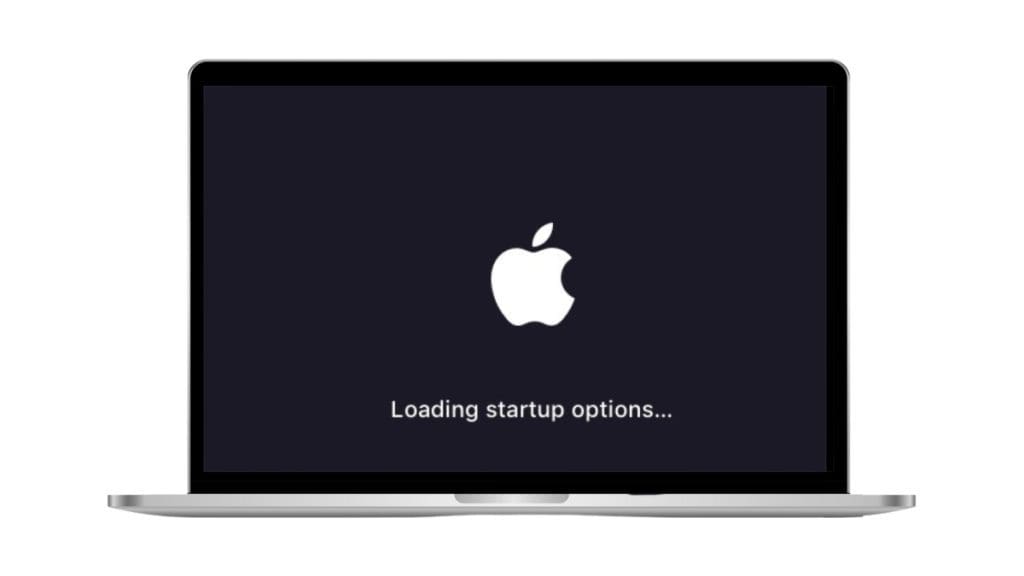
- Select a volume from the options.
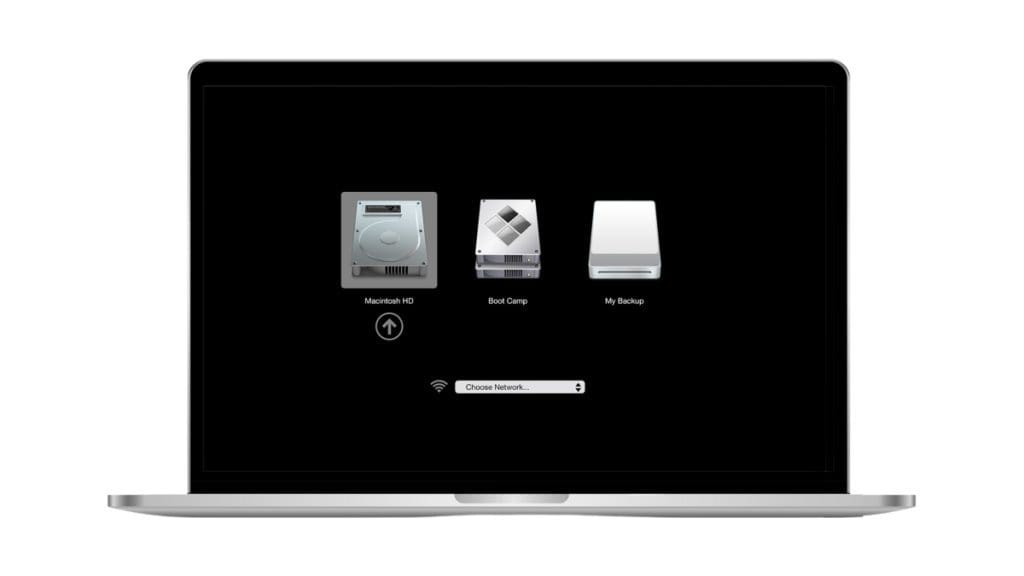
- Press and hold the Shift ⇧ key and click Continue in Safe Mode .

- Your Mac will restart automatically, and you will see Safe Boot in the menu bar when the login screen appears.
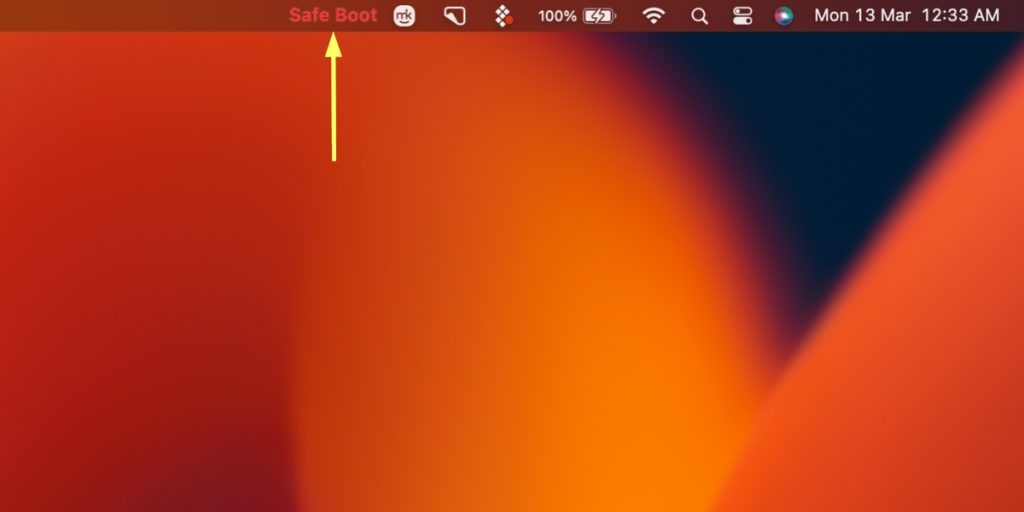
Intel-Based Macs
- Restart or turn on your Mac and press and hold the Shift ⇧ key immediately.
- Keep holding the Shift ⇧ key until you see the login screen.
- Release the Shift ⇧ key and log in to your Mac.
- You may be asked to log in again.
- You’ll see Safe Boot in the menu bar on your first or second login window.
Open Safari and navigate through various websites to assess whether the browser’s performance has improved in Safe Mode. After checking Safari’s performance, restart your Mac normally without holding any keys. This will exit Safe Mode.
Speed Up Safari on Your Mac
Navigating through a sluggish Safari can be a test of patience, but armed with the solutions outlined in this guide, you’re well-equipped to tackle any slowdowns head-on. To improve your Safai experience further, here are some more tips for you:
- If your Safari bookmarks disappeared on Mac , many ways exist to restore them without panicking.
- If you don’t want Safari to keep your browsing history, go incognito on a Mac in Safari browser .
- Some pop-ups can be a nuisance and slow down your browser. So, disable unnecessary pop-ups on Safari and improve its speed.
Frequently Asked Questions
Will i lose important data by resetting safari to factory defaults.
Yes, you will lose data by resetting Safari to factory defaults. It erases all your settings, history, bookmarks, and saved passwords, so back up important data like bookmarks and passwords before resetting to avoid losing valuable information. After the reset, you can restore the backed-up data as needed.
Is it safe to switch to a different DNS provider?
Yes, it is safe to switch to a different DNS provider like Google DNS or OpenDNS. It can even improve your internet speed and security. However, it’s crucial to ensure the DNS addresses are correct and from a trustworthy source to avoid any connectivity or security issues.
How often should I scan my Mac for viruses to maintain Safari’s performance?
You should regularly scan your Mac for viruses to maintain Safari’s performance. Ideally, once a week or monthly is advisable, but the frequency can vary based on your internet habits, the websites you frequent, and the types of files you download. Regular scans detect and remove malicious software promptly.
I'm Hashir, a tech journalist with a decade of experience. My work has been featured in some of the top tech publications like MakeUseOf and MakeTechEasier. I have a bachelor's degree in IT, a master's in cybersecurity, and extensive knowledge of Apple hardware, specifically MacBooks. As the senior writer at MacBook Journal, I write in depth guides that help you solve any issues you have with your mac and unbiased reviews that help you make the right buying decisions.
Hi there! I'm Ojash, a tech journalist with over a decade of experience in the industry. I've had the privilege of contributing to some of the world's largest tech publications, making my mark as a respected Mac expert. My passion lies in exploring, using, and writing about MacBooks, and I enjoy sharing my expertise to help others make informed decisions and get the most out of their MacBook experience. Join me as we delve into the fascinating world of MacBooks together!
You May Also Like
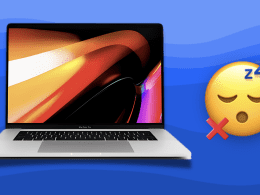
How to Stop a Mac From Sleeping: 5 Best Ways
Written by Hashir Ibrahim Reviewed by Ojash Last updated: October 8, 2023 Expert
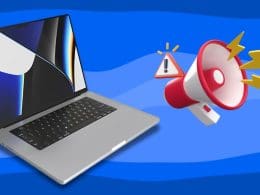
MacBook Speakers Crackling? 14 Best Ways to Fix Them
Written by Hashir Ibrahim Reviewed by Ojash Last updated: August 26, 2023 Expert
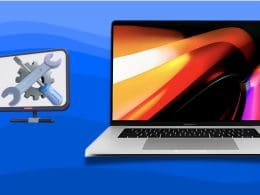
Written by Hashir Ibrahim Reviewed by Ojash Last updated: September 13, 2023
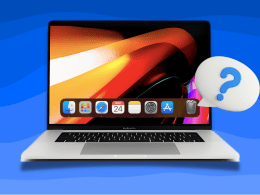
Dock Disappeared on Mac? Try These 12 Fixes
Restore your Mac's Dock with these simple steps
- How to Use Copilot In Word
- Traveling? Get These Gadgets!
Speed Up Safari With These Tuneup Tips
Keep your browsing experience speedy
Tom Nelson is an engineer, programmer, network manager, and computer network and systems designer who has written for Other World Computing,and others. Tom is also president of Coyote Moon, Inc., a Macintosh and Windows consulting firm.
In This Article
Jump to a Section
Keep Safari Updated
- Speed Up Safari
Delete the Cache
Delete browsing history, disable plug-ins, toss unused extensions.
If Safari is your browser of choice, you know that it's typically speedy and dependable. When your Safari browser slows down or is misbehaving in some way, and you've already established that your internet service is up and running, you can take a few actions that may return Safari to its previously snappy performance.
Instructions in this article apply to all versions of Safari.
Before you try the various tuneup techniques, update Safari if it isn't the current version.
Apple spends a lot of time developing the core technology that Safari uses. Having the most current version of Safari is one of the best ways to ensure a fast and responsive Safari experience.
Apple ties Safari updates to the version of macOS that you're using. To keep Safari up to date, you need to keep the Mac operating system up to date. If you’re a heavy user of Safari, it pays to keep OS X or macOS current.
How to Speed Up Safari
These tuneup tips can affect performance to varying degrees, but most of them offer only minor improvements in recent versions of Safari. Over time, Apple modified some of the routines in Safari to optimize performance. As a result, some tuneup techniques that created substantial performance increases in early versions of Safari result in only mild improvements in later versions. However, it doesn't hurt to give them a try.
Safari stores the web pages you view, including any images that are part of the pages, in a local cache, because it can then render cached pages faster than new pages the next time you visit the site. The problem with the Safari cache is that it eventually grows huge, causing Safari to slow down while it looks up a cached page to determine whether to load that page or download a new version .
Deleting the Safari cache can temporarily improve page loading times until the cache expands again and becomes too large for Safari to sort through efficiently, at which time you'll need to delete it again.
To delete the Safari cache:
Open Safari on your Mac.
Open Preferences under the Safari menu.
You can also open Preferences by pressing Command + , (comma) on your keyboard.
Select the Privacy tab.
Select Manage Website Data .
Click Remove All .
A warning message appears. Click Remove Now to clear the cache and cookies.
Select Done to close the window.
In older versions of Safari, select Empty Cache under the Develop menu or press Option + Shift + E on your keyboard.
If you don't see Develop, here's how to enable Safari's Develop menu .
Safari maintains a history of every web page you view, which has the practical benefit of letting you use the forward and back buttons to load recently viewed pages. It also lets you go back in time to find and view a web page that you forgot to bookmark.
The history is helpful, but like other forms of caching, it can become a hindrance. If you only visit a few pages a day, that's not a lot of page history to store. If you visit hundreds of pages each day, the History file can quickly get out of hand.
To delete the history in Safari:
Select Clear History from History in the Safari menu bar.
Select all history from the drop-down menu next to Clear . Other options include the last hour , today , and today and yesterday .
Choose Clear History .
You may have tried out a Safari plug-in that provided what appeared to be a useful service, but after a while, you stopped using it because it didn’t meet your needs. At some point, you forget about these plug-ins, but they're still in Safari, consuming space and resources.
To remove unused plug-ins:
Choose Safari > Preferences from the Safari menu bar.
Click the Websites tab.
Find the plug-ins at the bottom of the left panel and deselect unused plug-ins by removing the check in the box next to it.
Don't automatically deselect every plug-in without reading its name and deciding you don't need it. You may be using a plug-in without being aware of it. Click on any active plug-in for information about it.
Extensions are similar in concept to plug-ins. Both provide capabilities that Safari doesn't have on its own. Just like plug-ins, extensions can cause issues with performance when there are a large number of extensions installed, the extensions are competing, or the extensions have origins or purposes you've long since forgotten.
To get rid of unused extensions:
Choose Preferences from the Safari menu.
Select the Extensions tab.
The extensions are listed in the left panel. Deselect an unused extension by removing the check from the box next to it.
Highlight an extension and choose the Uninstall button to remove it completely.
Get the Latest Tech News Delivered Every Day
- How to Reset Safari to Default Settings
- 3 Ways to Clear Cache on an iPad
- How to Manage Browsing History on Safari for iPad
- Add More Features by Turning on Safari's Develop Menu
- How to Clear Search History on iPhone
- How to Clear Private Data, Caches, and Cookies on Mac
- How to Manage Cookies in the Safari Browser
- Mac Running Slow? 7 Performance Tips to Speed Things Up
- How to Clear Internet Cache in Every Major Browser
- Search History: How to View or Delete It
- How to Manage History and Browsing Data on iPhone
- How to Manage Your Browsing History in Safari
- Managing History and Other Private Data in Safari for macOS
- How to Activate and Use Responsive Design Mode in Safari
- How to Clear Your iPhone Cache
- How to View, Manage, or Remove Safari Plug-Ins
How to Speed up Safari on Your Mac
In this article you will find the following:
Safari is the fastest browser on the Mac, but it isn't immune from slowdowns and performance issues. If web pages take longer to load or site navigation doesn't feel responsive, read on to learn how to speed up Safari on Mac.
- How to speed up Safari on Mac
Is Safari running slow on your MacBook, iMac, or Mac mini? Connectivity issues, unoptimized extensions, cache corruption, and a host of other reasons often cause that. Try the suggestions in our guide to get Safari running smoothly on Mac again.
Before you start If you want to speed up Safari on Mac quickly, download MacKeeper . It's an Apple-notarized maintenance utility that helps prevent browser slowdowns and other Mac-related issues. MacKeeper lets you free up the RAM, delete unwanted Safari extensions, get rid of junk files, and more with considerably less hassle than manual maintenance. You get one fix for free, so don't hesitate to check if it works for you.
Check if your internet's slow
If webpages in Safari take too long to load or fail, it's a good idea to begin by figuring out if it's just a matter of your internet being slow. The best way to do that is to use an online speed checker like Fast.com or SpeedTest.net .
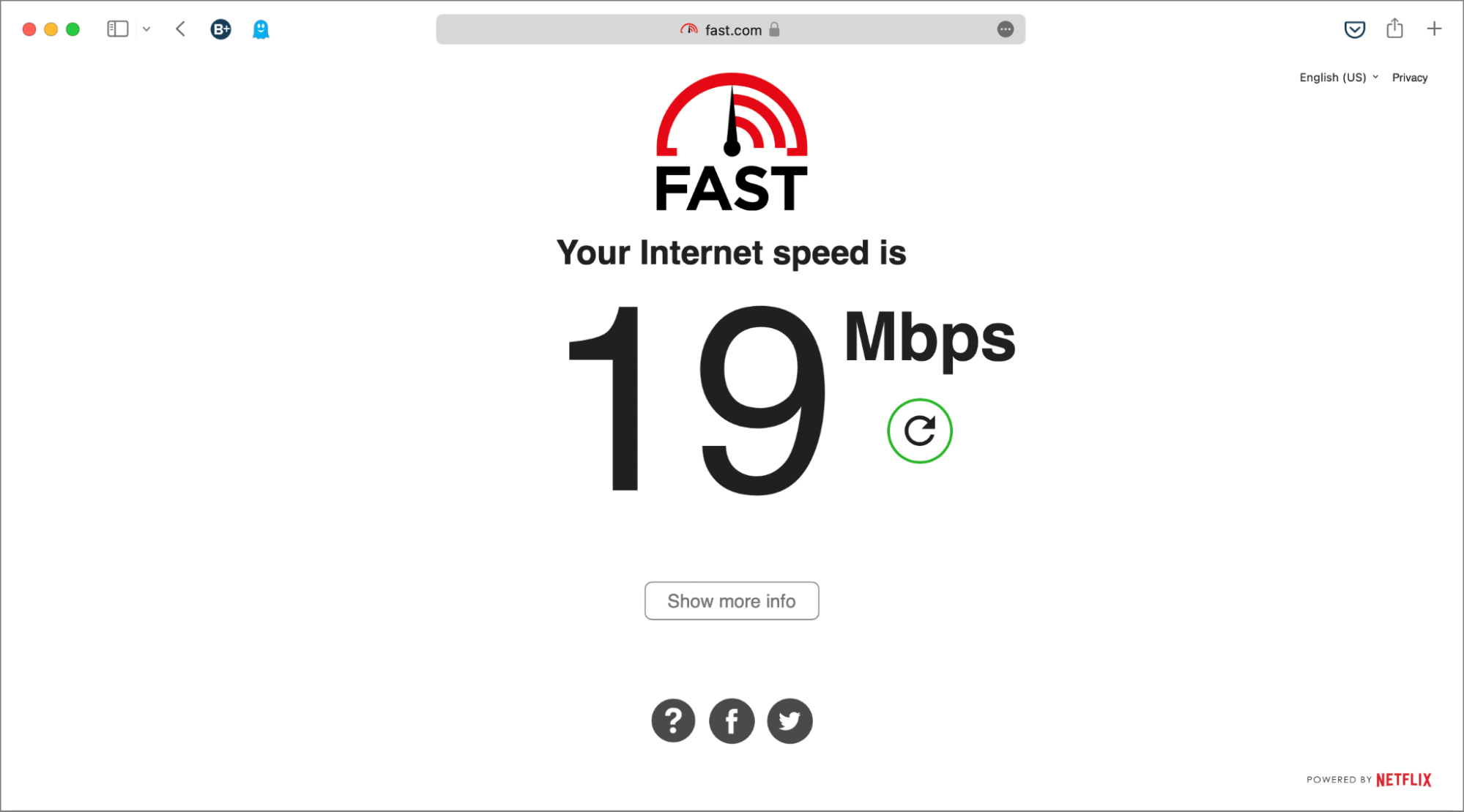
Restart your router if you find that your internet isn't uploading or downloading at a decent rate. If that doesn't speed it up, learn what else you can do to fix a slow internet connection on Mac .
Also, don't discount server-side issues. If the problem is limited to a specific site, use a website monitoring tool such as Downdetector to determine if you're dealing with a server outage.
- Close unnecessary tabs in Safari
Although Safari is adept at handling dozens of tabs, having too many open simultaneously will eventually take its toll on your Mac's memory. That creates delays while loading new pages, and the performance hit could also result in erratic browser behavior.
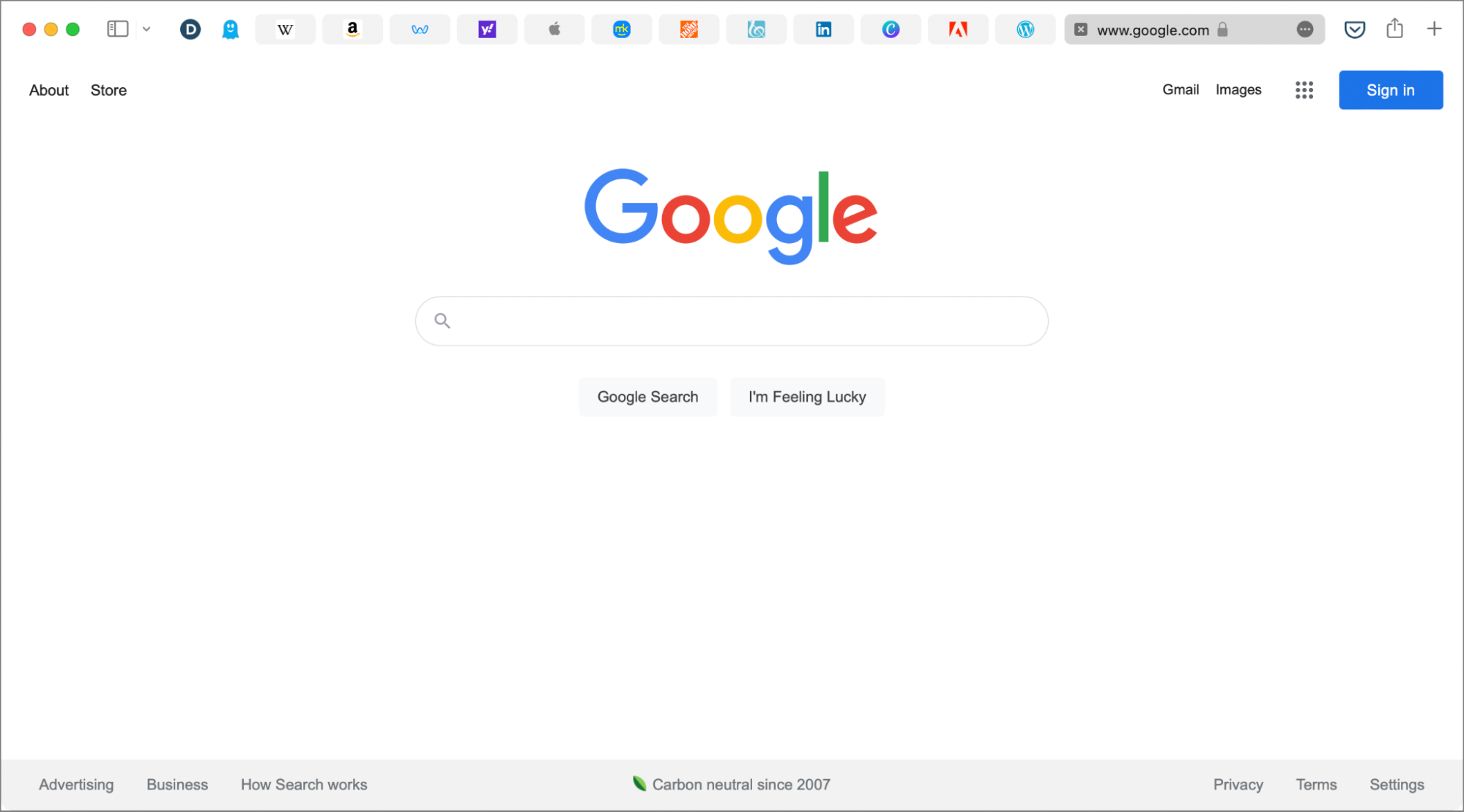
The quickest way to speed up Safari on Mac is to shut down unnecessary tabs as soon as you notice any slowdowns. Getting used to moving between and closing tabs using the Ctrl + Tab and Command + W keyboard shortcuts can make the process even faster.
- Shut down apps and resource-intensive processes
Tabs aside, Safari will run slowly on the Mac if you have too many applications open. Check your Mac's Dock and quit anything you aren't actively using. Try force-quitting troublesome programs if you can't close them normally.
On the other hand, various apps and related processes can spin out of control and consume too much processing power and memory. Use the Activity Monitor to locate and stop them.
- Open the Launchpad and select Other > Activity Monitor
- Sort your Mac's activity using the % CPU column and shut down any third-party processes that use a significant amount of CPU
- Switch to the Memory tab and stop third-party items that use lots of RAM.
If you always end up pushing the hardware on your Mac to its limits, consider using MacKeeper's Memory Cleaner feature to keep things under control.
- Disable unnecessary Safari extensions
Running Safari with multiple extensions increases the load on the CPU and RAM. That translates to slower browser performance, so review your list of browser add-ons and disable any items you don't regularly use.
- Open Safari and select Safari > Preferences on the menu bar
- Switch to the Extensions tab
- Clear the boxes next to any extensions you want to disable.
Our team highly recommends you update Safari extensions periodically via the Mac's App Store to ensure they run in top shape. If you notice anything suspicious, learn how to remove malicious browser extensions and toolbars from your Mac.
- Switch DNS servers for Wi-Fi and Ethernet
DNS (short for Domain Name System) is a cataloging system that matches domain names with IP addresses. Not all DNS providers are fast, so changing your Wi-Fi or Ethernet's DNS settings to a popular service like Google DNS can speed up Safari on Mac. For best results, clear the DNS cache on your Mac before you begin .
- Open the Apple menu and select System Preferences
- Select the Network category
- Select Wi-Fi/Ethernet > Advanced
- Switch to the DNS tab
- Select OK > Apply to save your changes.
- Clear the Safari cache and cookies
Like most web browsers, Safari caches various forms of site data — images, HTML files, and JavaScript code — to improve load times in subsequent visits. However, a bloated or corrupt cache can adversely impact performance and result in Safari running slow on the Mac. You can clear the Safari cache after activating its hidden Develop menu .
- Switch to the Advanced tab and check the box next to Show Develop menu in menu bar
- Select Develop on the menu bar and pick the Empty Caches option.
Corrupt, outdated, or privacy-invasive browser cookies can also slow down Safari. If deleting the Safari cache didn't make much difference, try deleting its cookies next.
- Select Safari > Clear History on the menu bar
- Set Clear to All history
- Select Clear .
Update the Safari browser
Safari receives occasional bug fixes and performance enhancements from Apple, and these arrive alongside regular macOS updates .
To update your Mac:
- Select Software Update
- Wait until the Software Update tool checks for newer macOS updates and select Update Now to install any pending updates.
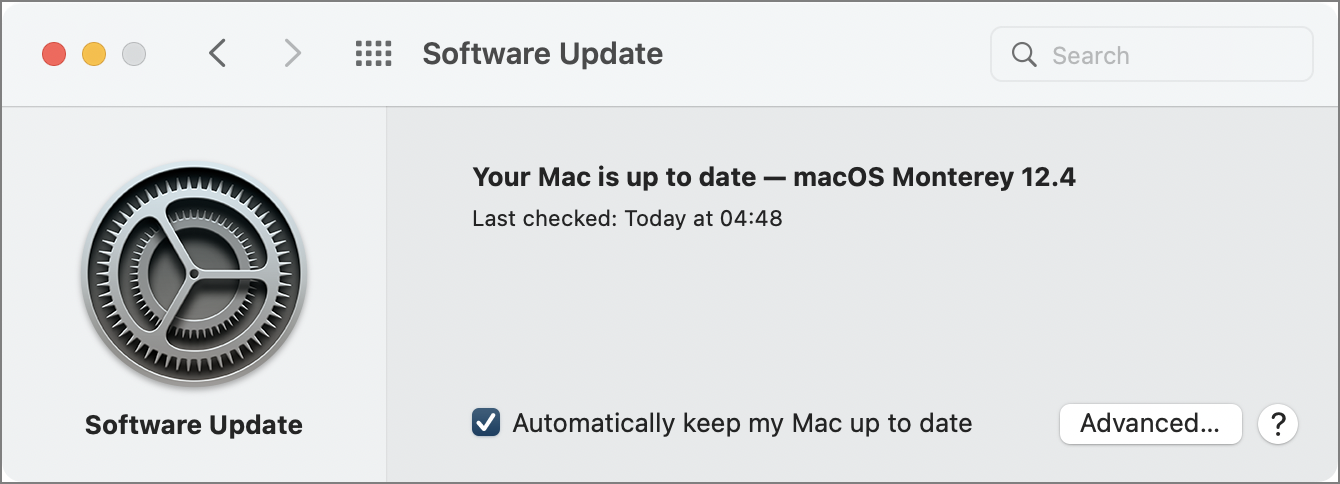
Even if a new macOS update doesn't include anything Safari-related, installing it will still improve general performance across native apps. Make it a point to install macOS updates as soon as possible.
- Reset Safari to factory defaults
Corrupt browser preferences and other underlying issues can also play a factor, so sometimes, the only way to fix a slow instance of Safari on Mac is to reset it to factory defaults.
A Safari reset deactivates all extensions and reverts each browser setting to its defaults, allowing you to start over with a clean slate. You will not lose your bookmarks or passwords during the process.
- Save your work and exit Safari
- Open Finder, select Go > Go to Folder on the menu bar, and visit the ~/Library/Preferences/ directory
- Search for com.apple.Safari.plist file and delete it
- Reopen the Go to Folder box and visit ~/Library/Safari/ . Then, delete each item within the folder except the Bookmarks.plist file
- Visit ~/Library/Containers/ , search for Safari, and delete all files and folders that appear among the search results
- Open Safari and visit its Preferences pane to reactivate any essential extensions. Also, move between tabs and modify your browser settings the way you want.
- Boot your Mac into Safe Mode
If none of the fixes above help speed up Safari, try booting your Mac into and out of Safe Mode. That helps flush out various forms of temporary data that can interfere with Apple's browser.
On an Intel Mac, you can get to Safe Mode while holding down the Shift key during the reboot phase. However, if you use an Apple Silicon Mac, you should:
- Shut down your Mac
- Turn it on but keep holding the Power button until you get to the Startup Options screen
- Hold the Shift key and select Macintosh HD > Safe Mode .
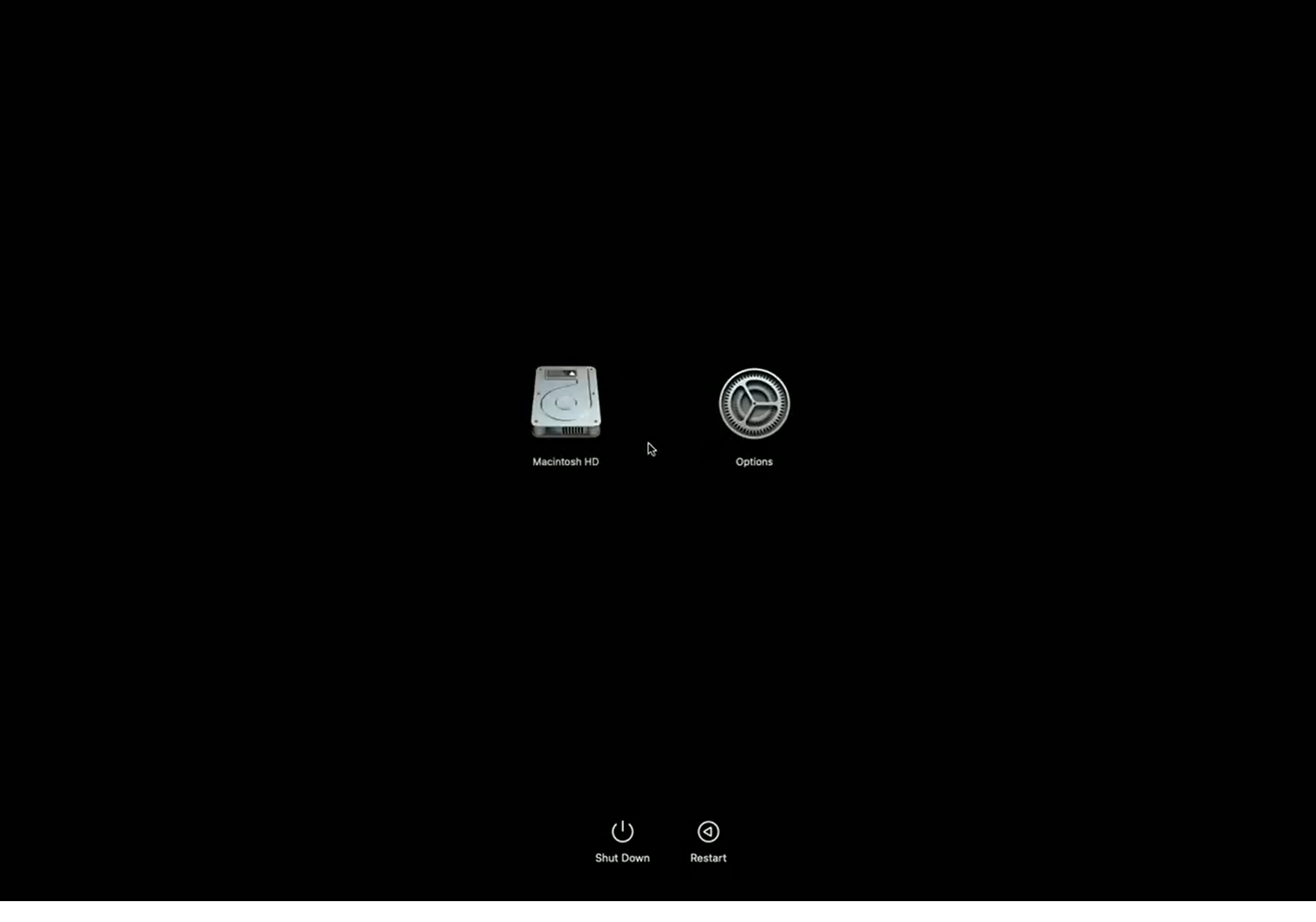
In Safe Mode, repeat the fixes above if you could not complete them earlier. Then, restart your Mac normally. To delete additional forms of temporary data that can slow down Safari, learn how to delete your Mac's application and system caches .
- Full steam ahead
Keeping Safari in top shape is crucial for a great web browsing experience. Avoiding too many open tabs, shutting down unwanted apps and processes, and cutting down on the number of active extensions can go a long way toward making that happen. Occasionally clearing the Safari cache and keeping your Mac up-to-date will significantly minimize browser slowdowns and other issues. If manual Mac maintenance feels like a drag, don't forget to download MacKeeper .
- How to Clear Cookies on Mac in Safari, Chrome & Firefox
- How to Easily Remove Bookmarks on Mac
- How to Clear Purgeable Space on Mac
You’ll love exploring your Mac with us.
Oops, something went wrong.
Try again or reload a page.
- Check if your internet's slow

- Delete unnecessary system files and caches
- Free up GBs of storage space
- Easily find and delete duplicate files
Safari running slow on Mac? Speed it up with MacKeeper.

MacKeeper - your all-in-one solution for more space and maximum security.

We respect your privacy and use cookies for the best site experience.
Privacy Preferences Center
We use cookies along with other tools to give you the best possible experience while using the MacKeeper website. Cookies are small text files that help the website load faster. The cookies we use don’t contain any type of personal data meaning they never store information such as your location, email address, or IP address.
Help us improve how you interact with our website by accepting the use of cookies. You can change your privacy settings whenever you like.
Manage consent
All cookies
These cookies are strictly necessary for enabling basic website functionality (including page navigation, form submission, language detection, post commenting), downloading and purchasing software. The website might malfunction without these cookies.
Download MacKeeper when you're back at your Mac
Please enter your email so we can send you a download link
Check your email on your Mac
Install MacKeeper on your Mac computer to rediscover its true power.

Run Application

Click Continue

Click Install

Your macOS version is lower than OS 10.11. We’d like to offer you MacKeeper 4 to solve the cleaning, privacy, and security issues of your macOS.
- Best Video Converters
- The Best Video Downloaders for Windows

“Downloading Do Not Turn OFF The Target!” Error In Samsung
- The Best Network Monitoring Tools
- The Best TVs for Xbox Series X

‘IP address conflict’ – How To Manage & Fix
- Best Laptops Under $300
- Best Laptops Under $500

10 Alternatives to Trapcall
- Social Media
- Cut the Cord
TechJunkie is a BOX20 Media Company
Home PC Mac Safari How To Speed Up Safari
How To Speed Up Safari

I use a Mac, so the examples I use are based on that. If you use Safari on iOS, most of the same techniques will apply but the menu options might be slightly different.
Keep Safari current
The most important way to keep Safari in tip top condition is to keep it updated. Apple is constantly tweaking Safari and often rolls out updates, and many of those updates incorporate speed improvements in the code. As well, operating system updates can make a performance difference, so make sure to keep both Mac OS X and Safari updated at all times.
Clean out the cache
Every time you browse to a new web page, and every time a page you visit frequently changes its content, Safari downloads more information into the cache. As files are added to the cache, the more information Safari has to sift through every time you look at a page, and the slower things get. It’s a good idea to regularly clear out your cache, especially if you’re a heavy internet user. Cleaning out your cache is easy.
- Open Safari on your Mac.
- Click Safari in the menu bar and select Preferences.
- Select Advanced and Show Develop menu in the menu bar.
- Select the Develop link in the menu and select Empty Caches.
Perform this on a weekly or monthly basis depending on how much you use Safari, or how quickly it slows down.
Disable unnecessary extensions
Browser extensions are an excellent accessory to any surfing experience but they can quickly get out of hand. I test browser extensions as part of my day job so I can have up to 40 installed at any one time. Every now and again I have to go into Safari and delete those I no longer use. You would be amazed at the difference in speed afterwards!
- Select Develop and Disable Extensions. This will disable all extensions running in Safari to see if they are slowing things down. If the browser is noticeably faster, enable extensions once more. If it isn’t faster, then the extensions weren’t the problem and you can skip the disabling process.
- Click the Safari menu and then Preferences.
- Navigate to the Extensions tab and Uninstall any extensions you no longer use or could live without.
Control your plug-ins
Like extensions, plug-ins can add utility to Safari in literally hundreds of different ways. They can also slow browsing down as every time you enter a command or do something within Safari, the browser has to check with each active plug-in that the command you just entered is okay with them. Reducing the number of active plug-ins at any one time shortens this query time, which speeds up surfing.
- Select Help and Installed Plug-ins.
- Select plug-ins you don’t use and delete them.
- Open the Safari menu and select Preferences.
- Select Security and Plug-in settings.
- Configure any plug-ins you do use here. You can turn them off for specific sites or set them to ask you to allow them to work.
Change your DNS servers
The DNS servers you use have a huge impact on how fast your browsing experience is. While adjusting the DNS settings isn’t exactly a Safari tweak, it is an important area of performance improvement and worth knowing how to do.
- Test your DNS options using Google Namebench .
- Navigate to System Preferences on your Mac.
- Select Network and Advanced.
- Select the DNS tab and the little + icon underneath the left pane.
- Add the two fastest DNS IP addresses Google Namebench found and click OK.
Disable DNS Prefetch to speed up Safari
DNS Prefetching is a great option in theory but doesn’t always work out in practice. Whenever you land on a webpage, prefetch queries all links on that page and gets the DNS records for each and every one ready for if you need it. On larger pages, and especially on pages with a lot of links, this can cause quite a bit of overhead for both Safari, your computer and your router. Turning it off can seriously speed up your browsing experience.
- Launch Terminal on your Mac.
- Type or paste ‘defaults write com.apple.safari WebKitDNSPrefetchingEnabled -boolean false’ and hit Enter.
- Quit Terminal.
The command disables DNS prefetch, stopping Safari sending all those DNS queries every time you land on a page. If you find you don’t like it, or it slows your web experience down, you can restore the default settings just as easily.
- Type or paste ‘defaults write com.apple.safari WebKitDNSPrefetchingEnabled’ and hit Enter.
Clear your browsing history
A quick way to speed up Safari is to clear your browsing history. Safari keeps a record of everywhere you go online, which can end up as hundreds or thousands of pages, or even more. Keep your history brief to keep it fast.
- Select History and Clear History.
- Select the time period to clear history from and select OK.
If you haven’t done this in a while, this could potentially speed up Safari significantly, not to mention free up quite a bit of disk space.
Change the network order
If you use a MacBook Pro or other Apple laptop, it is likely that you have a list of network options to choose from. When you first boot Safari, it will take a few seconds to select a network before connecting. You can speed up that process by eliminating options that you know you won’t ever use. (For example, a wifi network in an airport you don’t visit regularly.)
- Select System Preferences from Dock.
- Select Network and look at the network list in the left pane. If there is more than one or two options in there, it can slow down connection.
- Highlight a network you no longer need and click the little minus icon at the bottom of the pane.
- Select the little gear icon and Sort Service Order. Here you can increase the priority of your home Ethernet or Wi-Fi network to ensure that Safari always select it first.
This tweak doesn’t just speed up Safari but also works to boost the speed of any app that uses the network.
Those are just some of the many ways you can speed up Safari. If you have had success with any other techniques, please share them with us below!
How To Make Your Very Own Kik Bot
Leave a Reply Cancel reply
Your email address will not be published. Required fields are marked *
Jul 23, 2018
944 Articles Published
You May Like

How to Fix Netflix Error Code M7353
May 20, 2020

How to Get Around ‘the Requested URL Was Rejected. Please Consult with Your Administrator’
Anna Middleton
Feb 12, 2020
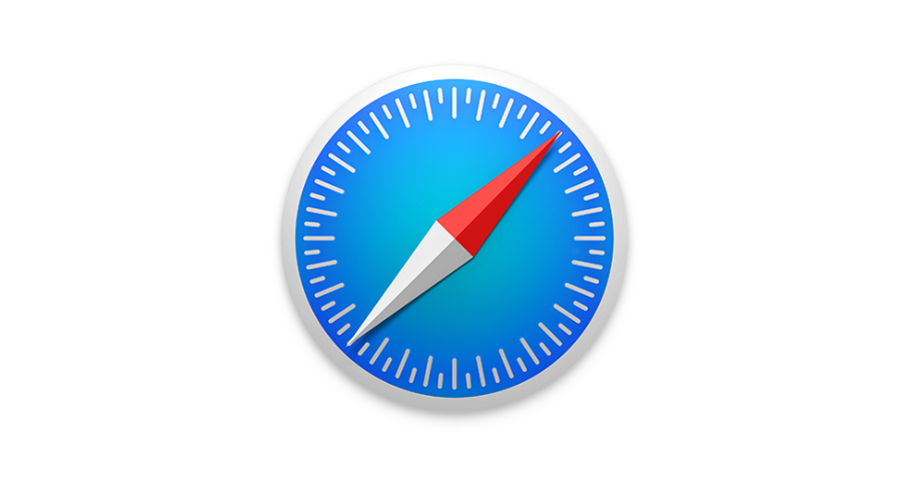
How To Allow Popups in Safari
Jul 16, 2019

Philo TV Review [July 2019]
Jul 1, 2019

How To Hide Bookmarks in Chrome or Firefox
May 15, 2019

TORRAS Ostand Power Banks: Top 5 Features You Must Know
Namrata Gogoi
Apr 3, 2024

How to Use Facebook Marketplace Without Facebook Account
Ashish Mohta
Mar 15, 2024

How To Text Someone from a Different Phone Number (Not Your Own)
Ronil Thakkar
Mar 13, 2024

How to Change Your Name in Zoom
May 31, 2021

How To Filter By Color in Google Sheets
Robert Hayes
Jan 15, 2020
Copyright @2024 TechJunkie

We do not use any AI writing tools. All our content is written by humans, not robots. See our editorial process .
Why is My Safari So Slow on Mac and How to Fix It
Whether you use the Safari internet browser for your everyday work, school work, online shopping, or simple internet browsing, having it work slowly can be extremely frustrating. This is completely understandable, but don’t worry we are here to help!
As someone who frequently helps people fix up their slow Macs, I can say from experience that Safari can often be the cause of a lot of problems. But the good news is that you don’t have to put up with Safari running slowly—there are a few quick troubleshooting tips you can use to get back in business.
Let’s explore why Safari is running so slow on your Mac and how you can fix it.
Table of Contents
Key Takeaways
Solution #1: verify your internet connection, solution #2: force quit safari, solution #3: update macos, solution #4: close excessive tabs, solution #5: disable extensions, solution #6: turn off icloud private relay – icloud+ only, solution #7: disable search engine suggestions, solution #8: disable autofill, solution #9: update dns server, solution #10: run first aid on ssd , safe mode – intel mac, safe mode – apple silicon mac, solution #12: use a 3rd-party web browser cleaner, final thoughts.
- Safari has many features that attempt to either help you as the user or make the experience faster. Unfortunately, Safari can sometimes get bogged down.
- Your internet connection should be one of the first things you check. Make sure everything is functioning properly here.
- You can get Safari out of a jam by Force Quitting , and reopening.
- If that doesn’t work, you can check your extensions , your iCloud Private Relay , and Autofill to ensure that your Safari is running as fast as possible.
- The DNS server can sometimes cause issues with Safari running slowly, so make sure that it is updated.
- If none of that works, you can also check to make sure your boot drive and your startup options are working properly. Run First Aid on your SSD and boot into Safe Mode to finish troubleshooting.
While Safari is preinstalled on your Mac and is updated using macOS, this doesn’t mean that it will always work perfectly. When Safari runs slow on your Mac, it can put a damper on your whole experience. You end up waiting on your computer and getting frustrated. So, what is causing this? And how can you fix it?
Here are some ways that we can hopefully get your Safari speed up.
This may sound obvious, but you may be surprised how easy it is to overlook losing your internet connection or other connection problems. Safari may not be working or may be running extremely slowly because of a faulty internet connection.
There are multiple items that could affect your internet connection. Be sure to verify all of the following:
- You have full internet connectivity from your internet provider (if you are able to reach it, speedtest.net is a good way to determine if your internet is working to its fullest capacity).
- Your modem and/or router are in working condition (the lights on the device will help you determine this. Look at or find the owner’s manual for your device if you have questions)
- There are not too many devices on your network (I would recommend taking off some that you may not think of and are not currently using, such as phones, tablets, gaming consoles, and smart home devices).
By force quitting the Safari application , we are forcing any processes that may be stuck to stop. This can help Safari fully restart and stop trying to load something that may not be properly loading. To force quit Safari, take the following steps:
Press the Command-Option-Esc keys simultaneously on your keyboard.
Choose Safari from the menu and choose Force Quit .
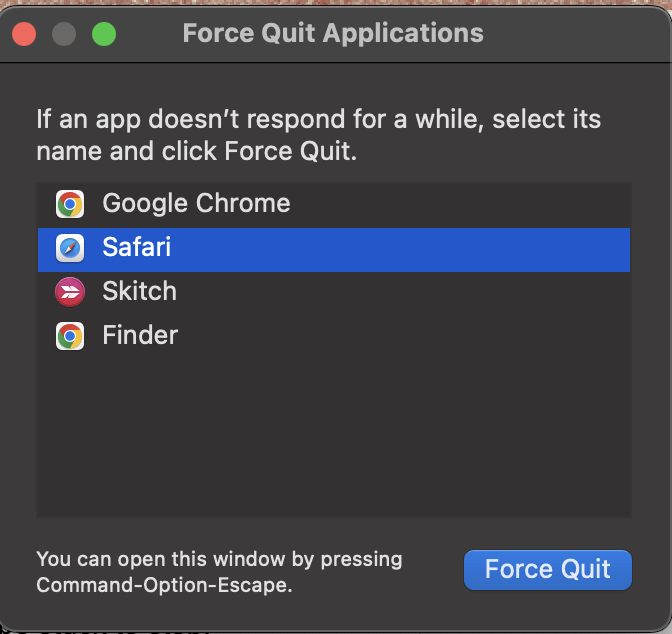
Click on Force Quit to confirm.

As we have briefly discussed earlier, Safari is an application that is fully managed by Apple and updated along with macOS. So, if there is a problem with the Safari application itself, it is likely that Apple already knows and has released a patch to address it.
To ensure your Mac is up to date with the latest version, take the following steps:
Using the Apple Menu, choose System Settings from the drop-down.
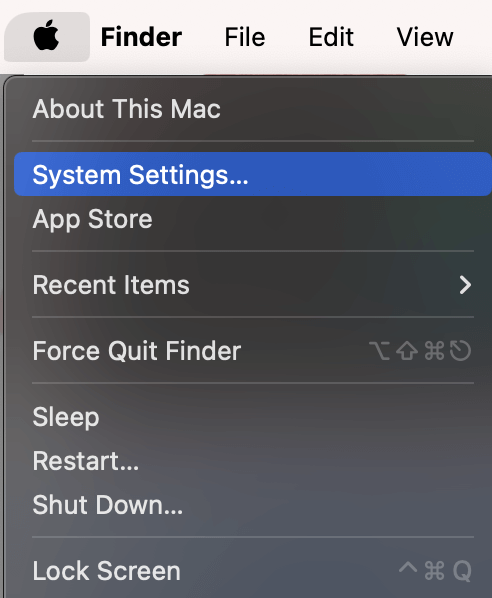
Navigate to General on the left, then Software Update on the right.
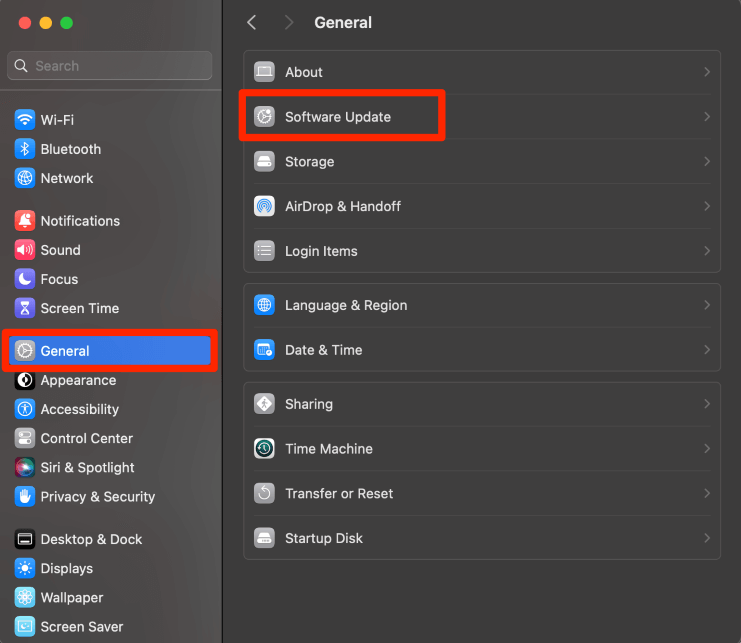
If there is a software update available, choose Update Now and follow the onscreen prompts to update macOS.
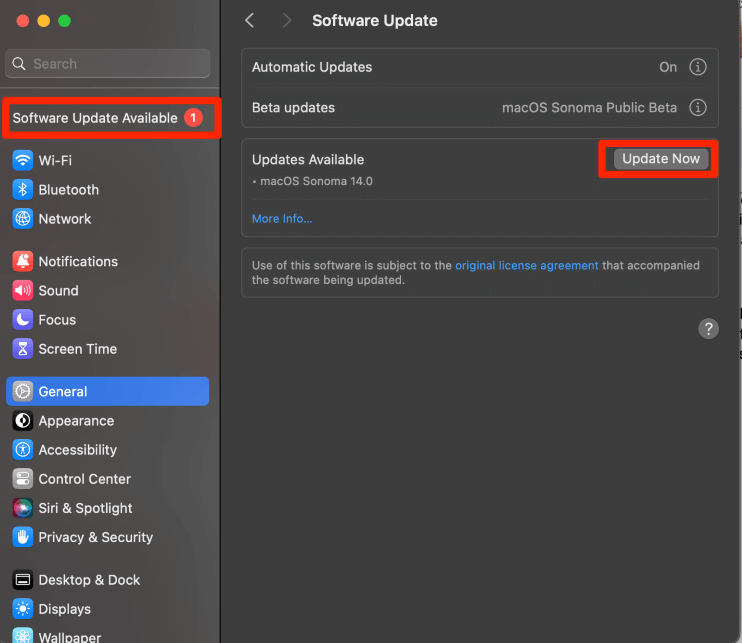
If you are someone who never closes your browser tabs and has dozens of pages open at once (like I am guilty of doing most of the time), then I would suggest closing a good amount of them to get Safari working at a better speed.
Having a large amount of tabs open, even ones that are not currently in use, uses not only a lot of processing power but also a lot of Random Access Memory (RAM) .
Both of these items have a large impact on how the applications on your Mac run and can cause the Safari application to slow down significantly. So, close all possible tabs.
Extensions, also known on some internet browsers as plug-ins can be very helpful features. The most popular of these are ad blockers, coupon finders, and grammar checkers. If you use any of these or others, it is possible that they could be slowing down your Safari.
It is also possible that extensions could have been inadvertently downloaded from the internet and enabled themselves. Check to make sure that there are no unrecognized extensions or an excessive amount of extensions enabled.
With Safari Open, click the Safari menu and Settings from the drop-down.
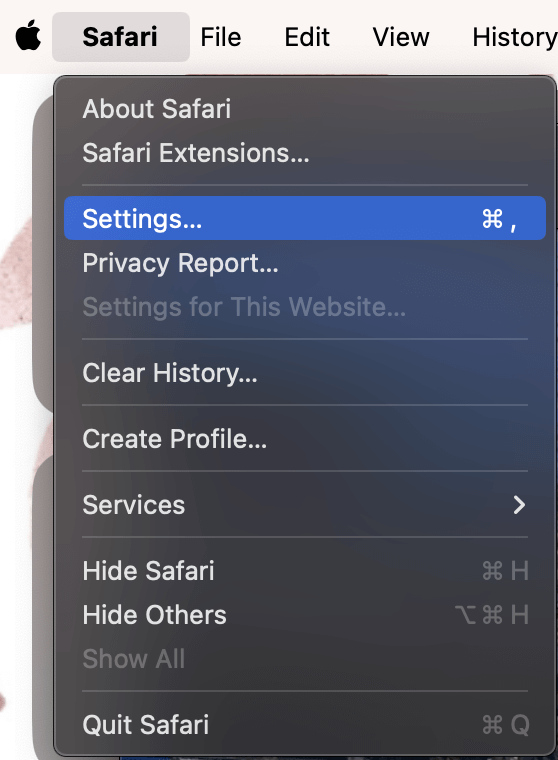
On the top, choose Extensions .
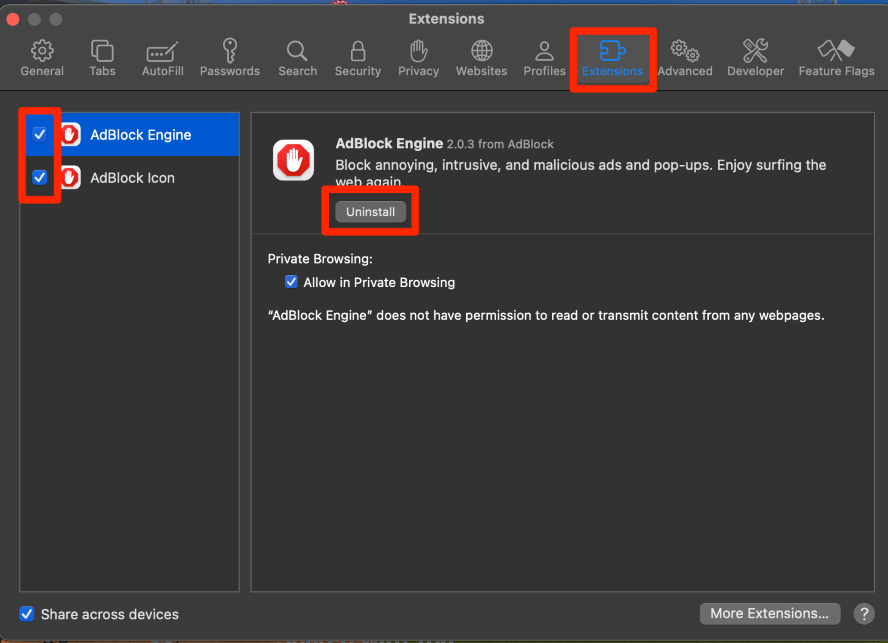
On the left, the blue check marks indicate that the extension is enabled. Click these to show the gray checkbox and disable the chosen extensions.
If you find any extensions that you do not recognize, select them on the left (it will be shown in blue) and click uninstall on the right. Follow any onscreen instructions to finish uninstalling.
While iCloud Private Relay is a convenient and easy safety feature, however, it requires that your internet browsing passes through Apple servers prior to reaching your computer. This means that it could slow down your internet speed.
Click the Apple Menu and System Settings .
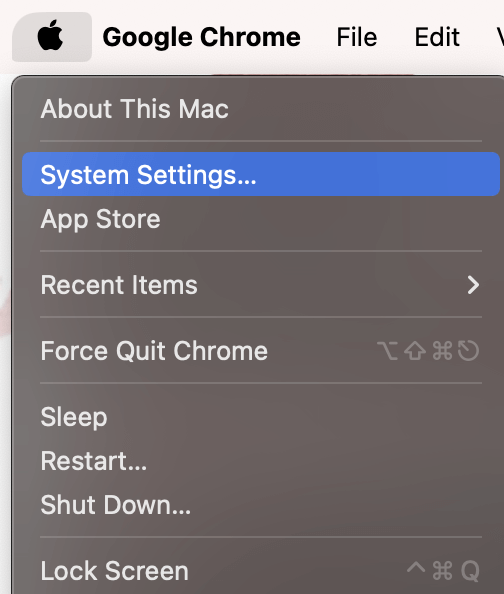
On the left, click your name, and on the right click iCloud .
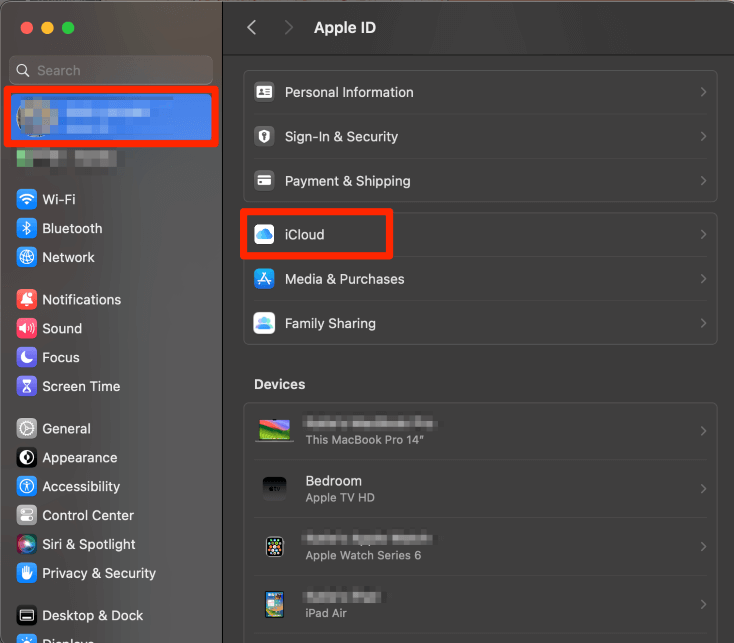
Scroll down to the iCloud+ features and ensure that Private Relay is turned off. If it is not, click on it and click the slider to turn it off. You may be asked to confirm by clicking “ Turn off iCloud Relay .”
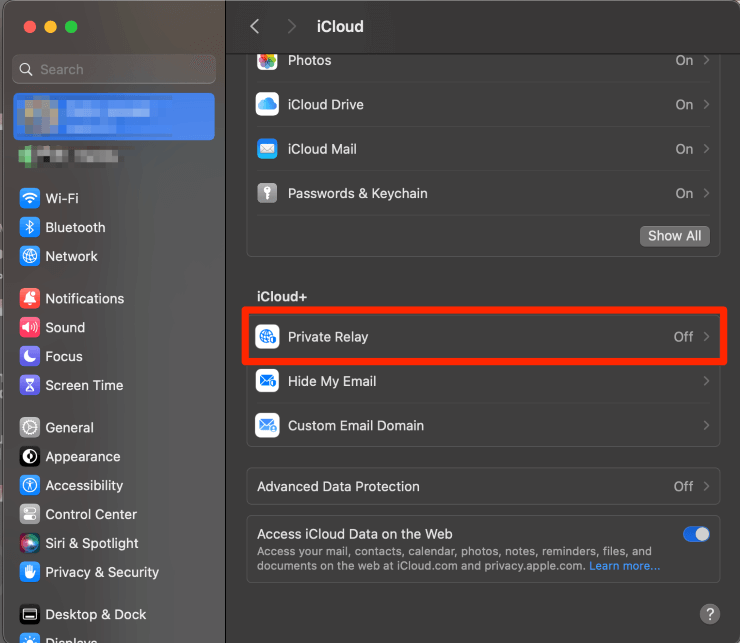
Search engine suggestions are a predictive feature when you are using Safari. They are designed to predict what you may be searching for and help you to find it easier. However, it is possible that they can be slowing down your Safari. Take the following steps to check:
With Safari open, choose the Safari menu and Settings.
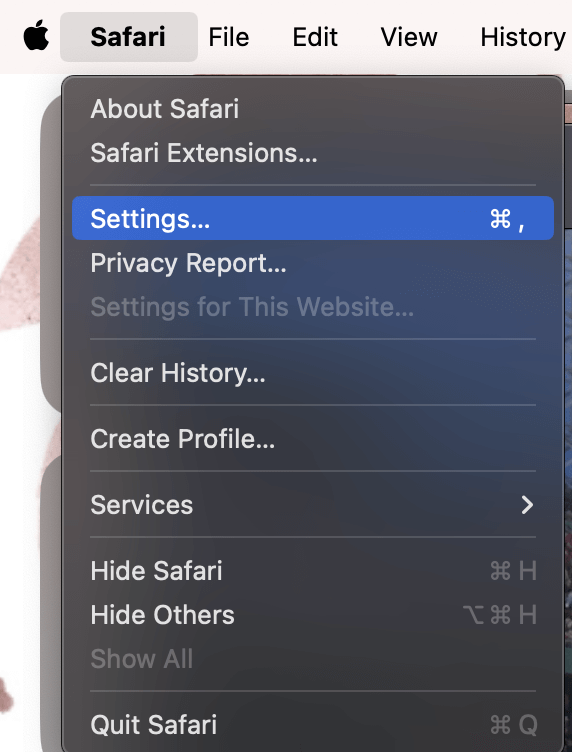
In the Search tab at the top, deselect the “Include Search Engine Suggestions” check box. It will show as a gray box when it is deselected.
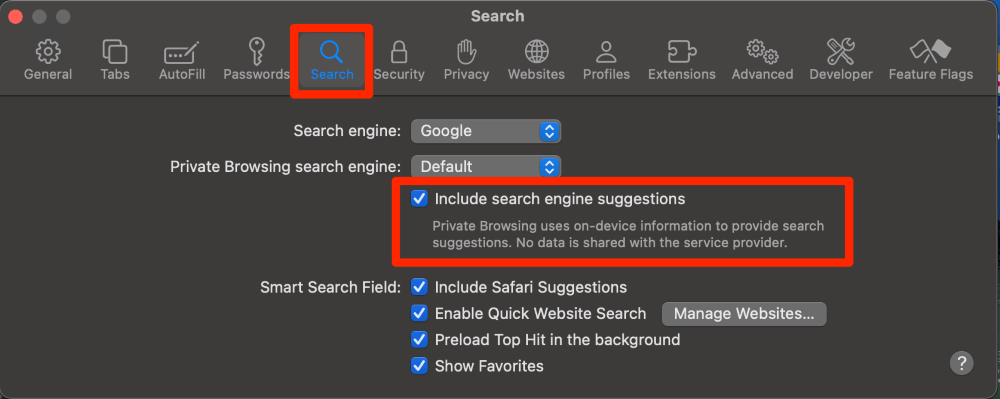
Another Safari feature, while helpful when it works properly, can also slow down the application is the Autofill feature. Autofill sometimes has a hard time accessing the information and may cause Safari to freeze.
In Safari Settings (described how to reach above), Choose the Autofill tab at the top. Deselect all the Autofill features below. The items are deselected when they show a gray box instead of a blue checkmark.

A Domain Name System Server (DNS Server) is a program that tells your computer and the internet what IP Address your computer or a website is using. By updating your DNS server you can not only improve your internet speed (and therefore your Safari speed), you can also improve your security.
Some of the most popular DNS Server IP Addresses are those for Google, 8.8.8.8, and 8.8.4.4. The DNS Server 1.1.1.1 is allegedly considered to be the fastest in the world (though I am not confident in how or when that was recently confirmed).
To update your DNS server, take the following steps:
Choose the Apple Menu and System Settings .
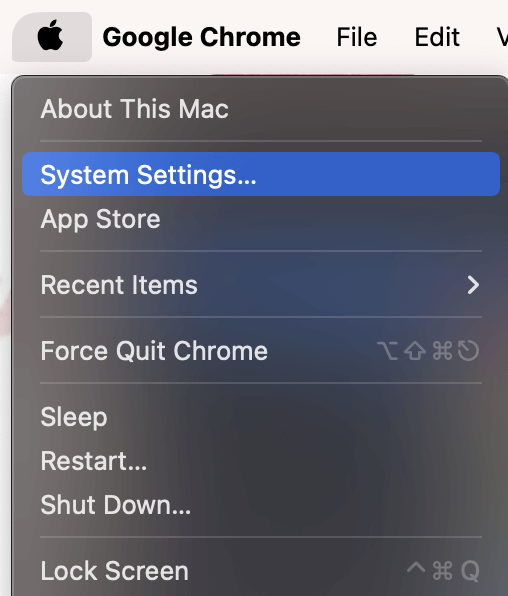
On the left, select Network , and on the right, select Details under the Wi-Fi section.
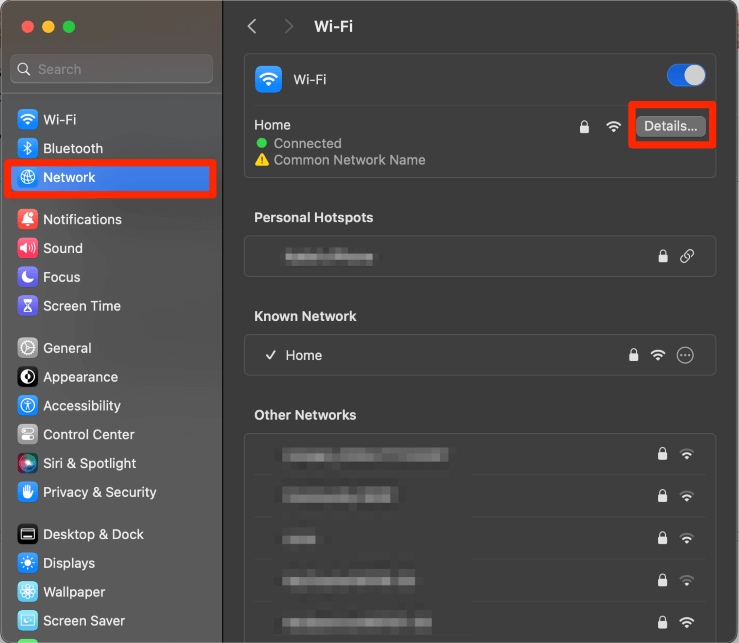
On the left, choose DNS . On the right, use the + button to add any of the DNS Servers that we have discussed (or others you may have found in your search).
Note : it is OK to have more than one DNS Server—if one is down, your computer will use another one in your list.
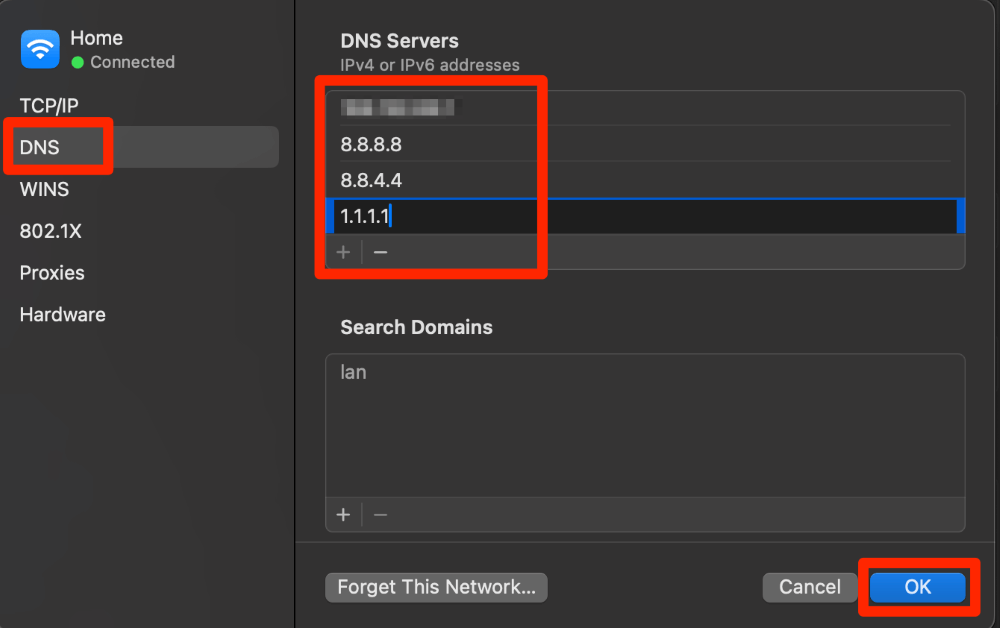
Your Solid State Drive or SSD is a critical piece for the speed of your Mac. If all the other fixes up to this point did not work, it is possible that there may be an error on your SSD. First Aid will automatically check and fix most errors related to the formatting of your SSD.
Open Disk Utility in Launchpad.
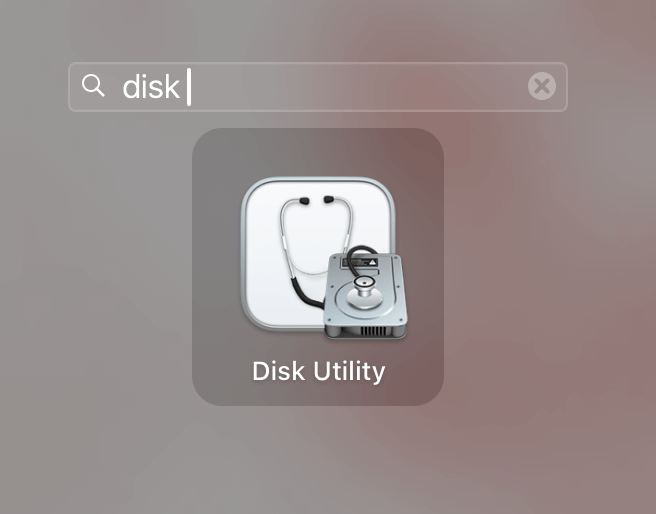
Choose First Aid and follow the onscreen instructions.
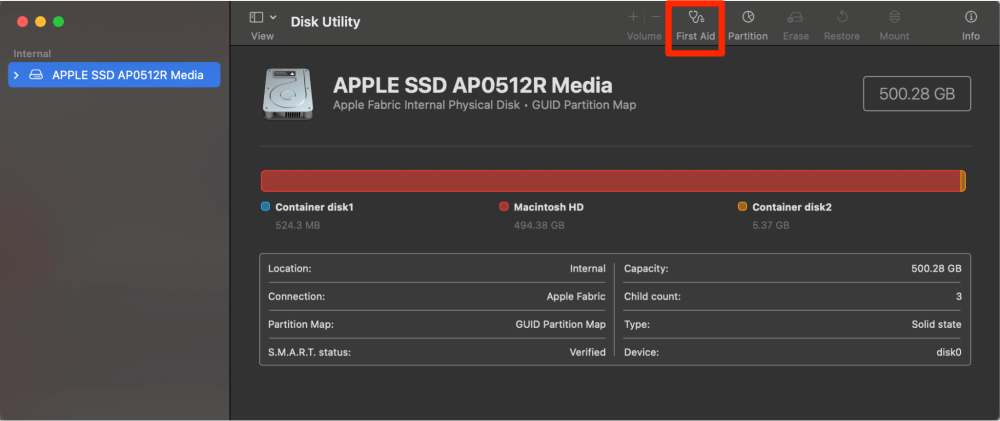
Solution #11: Boot in Safe Mode
Lastly, Safe Mode is a great way to determine if you are having further issues that are causing Safari to be extremely slow. Safe Mode disables your startup settings and features and any third-party items. If your Safari is running slowly for either of these reasons, you will be able to see using Safe Mode.
Take the following steps to boot into safe mode, depending on which type of Mac you have:
- Restart or turn on your Mac and press and hold the Shift key.
- When the login window appears, you can release the key and login.
- You may be asked to log in again, do so. You will see Safe Mode in the menu bar if this was successful.
- Turn on your Mac and press and hold the power button until you see the Loading Startup Options screen.
- If asked, select a volume.
- Press and hold the shift key and click Continue in Safe Mode. Your Mac will automatically restart.
- If successful, you will see Safe Mode in the menu bar.
Sometimes Safari doesn’t work properly when you have too much junk on your computer. A good 3rd-party application like CCleaner or CleanMyMac X can work wonders to optimize your system by getting rid of junk, including things like browser data and temp files.
CCleaner for Mac , for example, has a Browser clean-up tool that automatically scans and removes browsing data, caches, temporary files, cookies, and other tracking data.
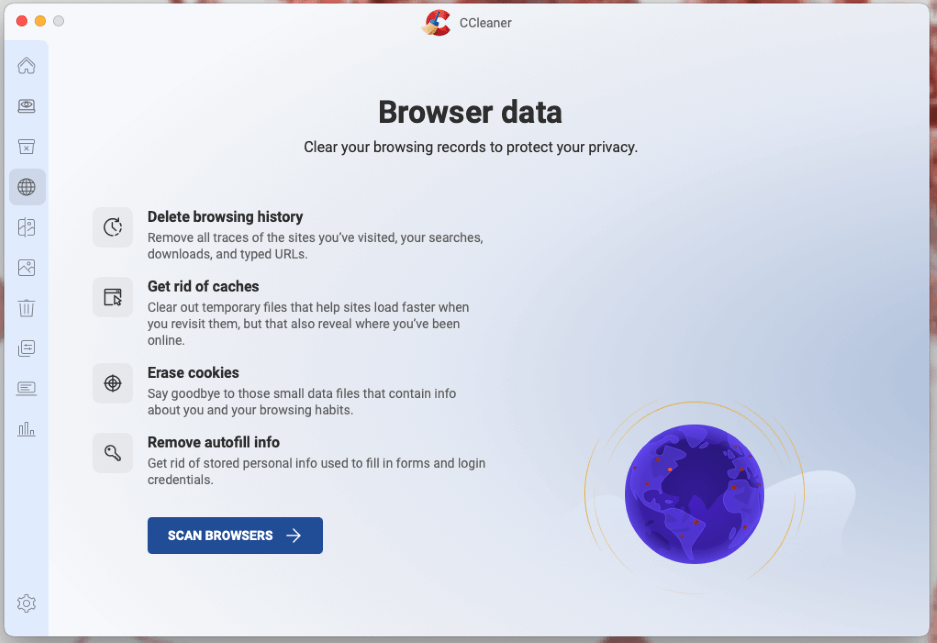
This can go a long way in speeding up Safari, and even helping out the rest of your computer too. While there is a paid version of the software, you can get quite far with the free version. So, it is worth a shot if you want an easy solution to Safari running slowly.
We have covered a lot of ground and talked about a lot of different options that could be causing your Safari Application to be slow. We first explored the more simple options, such as your internet connection being down, your Safari application needing to be updated, having a lot of tabs open, and clearing history.
Your extensions possibly cause loading problems, your iCloud Private Relay, Search Engine Suggestions, and Autofill are also things you should check. If all else fails, you should look at two pieces of your Mac that could be affecting Safari as well, your SSD and the startup options.
If the rest of your Mac seems to be running fine enough to download another application, you could try a 3rd-party tool like CCleaner to clean up browsing data and other junk that could slow down Safari.
What did you learn from this article? What worked for you? Let us know in the comments!
Submit a Comment Cancel reply
Your email address will not be published. Required fields are marked *
- Apple Watch
- Accessories
- Digital Magazine – Subscribe
- Digital Magazine – Log In
- Smart Answers
- New iPad Air
- iPad mini 7
- Next Mac Pro
- Best Mac antivirus
- Best Mac VPN
When you purchase through links in our articles, we may earn a small commission. This doesn't affect our editorial independence .
How to speed up a slow Mac

If you’ve had your Mac for a few years you may be looking longingly at the Apple website wishing you could justify the expense of buying a new one. But luckily you don’t have to fork out for a replacement computer to enjoy speed increases: in this article, we gather some simple tips to enhance the performance of your current device.
How to make a Mac run faster
Below we will run through the various checks you should make to find out why your Mac is running slow and speed it up, we’ll cover why you need to have around 10% of your Mac’s total storage free to keep it running well and how you can free up that space if need be. We’ll also look at how to find out if a particular app is gobbling up all the processing power and how to close it. And we’ll look at other changes you can make to your Mac to make it run faster, including adding more RAM or, if that’s not an option, clearing your RAM to speed things up.
Before you begin, try the following quick tips to see if they speed up your Mac:
- Restart your Mac. If you haven’t restarted it for a while your RAM/Unified Memory could be maxed out.
- Delete unnecessary files, apps and other items that are taking up space – especially if you have less than 10% of your Mac’s storage free.
- Update your software in case there is a software issue that is causing the problem.
CleanMyMac X | Boost your Mac’s performance
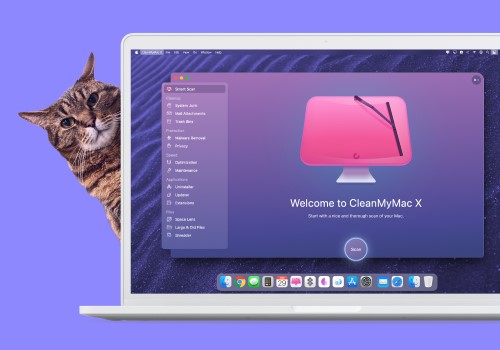
Let CleanMyMac X set your Mac free from artificial restrictions. Locate large old folders, background apps, and heavy memory consumers. Tune your Mac for maximum speed, keep it malware-free and secure.
Make sure you use the Smart Scan weekly to help your computer stay productive all year round.
Get the exclusive offer for Macworld audience – 10% off any CleanMyMac X package.
How to speed up a Mac or MacBook
Follow these steps to speed up your Mac and make it run faster.
Restart your Mac

One of the most obvious things you can do if your Mac has slowed down is restart it. However, we understand that there will be lots of reasons why you don’t want to do that. Perhaps you don’t want to stop what you are doing and wait while your Mac restarts and the app you were using is reloaded. But restarting is usually the first fix for any Mac that’s slowed right down.
In fact that is why we recommend that you do restart regularly. Few aspects of Macs cause more arguments than the one about what to do at the end of the day: shut down or sleep? It used to be recommended that a computer should be left switched on because of the wear and tear of restarting the hard drive. With the advent of SSDs this is no longer a problem. The amount of time it would take to start up a Mac also used to be prohibitive. This is no longer the case, Macs start up almost instantly. Nowadays, the main advantage of leaving a Mac ‘sleeping’ rather than switched off is that it lets you continue where you left off. The only other reason to leave the Mac running is if you run maintenance or backup scripts at night. We address that here: Should I shut down my Mac every night?
Shutting down your Mac has a number of advantages many of which are related to how RAM (or Unified Memory, as Apple calls it) is being used. macOS uses swap files: spaces on your hard disk that allow your Mac to pretend it has more RAM than it actually has as virtual memory. Once the number of swap files exceeds five or so, your Mac starts to slow down. Then it’s time to reboot.
Restarting your Mac also means caches will get flushed and applications that are hogging your RAM will let it go. Restarting your Mac clears the caches and shuts down applications. The result is a Mac that’s refreshed and should perform better.
If right now shutting down and restarting isn’t for you – or that doesn’t work – there are plenty of other tips below to work through as you attempt to speed up your Mac.
Close unnecessary apps

It might sound obvious, but the best place to start, if you don’t want to shut down your Mac, is to close any apps that are running in the background.
If you haven’t shut your Mac down recently your Mac may be devoting memory and CPU space to a program you haven’t used since last week, instead of to the apps you want.
A quick way to see which apps are running is to glance at the Dock at the bottom of the screen. Programs that are running will have a dot underneath them. If you can’t see this dot, open System Settings/System Preferences and click Desktop & Dock and ensure that ‘Show indicators for open applications’ is selected.
Alternatively, press Command + Tab to bring up the App Switcher and tab through to see which apps are open.
There are a few ways you can shut down these apps. Right-click (or Ctrl-click) on their icon in the Dock and choose Quit, or if you are using the App Switcher, select a program and press Command-Q to quit it.
If when you Right-click on the icon in the Dock you see the Force Quit option against it you likely have identified the culprit because a problem with that app is probably slowing down your whole system.
Should you not get any options at all or just a spinning beach ball, you can use the Apple menu to shut the unresponsive app down. To do this, click on the Apple logo in the top left corner then select the Force Quit option. You’ll see a list of all open applications, simply highlight the one you think is playing up and click the Force Quite button.
Read How to Force Quit on a Mac for more information.
Find out what’s slowing you down
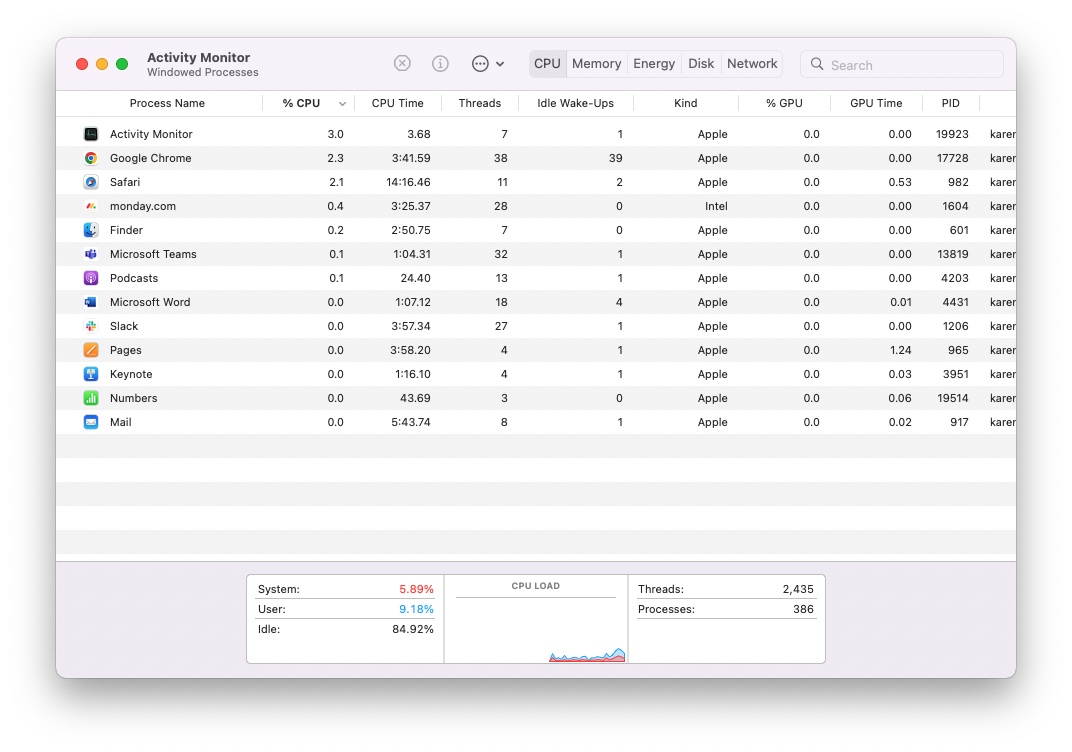
Some apps are more power-hungry than others, and sometimes apps have issues that cause them to grab more than their fair share of your system resources.
If you want to see which apps are using up your system resources, open the Activity Monitor in the Utilities folder. (Or press Command + space bar and start to type ‘activity’ and press enter to open it from there).
Activity Monitor shows all the processes on your Mac (some of which you can’t, or shouldn’t, close) so go to the menu bar at the top of the screen and click View > Windowed Processes before you do anything.
Now, back in Activity Monitor, click on the CPU button and the “%CPU” column to list all programs by the amount of CPU they are using. You can also use this to see what Memory, Disk and Network different processes are using.
If you see that one app in particular is gobbling up a lot of CPU power then you can close it from here by selecting the app with the mouse and clicking on the x in the menu bar at the top of the Activity Monitor.
Take note of the apps that are using the most power – they might require a software update to make them work more efficiently.
For more advice see: How to use Activity Monitor to handle troublesome apps on your Mac .
Update your software
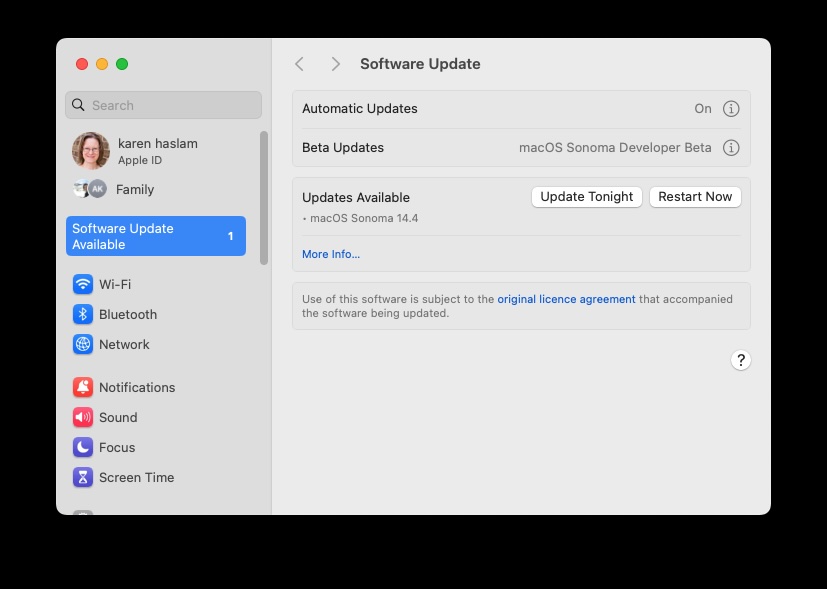
Make sure you regularly perform a software update for macOS and all the apps installed on your Mac.
If you are running any recent macOS version go to System Settings > General > Software Update. In slightly older versions of macOS it’s System Preferences > Software Update. Now wait while your Mac checks for updates. If there is one to install, do so.
Next check if your apps need updating. To check if there is an update for anything you have downloaded from the App Store open the App Store and click on Updates.
If you have apps purchased outside of the App Store they need to be updated separately.
You can make sure that macOS keeps itself up-to-date:
- Click on System Settings > General > Software Updates.
- Click on the i beside Automatic Updates.
- Ensure that Check For Updates, Download new updates, and Install macOS updates are selected.
- Make sure that Install Application updates from the App Store is selected.
- Also ensure that Install Security Responses and system files is selected.
Make sure enough space is free
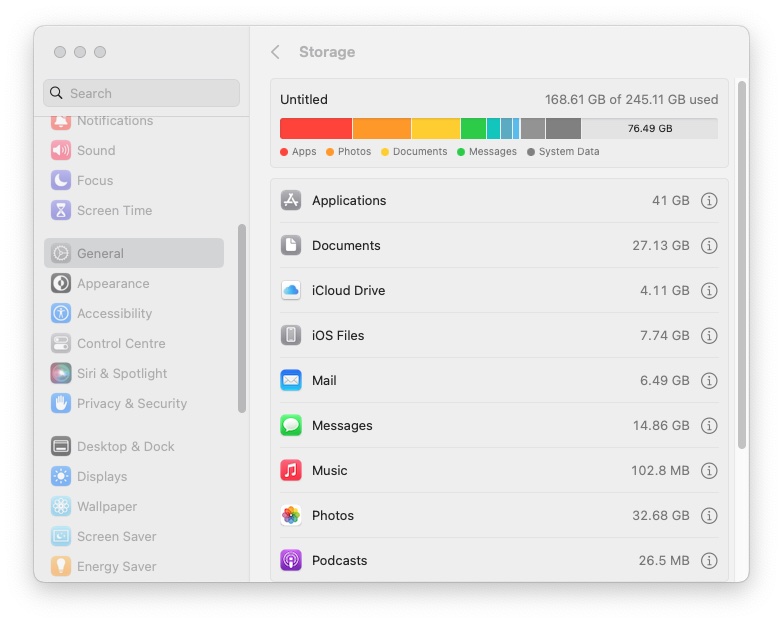
Part of your Mac’s performance depends on empty drive space. The Mac needs to be able to write and read its swap files and free space helps. But for these safeguards to work, you need at least ten percent of your disk drive empty.
Therefore, if you want your Mac to run at its best and you don’t have 10 percent of your storage space available you need to offload some of your larger files.
Your hard drive hosts a number of big files and folders. These could include email files and backups, and old versions of apps that you no longer need. If you frequently upload photos to your Mac and download music you may find that you quickly use up the space.
There are a few ways to find out how much space you have available. The method depends on the version of macOS you are running.
In macOS Ventura and later:
- Open System Settings > General > Storage.
- Wait while it calculates how much of your storage is being used, and also shows you what is using it.
- Click on the i beside any category of content, e.g. Applications.
- Click on anything and delete it if you don’t need it. If you sort by date last used that’s a quick way to find things you don’t need. Alternatively sort by size to find larger items to delete.
You won’t be able to delete anything from the macOS and System Data categories, but you can find out ways to remove this kind of content here: How to delete System Data.
In older versions of macOS there was a Storage option in About This Mac that took you straight to an explanation of ways to reduce the amount of space being taken up.
- Open the Apple menu by clicking on the Apple logo in the top left of your screen.
- Click on About This Mac.
- Choose Storage from the tabs and wait while it calculates how much of your storage is being used and shows you what is using it.
- Click on Manage to get options for optimizing your storage or storing photos and videos in iCloud rather than on your Mac.
On very old versions of macOS there was an Other section of storage. If you want to delete from that read: How to delete Other storage on the Mac .
If you are running short of space we run through various ways to free up the space on your Mac in How to free disk space on a Mac .
You can also use paid software such as DaisyDisk ($9.99/£9.99), WhatSize ($14.99) or OmniDiskSweeper to view your disk usage.
We have some more space-saving tips below.
Free up RAM

A long time ago the solution to improving your Mac’s performance was adding more RAM. Unfortunately this isn’t really an option for users of modern Macs – and not at all if you have any of the M-series of Macs as the memory is built onto the chip.
If you own an older Mac – a 27-inch iMac for example – it is relatively easy to upgrade the RAM and we will discuss how to do that here: How to upgrade RAM in a Mac .
But since that won’t apply to many Mac users, we’ll begin by explaining how to free up RAM. We also cover separately here: How to free up memory (RAM) on a Mac .
The simplest way to free up RAM is to restart your Mac, but sometimes we don’t want to do that. In that case there are apps you can use to free up RAM or you can use Activity Monitor. We’ll start with the Activity Monitor method.
- Open Activity Monitor.
- Click on the Memory tab.
- If you look at the bottom of the window you will see how much RAM is being used. In our case 7GB of the 8GB available.
- Click on the column headed Memory to sort by the biggest users of your RAM. Lots of what you will see here will undoubtedly mean nothing to you, but there will be a few apps that stand out.
- Free up RAM by closing any RAM-hungry apps you aren’t using. You can do this via the Dock (right-click on the app and choose Quit), or just click on the app on Activity Monitor and then click on the X in the menu.
There are also apps that will help you clear your RAM. Among our favorites are Parallels Toolbox , which has an easy to use tool you can use to free memory and comes bundled with lots of other useful tools for $24.99/£20.99 a year (There’s a free 7-day trial available ). Read our review of Parallels Toolbox .
Another option is CleanMyMac X from MacPaw. This collection of tools will warn you if you have Heavy Memory Usage and will offer to Free Up your RAM. CleanMyMac X costs $39.95/£29.95, it also has a free 7 day trial. f you’re on a budget DaisyDisk is another option for $9.99/£9.99. See our round-up of the best Mac cleaners for more options.
Check the health of your Mac

If these fixes aren’t working you should make sure that your Mac is completely healthy. You can do this by running Disk Utility, which a program included on your Mac.
- Open Disk Utility (in Applications/Utilities).
- Select your startup drive from the list on the left.
- Click the First Aid tab to the right.
- Click Run (in older versions this was Verify).
If Disk Utility finds problems with your drive, you’ll need to boot from a different volume to perform the actual repairs. This is what Recovery mode is for.
To boot into Recovery mode you need to hold down Command+R at startup on an Intel Mac, or press and hold the Power Button at start up on an M-series Mac. Once in Recovery Mode you’ll be able to access Disk Utility and carry out the recommended repairs. Read more about using Disk Utility to fix a Mac .
You can also run the Apple Hardware Test (for Macs older than June 2013) or Apple Diagnostics (for Macs from June 2013 or later). Both tests check your Mac for other hardware issues, such as bad RAM.
There are other steps you can take if you have an old Mac that you are trying to speed up, one is to repair permissions. Repairing permissions isn’t something you can do on recent Macs, but in old versions of macOS it was necessary to repair permissions occasionally. This was achieved by following these steps:
- Open Disk Utility and choose your main hard drive from the sidebar.
- Click on First Aid and Repair Permissions.
If you have an older Mac this will ensure that all the files on your Mac have the correct permissions, which will help keep things ticking along.
However, since the arrival of Mac OS X El Capitan in 2015, you can no longer repair permissions in Disk Utility. It’s gone because the new System Integrity Protection (SIP) that arrived in El Capitan prevents permissions on files being modified which, according to Apple at least, means there should be no need to repair permissions.
Sort out your iCloud syncs
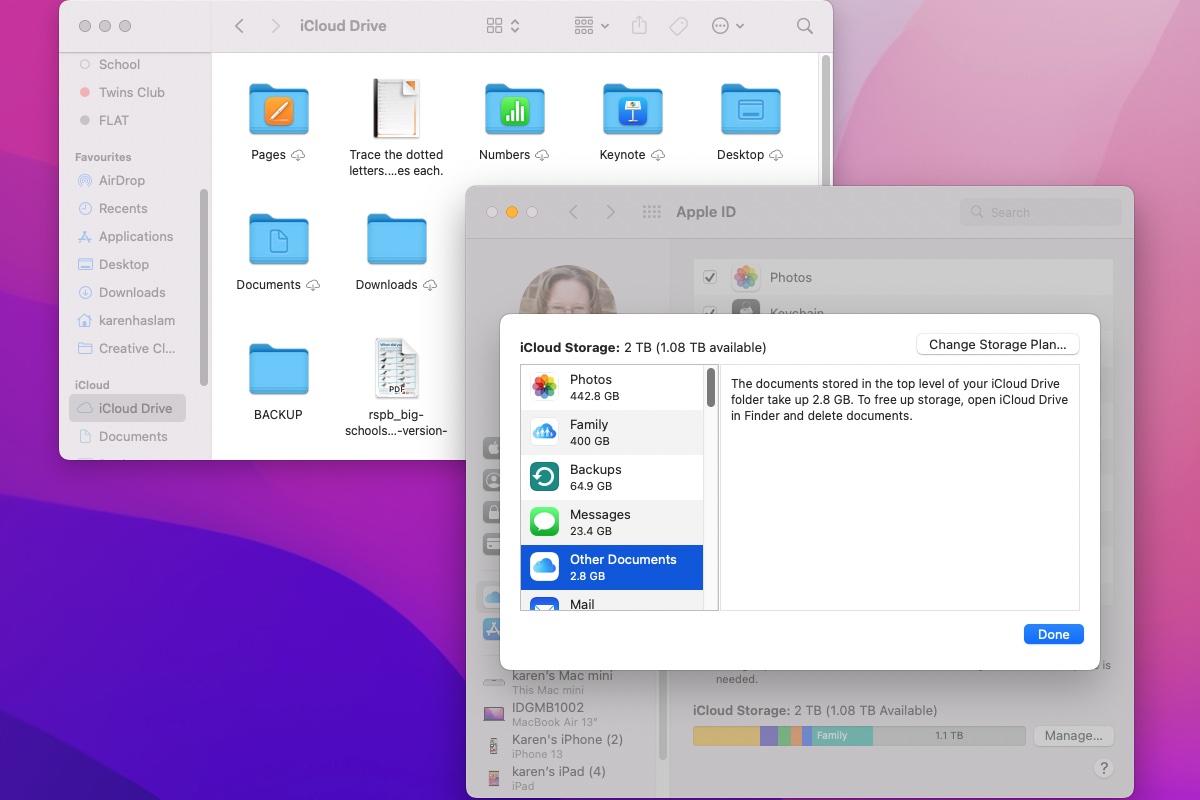
If you use iCloud to sync files across multiple desktops and sync your photos to iCloud Photos, you may be suffering slowdowns while your system syncs in the background.
If you think this is happening to you there are a few things you can try.
If you use iCloud Desktop, avoid storing large documents on your desktop – don’t drag and drop a humongous video file onto your desktop unless you need access at another location. You could also change where your screenshots are saved to.
In fact if you only store the documents you need access to on your iCloud desktop you may speed things up – and spend less time waiting for the files you actually need to sync. Just remember that if you don’t save things on your Desktop or somewhere else where they sync, they won’t be available to you in iCloud.
If you use iCloud Photos on your Mac and you don’t want to be busy syncing images, avoid opening the app in the first place. If it proves problematic, turn off iCloud Photos on that device.
Keep a tidy Desktop
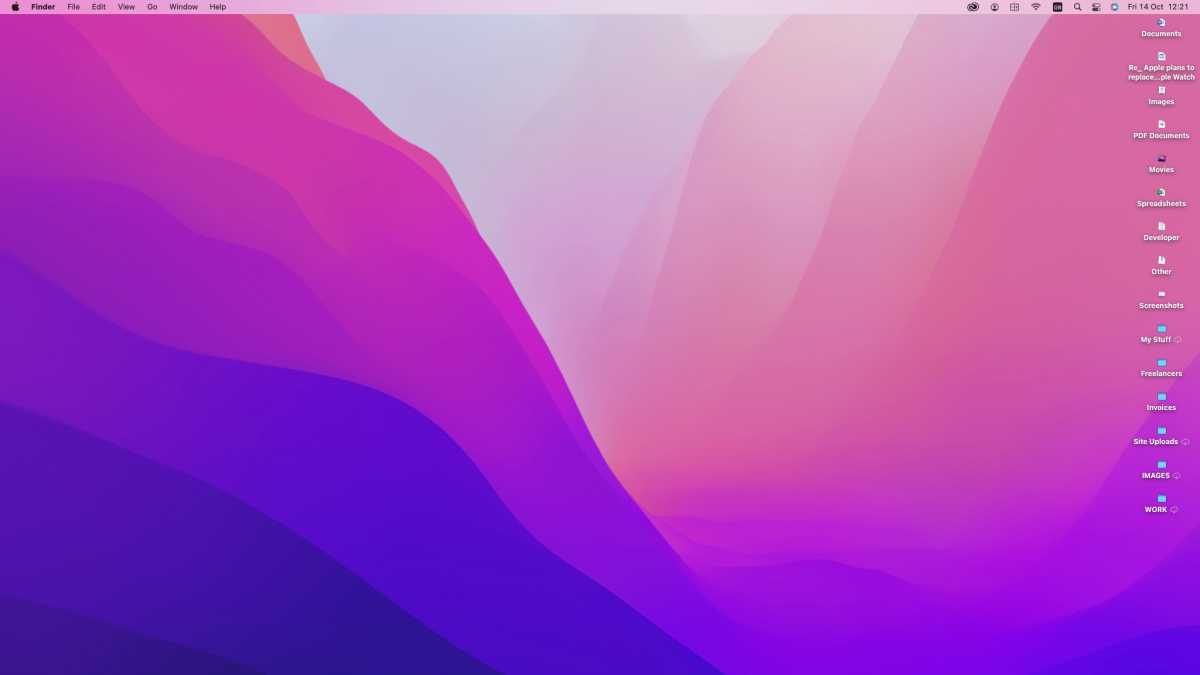
Another tip is to keep your Mac Desktop free of clutter. If you’re using iCloud to sync various devices your Desktop will be synced and a cluttered Desktop will take time to sync. To find out just how much data is on your Desktop open the Finder and right-click on Desktop in Favourites, choose Get Info and then contemplate why there is 10GB of junk on your Desktop.
But that isn’t the only problem. Every file on your desktop is a window with an image in it – either an icon or a preview of the file. Each of those windows and their contents is stored in RAM so that when you switch to the Desktop or use QuickLook, your Mac can show you what’s in the window. The more files you have on your desktop, the more data is stored in RAM. That could result in your Mac running more slowly, especially if your Mac’s memory is already under pressure.
This is why it is worth organizing files properly in the appropriate user folder – Documents, Pictures, Movies etc – and you may see an improvement in the speed of your Mac. Luckily, since macOS Sierra, it has been possible to automatically sort files on your Desktop into Stacks, so that everything it automatically filed away into folders (by Kind or Date). Just open a Stack and delete excess files from time to time.
To set Desktop Stacks up if you haven’t already click on your Desktop and choose View > Use Stacks from the menu.
Manage Spotlight
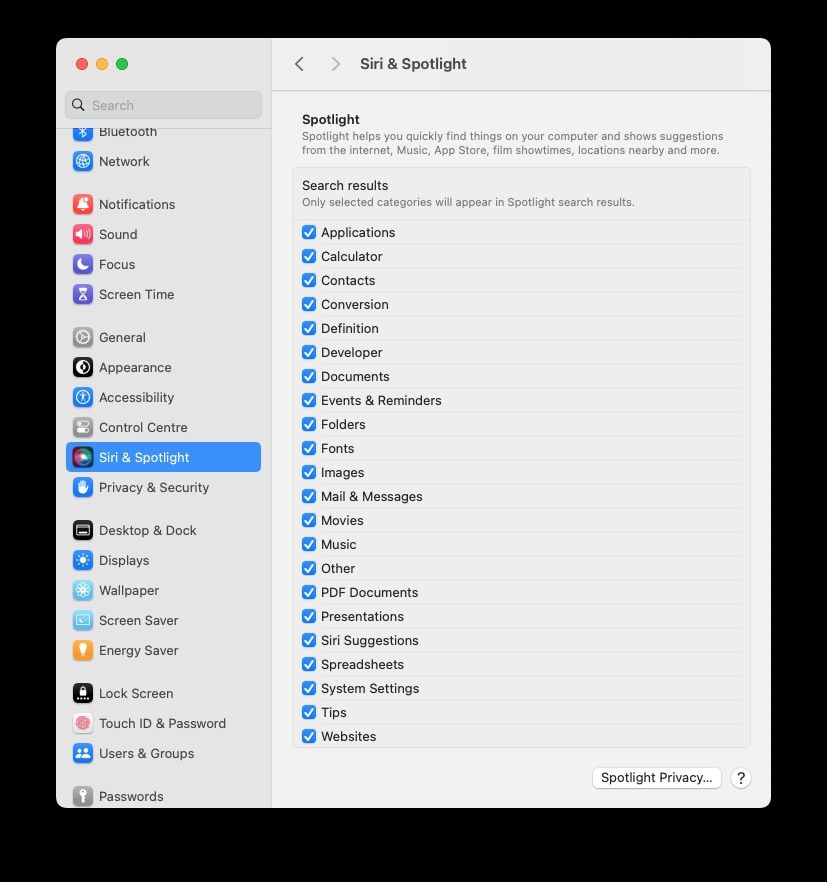
Spotlight, particularly in recent versions of macOS, is a terrific tool. But if you use multiple drives, particularly on older Macs, it can take Spotlight time to index and re-index the filesystem. That in turn will slow down your Mac.
The answer is to limit the files Spotlight indexes. This is done in the Siri and Spotlight pane in System Settings (or the Spotlight pane in System Preferences on older Macs).
As you can see in the image above Spotlight is indexing everything, but if we wanted to omit certain results we could.
You can also omit certain folders you don’t want Spotlight to search: Click on the Spotlight Privacy tab and drag in any folders or volumes that you don’t want to search onto the window.
That will stop Spotlight indexing the folder or volume and thus reduce the number of files it needs to index, meaning it spends less time indexing and should improve performance on your Mac.
Stop programs from opening at startup
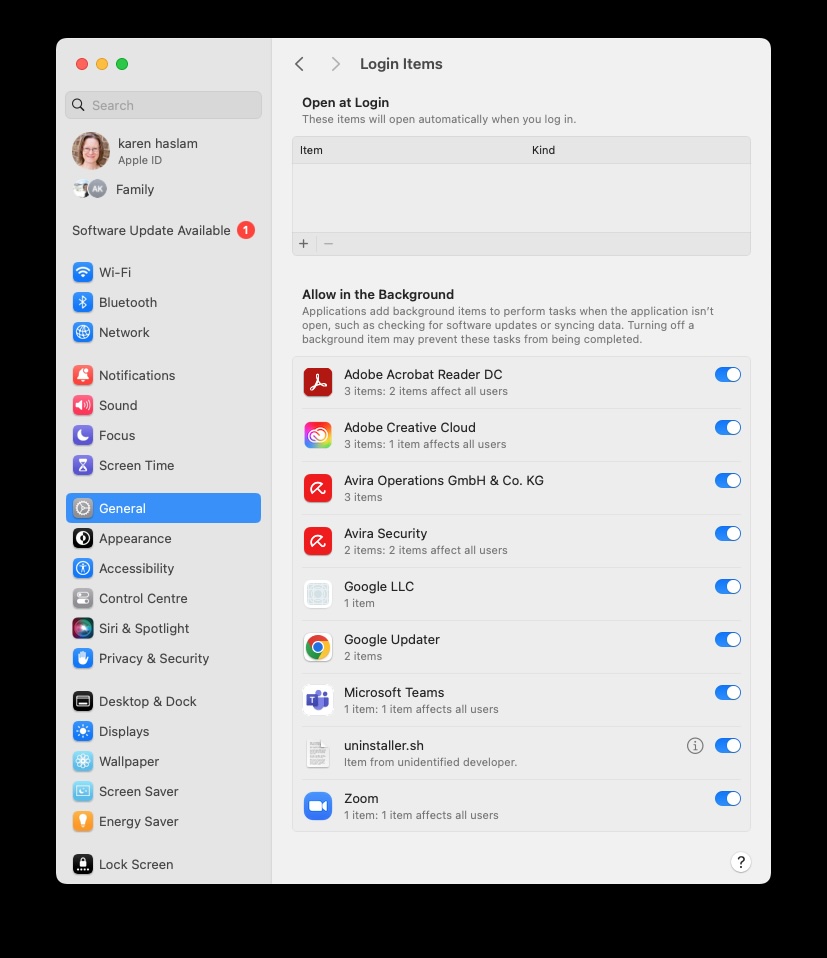
It is possible to set up your Mac so that when you start it up the programs you regularly need to use open up automatically. This could be a useful feature, but sometimes other applications you don’t want to use get into those items that open automatically when you log in.
If you really want to speed up your Mac stopping these programs from opening when you turn it on can really help. Here’s what to do:
- Open System Settings.
- Click on General
- Click on Login Items.
- If any items are in the Open at Login (that you don’t want to be there) remove them.
You can also stop items from being able to run in the background.
In older versions of macOS:
- Open System Preferences
- Click Users & Groups.
- Now click on the Login Items tab to see if there are any programs and services that are set to launch when you first power up (or log in to) your Mac.
- Highlight an item in the list that you don’t want and click on the Delete from Login Items – button at the bottom of the list.
Turn off visual effects
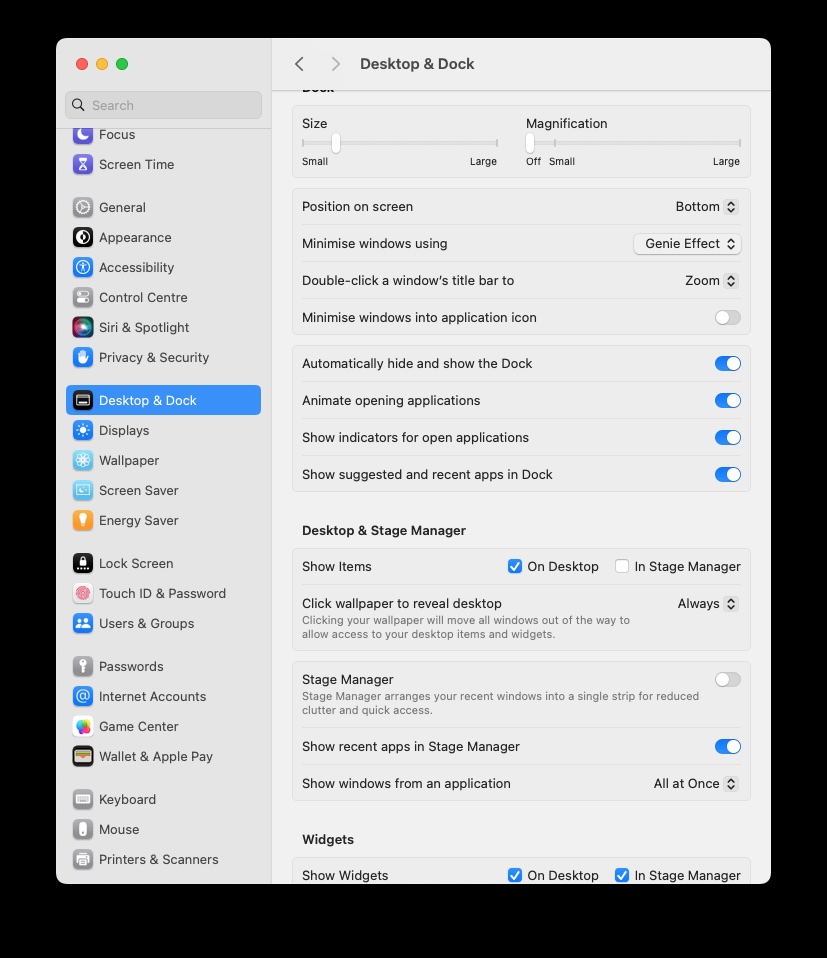
Most Macs can run macOS without any trouble. However, you can turn off some features that might slow your Mac down.
For example, some people prefer to keep the Dock static to prevent slowdown.
Open System Settings > Desktop and Dock and untick the following boxes. (in older versions it’s System Preferences > Dock & Menu Bar)
- Besides ‘Minimize windows using’ change Genie Effect to Scale Effect.
- Turn off Magnification if you have that option selected.
Turn off File Vault encryption
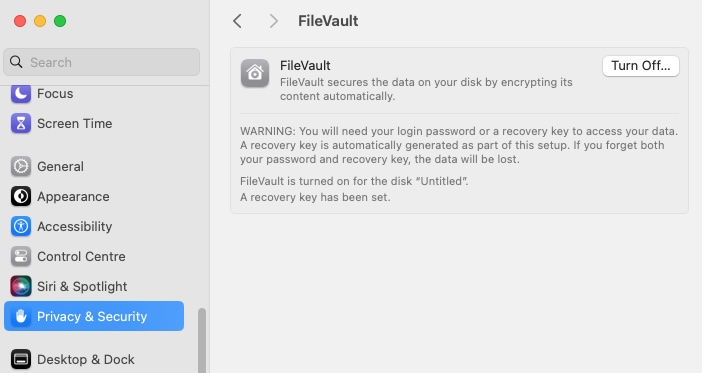
File Vault allows you to encrypt every file you store on your Mac to keep it safe from prying eyes. It also uses lots of processor cycles, however, to encrypt and de-crypt those files.
If you use it, switch it off and see if you notice a difference in performance.
- Click on System Settings.
- Go to Privacy & Security.
- Click on File Vault.
- Click Turn Off.
(In System Preferences it’s the Security & Privacy tab that you need).
Delete, delete, delete
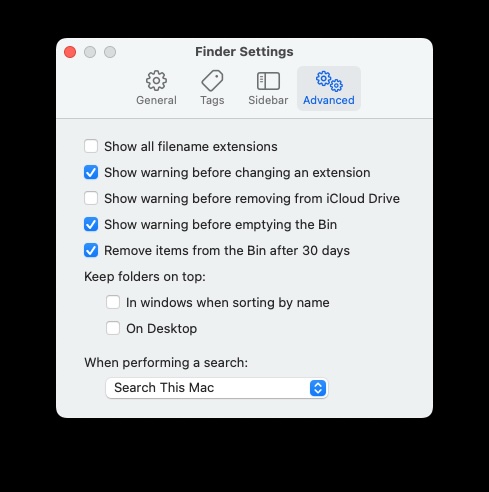
Were you suffering from limited space when you checked earlier? There are a number of quick ways to free up space on your Mac.
Empty the Trash : Right-click on Trash in the dock and choose Empty Trash.
Automatically delete : You can also set the Trash to automatically delete items every 30 days. Open the Finder and click on Finder > Settings > Advanced. Now choose Remove items from the Trash after 30 days.
Delete Downloads : Are there any items you’re unlikely to need still in the Downloads folder. Click on Downloads to the right of the Dock and the arrow at the top to open it in the Finder and see everything that’s in there.
Delete old and large files : Open the Finder and choose Recents (in older versions of Mac OS X choose All My Files), then either choose to sort by date or size. Choose size to selectively delete the biggest files. Choose date to find the files you haven’t needed in a while. (If your finder window isn’t showing size, go to View > Show View Options, and choose Size.)
Remove unwanted apps and programs : remove apps that you don’t use. You can just drag and drop apps into the Trash, but that can still leave associated files and settings on your Mac. For that reason, our advice is to invest in a program like CleanMyMac X ($34.95/£29.95 for a one year subscription) that can show you how much hard drive space apps are taking up and when you last used them, and can delete apps and all associated files.
Remove Widgets : You could also remobe widgets used in the Notification Centre. To do this, click on the clock and date at the top right of your screen (or the bullet icon on older macOS versions). Scroll down and click on Edit Widgets (or Widgets, or Today in older versions of macOS). Remove any you don’t need.
Move photos to an external drive

You might be surprised by how much of your Mac’s storage is taken up by photos and home videos.
You may consider paying for iCloud Photo storage, thinking that this would mean you could delete photos from your Mac as they would be stored in the cloud, but unfortunately, that isn’t how iCloud Photos works. If you delete the photos from the Mac that they are stored on you will also delete them from iCloud – and all your devices you can view them on.
That’s not to say that there is no benefit to using iCloud Photos. The service can greatly reduce the amount of space taken up by the images on your Mac thanks to a setting that means that no more photos are stored on your Mac than you have room for.
To make sure iCloud Photos isn’t taking a lot of space on your Mac follow these steps:
- Open Photos and click on Settings (Preferences in older versions).
- Click on iCloud.
- Make sure that Optimise Mac Storage is selected.
This will mean that if your Mac is low on space only small versions of the photos and videos will be stored on your Mac – the full res versions in the cloud. You can, of course, download full-res versions at any time.
You may like to use another service to back up your photos in the cloud. You could try DropBox or Google Drive for example. Read about how to back up your Photo library in the cloud here: How to back up your Apple photo library .
If you would prefer not to use a cloud service you could set up an external storage device and move the photos currently stored on your Mac to that.
To do so, follow these steps:
How to move photos to an external hard drive
- Quit Photos.
- Copy the Photos Library by dragging it from the startup volume to your external volume.
- Once complete, hold down the Option key and launch Photos.
- In Photos, select Photos > Settings (or Preferences), and in the General tab, click Use as System Photo Library.
We explain those steps in more detail here: How to move your Photos library to an external drive and you might like to check out our recommendations for best hard drive and best SSD .
Move your music

Another big folder could be your music library, especially if you have previously ripped music from CDs or have a lot of downloads.
As with Photos, you could free up disk space by offloading your music files to an external drive. For more information read how to move your Mac’s Music Library to another location. (Note that your music library then needs to be relinked via the Settings > Advanced tab.)
Alternatively, you could subscribe to iTunes Match , which, for $25/£21.99 a year, will move all your music into the cloud so you can delete it from your Mac, and access it on any of your devices.
Once your music is in iTunes Match you can just download the tracks you want to listen to when you want to listen to them.
Apple Music subscription can work in a similar way, in that it allows you access to all your music via the cloud – but iTunes Match is a clone of your music library in the cloud, where Apple Music just offers you access to any tracks you already own via the cloud. See How iTunes Match and Apple Music work together .
Empty your Mac’s Caches

You shouldn’t just delete files from cache because they can actually increase the performance of your Mac. For instance, a web browser will cache web pages so that when a website is revisited, the whole pages doesn’t have to be re-downloaded. Deleting cache will also mean that you will have to re-enter login details and passwords. Deleting cache can be more trouble than it’s worth.
However, if you need to free up space deleting some files from cache could be a solution. Have a look at your user caches by hitting Command+Shift+G from your Desktop to bring up Go To Folder and then typing ~/Library/Caches/.
To see how much space your Cache is taking up you could right-click on the Caches folder in the Finder and select Get Info. Don’t be surprised if a number of gigabytes are residing here.
As user caches are rebuilt when needed, you can safely delete these, especially for apps that are no longer used. Safari, Firefox and iTunes all allow you to clear caches directly within the apps (we address removing Safari cache below).
While you could go through all these cache files, deleting them, there are a number of useful utilities you can use to do this for you.
For example, CleanMyMac X from MacPaw ($34.95/£29.95 a year) can clear your cache quickly for you. Open the app, choose System Junk and then click Scan followed by Clean. Alternatives are CCleaner for Mac (free) and Parallels Toolbox ($19.99/£15.99 a year). All three solutions feature in our round-up of Best Mac Cleaners .
We have a separate guide to clearing the Cache on your Mac .

Empty Safari cache
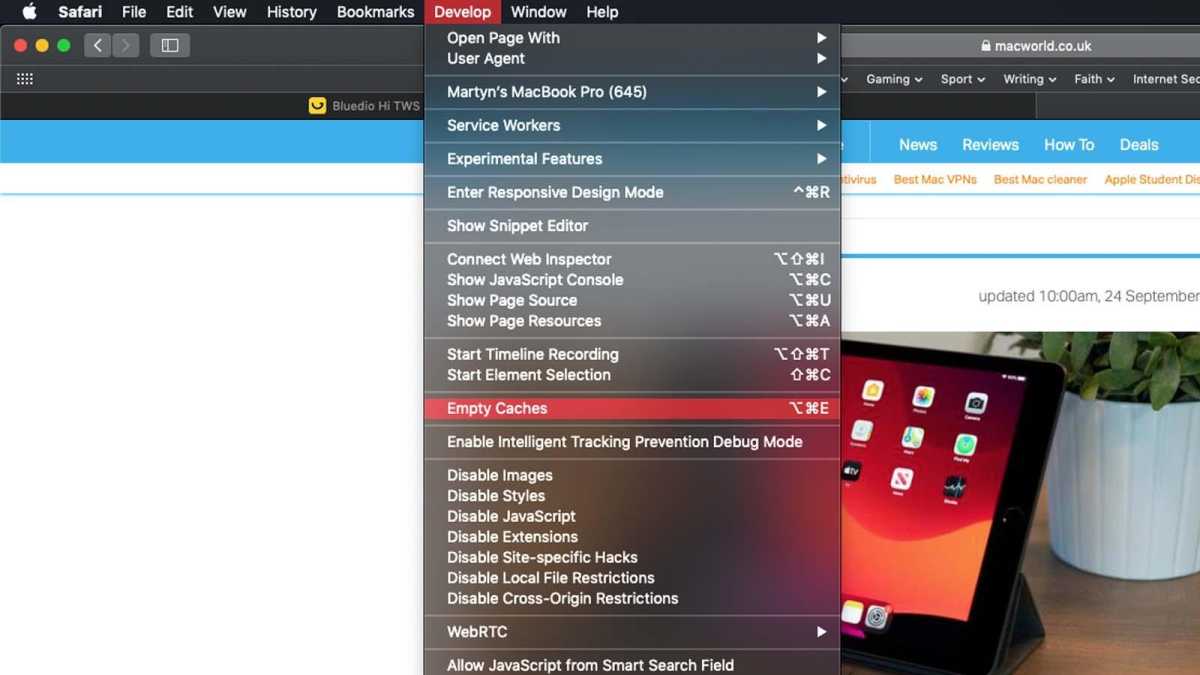
Speaking of Cache, Safari sometimes gets clogged up with data. Cleaning this out will help speed up Safari in macOS.
In older versions you can just open Safari and choose Safari > Reset Safari and check Remove all Website Data. (Leave the other options unticked.) Now click on Reset. This can help speed up sluggish web browsing.
In later versions, you’ll need to open the Settings (or Preferences) dialog box, then select the Privacy icon and click the ‘Manage Website Data…’ button. You can then delete all cookies and cache by clicking the Remove All button.
If you just want to remove the cache and not the cookies or browser history, things are more complicated. But the hidden Safari Developer menu can be used to achieve this.
The Developer menu can be activated by selecting Safari > Settings (or Preferences), clicking Advanced, then putting a tick by Show Develop Menu in Menu Bar. (This option is right at the bottom.)
A new Develop menu option appears to the left of the Window and Help menu options. Close any open Safari windows and select Empty Caches on the Develop menu. Then click File > New Window to start Safari with a clean cache.
Read: How to clear Safari Cache and Cookies on a Mac for more advice about clearing Safari cache.
Add more RAM

As we explained above, adding more RAM isn’t the solution it used to be because upgrading the RAM in modern Macs – especially ones with an M-series chip is impossible.
However, if you own an older Mac – especially if you have a 27-inch iMac – it is relatively easy to upgrade the RAM.
In the past adding more RAM was the go-to solution for improving a Mac’s performance. Before you go ahead and spend money, however, it’s worth trying to figure out how much of a difference it will really make, if any.
The easiest way to do this is to fire up Activity Monitor (it’s in Applications/Utilities), click on the Memory tab and keep an eye on the memory pressure gauge at the bottom of the window. If it’s permanently green, you’re probably not going to see a huge difference by upgrading. If it turns red regularly, it’s worth the expenditure.
How much RAM you add and how you add it is dependent on your Mac. But as a rule of thumb, the effort of performing the installation compared with the marginal cost of bigger RAM modules means that it’s worth maxing out your Mac’s RAM in one go.
That will often mean removing the existing modules and replacing them. It’s a good idea, though not essential, to buy all the RAM you fit at the same time from the same manufacturer. If you decide just to fill empty slots, the same applies. And you should pair RAM modules of the same capacity, if possible.
The biggest hurdle will be whether it is possible to upgrade the RAM in your Mac, it’s easy to add more RAM to a 27-inch iMac, but as we said above, many modern Macs cannot be user-upgraded at all, which is why our usual advice is to buy as much RAM as you can afford as a build-to-order option when you first buy your Mac.
We have a separate tutorial with more information about installing RAM in a Mac.
Do a clean install of macOS

If all else fails, and you’ve tried everything we’ve suggested to speed up your Mac without success, there is one more option: a clean reinstallation of the OS .
It’s not a job to be undertaken lightly – you’ll need to delete your entire boot drive. But, it will clear all the files that have been collected in the system Library and the user Libraries over the years and which may be causing the Mac to run slowly.
Remember to make at least one, preferably two, complete back-ups of your bit drive before you start so you can copy documents, images, music and anything else you need back once you’ve installed the new OS.
And don’t fall into the trap of thinking you have everything in the cloud, because there will be something that isn’t in the cloud!
Buy a new Mac

If you are still struggling with a slow Mac read our guide to choosing a new Mac so that you can find the best replacement for you. Read: Which Mac is best or Which MacBook to buy.
We also have round-ups of the best Mac deals right now so you can get a Mac at a lower price than Apple sells it for:
- Mac mini deals
- MacBook Pro deals
- MacBook Air deals
- Mac Studio deals
Author: Karen Haslam , Editor

Macworld editor since 2008, Karen has worked on both sides of the Apple divide, clocking up a number of years at Apple's PR agency prior to joining Macworld two decades ago.
Karen's career highlights include interviewing Apple's Steve Wozniak and discussing Steve Jobs’ legacy on the BBC. Her focus is Mac, but she lives and breathes Apple.
Recent stories by Karen Haslam:
- How to scan documents on iPhone
- How to back up a MacBook or Mac
- Apple Events 2024: Apple’s event plans
Home > How to Tips
[Proven] 9 Ways to Speed Up Safari on Mac in 2024
Updated on Wednesday, April 24, 2024

Approved by
How to Speed Up Safari on Mac: A Detailed Guide
Summary: This article will tell you how to speed up Safari on Mac , and help you make Safari back to normal in no time. Also, you can use iBoysoft DiskGeeker to clean junk files on your Mac, thus speeding up Safari.

Download
iBoysoft DiskGeeker
As the default and built-in web browser, Safari was highly praised by Mac users over the years because of its high performance and reliability. But as with any other web browser, like Google Chrome, or Mozilla Firefox, Safari is not immune from slowdowns and other issues.
For those who stick to using Safari, and don't know what to do when finding Safari is running much slower than before, you come to the right place. This article tells you how to speed up Safari on Mac with nine feasible ways. Without further ado, let's get started!
Possible causes lead to Safari running slow on Mac
To speed up Safari on Mac, it's beneficial to start with the possible reasons that may lead to Safari running slow on Mac issue. Let's check some of the possible reasons out.
- Bad network connection
- Too many open apps and resource-intensive programs
- Overmuch tabs in Safari
- Bad extensions
- Overworked Cache
- Outdated Version of Safari
- Too many junk files on your Mac
It is worth mentioning that there are various causes that may result in this problem, and the above list is just part of them. Now you learn some possible reasons that may cause the slowdown of Safari, to speed up Safari on Mac is next on the agenda. Read on for more details.
Think this content is helpful? Share it with more people!
How to speed up Safari on Mac?
Here, we provide you with 9 feasible solutions to help you speed up Safari on Mac, thus fixing the Safari running slow on Mac problem. You can perform the following solutions one by one to check if any of them will work.
Check for network connection problems
If you find the website you open in Safari takes too long to load, or even fails to load, it's a good idea to check the network connection, and see if the culprit is not inside Safari itself. Sometimes, a bad network connection will lead to the unstable performance of Safari. So, whenever you feel Safari is slower than usual, check your network first.
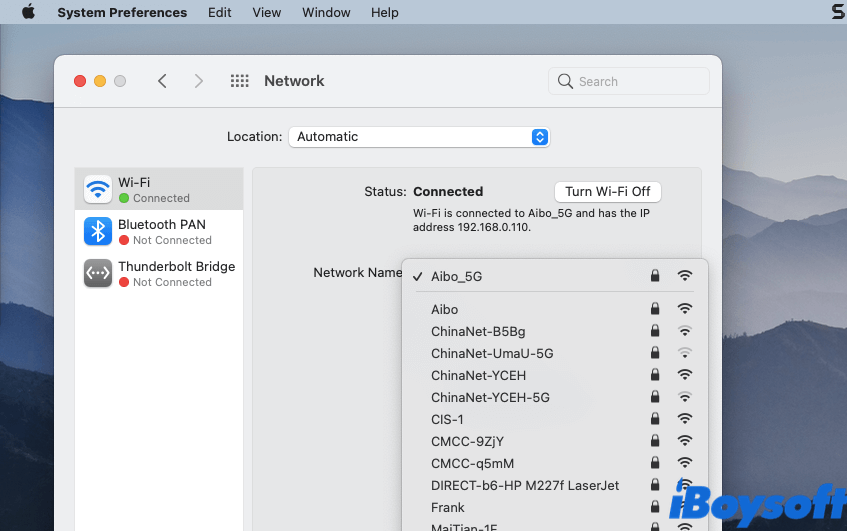
Shut down unneeded apps and resource-intensive programs
Safari will run much slower than normal when you have countless applications or resource-intensive programs opened on your Mac. In this situation, those apps and programs take up the most CPU usage, and thus there's not much left for Safari. So, to speed up Safari on Mac, you can quit or force-quit those apps not actively used on the Mac Dock .
Also, if you want to sort apps and find those consume too much processing power and memory, use the Activity Monitor to help you, here's how:
- Go to Mac Launchpad > Others, find Activity Monitor, and launch it.
- In the Activity Monitor window, click on the CPU tab or Memory tab in the top menu.
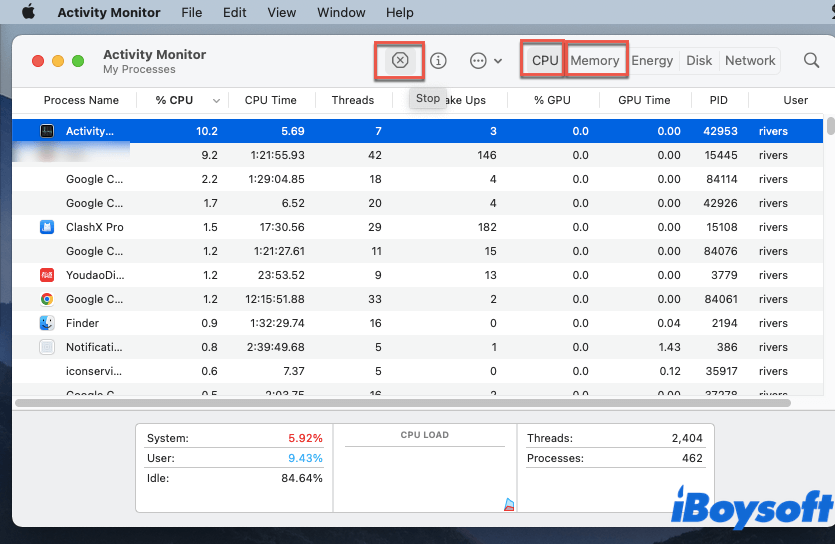
Close unnecessary tabs in Safari
When you are searching for information or just browsing interesting websites in Safari, you may open a lot of tabs without realizing it. Too many tabs open in Safari will get Safari running slow on Mac. Because this Apple's default browser keeps many of those tabs active in the background, even when you are not using them.

So, you can speed up Safari on Mac by simply closing those unnecessary tabs. Remember to bookmark those websites you actively used in case of accidentally closing.
Optimize your Mac
Too many junk files on your Mac disk can have devastating consequences for your Mac's overall performance. A Mac with limited free space on the startup disk is likely to freeze, clutter, and crash, thus making Safari run slow. In this case, you can free up space on Mac to speed up Safari with iBoysoft DiskGeeker .
iBoysoft DiskGeeker is one of the leading macOS optimizers in the market. It is able to remove useless clutters from hard drives on your Mac. The Clean Junk feature of it can help users to find and remove junk files from the startup disk, thus boosting your Mac's performance. And the Clean Drive feature can scan all files on a volume, so that you can sort out those unneeded files and remove them easily.
Also, it can clear up junk files in Macs, external hard drives, solid-state drives, USB flash drive s, SD card s, memory cards, etc.
Here's how to clean junk files on our Mac and speed up Safari:
- Download, install, and launch iBoysoft DiskGeeker on your Mac.
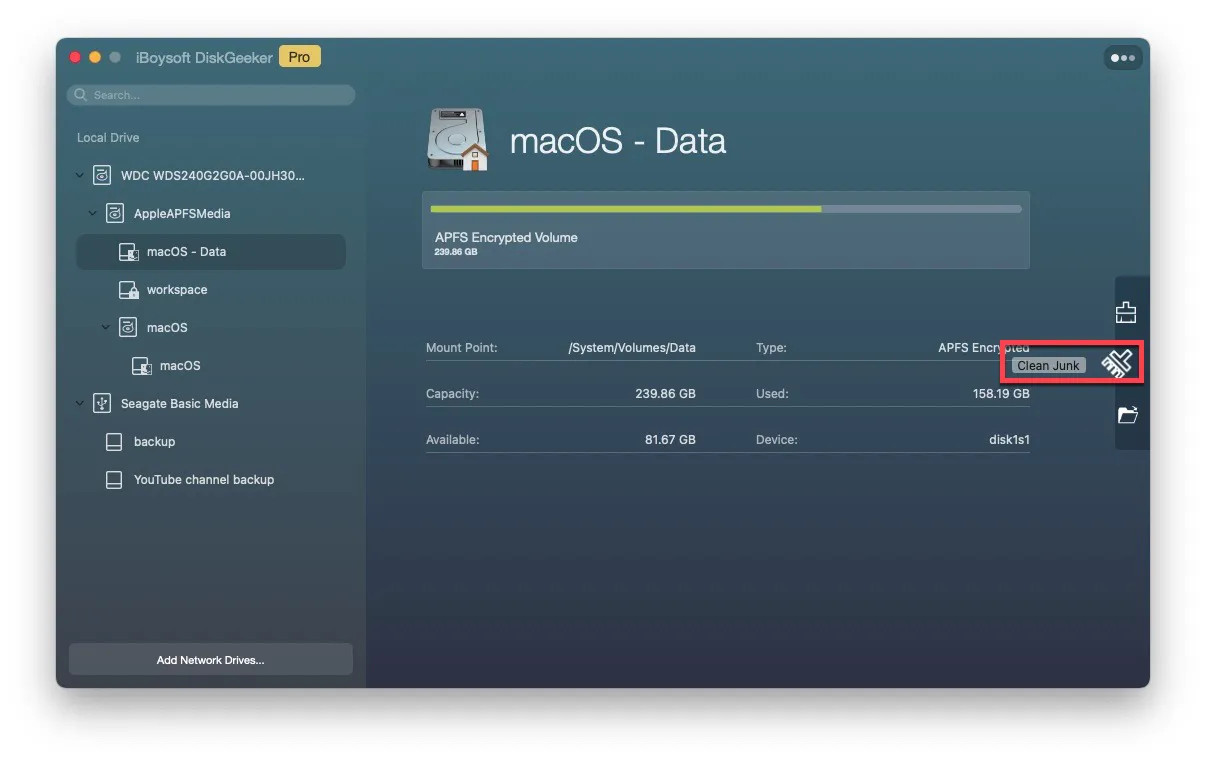
- Click Ok to confirm the deletion.
- Check if the Safari running slow on Mac issue still exists.
Disable or remove unnecessary Safari extensions
Though some of the Safari extensions are quite useful, they can do more harm than good by affecting the browsing experience and the loading speed. Besides, extensions eat up resources. So, in this situation, you can either turn off or directly remove those unused or not frequently used extensions in Safari.
Here's how to speed up Safari on Mac by disabling and removing Safari extensions:
- Launch Safari on your Mac.
- Click Safari in the Apple Menu , choose Preferences, then click on the Extensions tab.
- To disable an extension, simply untick the checkbox next to it.
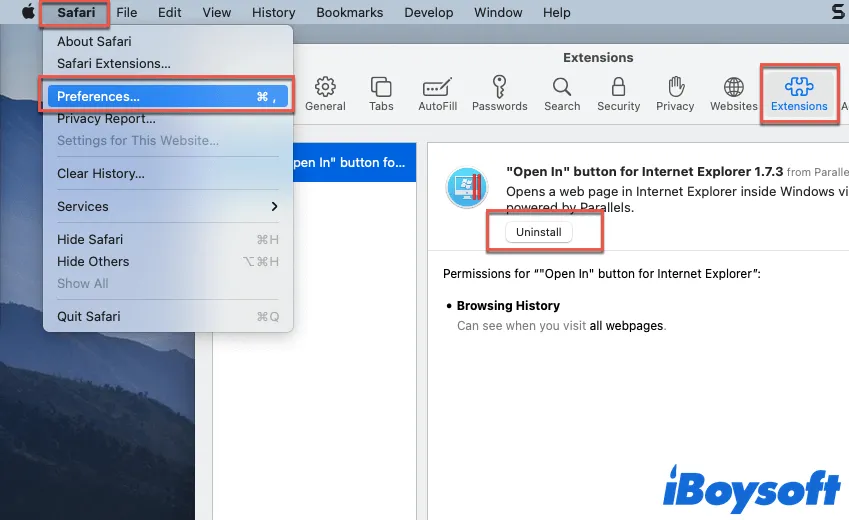
How to delete extensions on Mac?
If you want to remove the unwanted and useless extensions on your Mac to speed up your browser and Mac performance, follow this guide to uninstall them quickly. Read more >>
Think these solutions are quite inspiring? Why not share?
Clear up Safari cache and cookies
Like Google Chrome or any other browser, Safari will keep a cache of data from websites you visit. This takes up disk space and leads to some performance problems. So, it's always to clear up the Safari cache once in a while if you need to improve the browser's speed, here's how:
- Launch Safari on your Mac, and click Safari in the Apple Menu.
- Go to Preferences > Advanced.
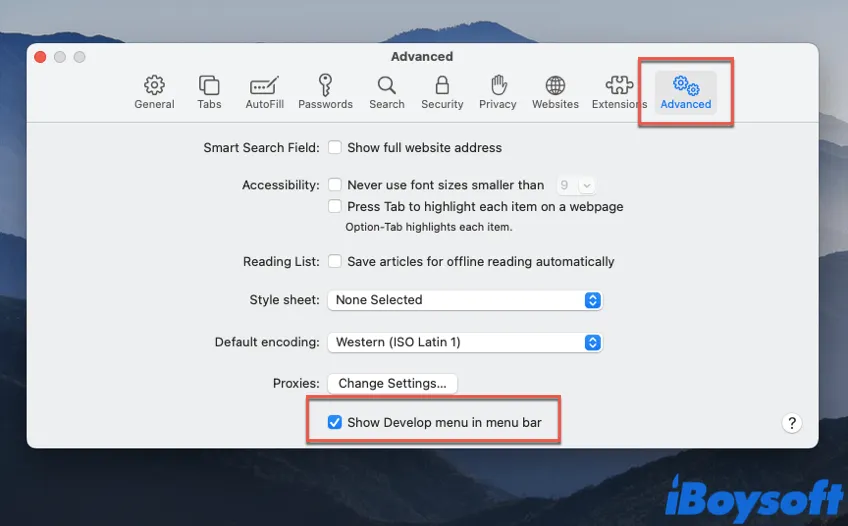
Corrupted and outdated cookies may slow down Safari, and thus affect its performance. So, removing cookies in Safari can also help you speed up Safari on Mac, here's how:
- In the Apple Menu, go to Safari > Preferences > Privacy.
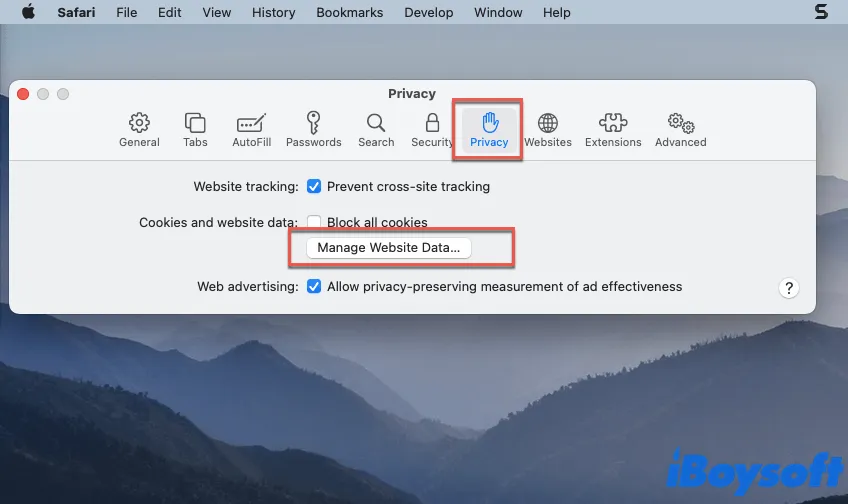
- Click Remove Now to clear up Safari cookies.

Clear Cookies on Mac in Safari, Chrome, & Firefox (2022)
How to clear cookies on Mac? This guide helps you delete cookies and cache in Safari, Chrome, and Firefox on Mac/MacBook Air/ MacBook Pro. Read more >>
Disable autofill
Autofill can help you enter passwords automatically in Safari. But the more data you store in autofill, the more resources Safari needs. Disable autofill is another way to fix the Safari running slow on Mac issue.
- Launch Safari, click Safari in the Apple Menu, then choose Preferences.
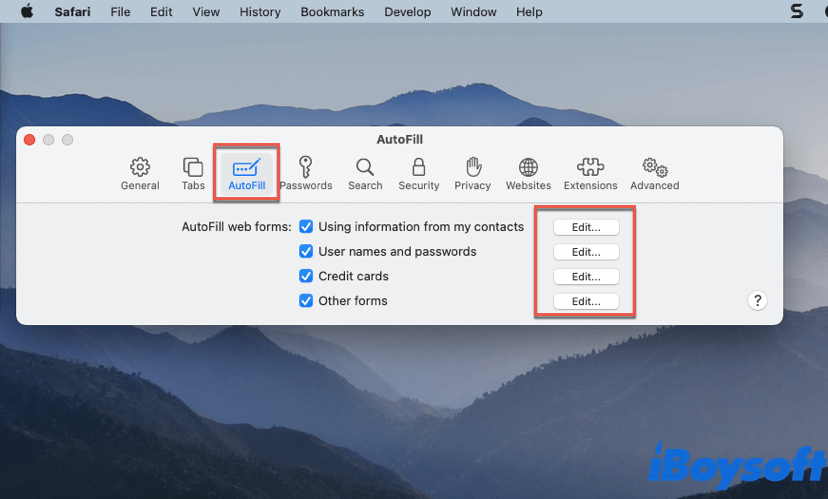
- Remove your autofill data.
Reset Safari to factory defaults
If any of the above solutions fail to fix your problem, you can reset Safari to factory defaults. Do note that resetting Safari will clear up all extensions and browser settings. So, consider it twice before doing it. Here's how:
- Quit Safari on your Mac.
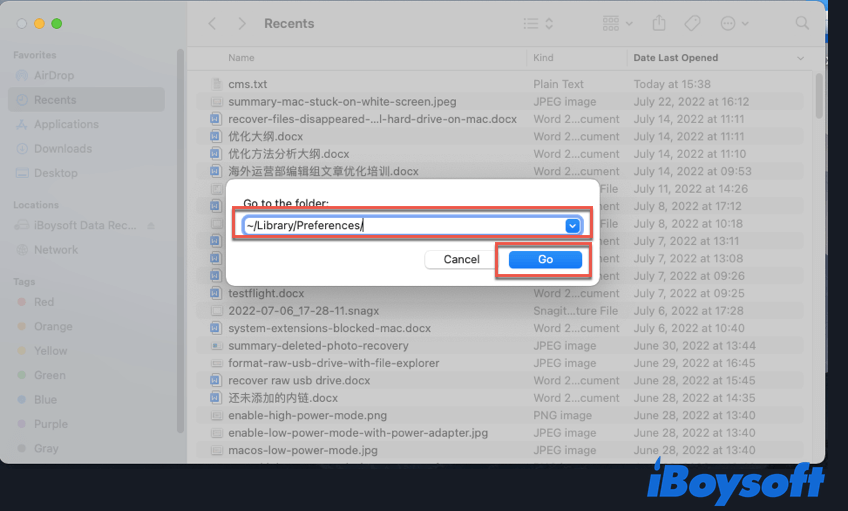
- Search for com.apple.Safari.plist file, and move it to Mac Trash .
- Press Command + Shift + G together again, type " ~/Library/Safari/ " in the pop-up window, and delete all items in the folder except the Bookmarks.plist file.
- Visit " ~/Library/Containers/ ", search for Safari, then delete all files and folders appear in the found results.
Update macOS to the latest version
Apple releases a new version of macOS every year. Each new macOS version fixes some bugs and improves the performance of Safari. So, if your Mac is not running the latest macOS, you can try to update Mac , and see if this Safari running slow on Mac problem still exists.
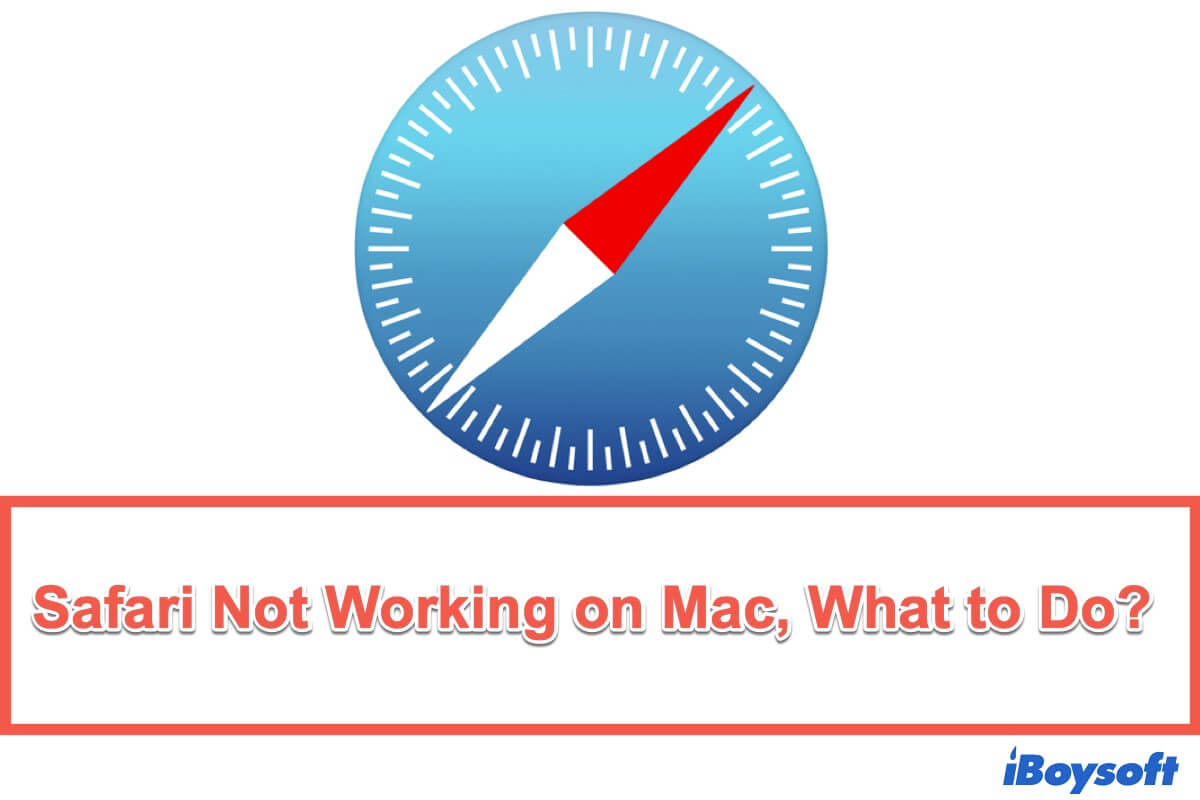
Safari Not Working on Mac/MacBook, How to Fix? (2022)
Safari not working on Mac/MacBook, how to fix it? This guide helps fix Safari that's not working properly, not responding, or not opening on Mac. Read more >>
Fix Safari running slow on Mac issue successfully? Share this post with more people!
In this article, we tell you the possible causes that may lead to the Safari running slow problem. Also, explain to you how to speed up Safari on Mac with nine feasible solutions. Hope you can solve your problem after reading this post!
FAQ about speed up Safari on Mac
To improve the loading speed of Safari, here are the things you can do: 1. Update your Mac to the latest macOS version. 2. Disable all unused extensions of Safari. 3. Clear up caches, cookies, and autofill data from Safari. 4. Close the not actively used tab in Safari. 5. Restart your Mac.
Yes, clean cache does make Safari faster. But cleaning up the Safari cache can only speed up Safari temporarily. Because Safari will keep a cache of data from all websites you visit, deleting it once does make some difference. But soon, Safari will become slow again. So you should clear cache regularly.
The Safari takes too long to load pages issue happens frequently. It may be caused by too many tabs opened, Mac running out of CPU usage, or overmuch Safari extensions. Besides, if your Safari version is out of date, it will lead to this problem as well.
Rivers Wong is a technical content creator and optimizer at iBoysoft. After comprehensive and systematic learning of macOS, Windows OS, data security, and storage devices, he is capable of providing informative and helpful articles.
Jessica Shee is a senior tech editor at iBoysoft. Throughout her 4 years of experience, Jessica has written many informative and instructional articles in data recovery, data security, and disk management to help a lot of readers secure their important documents and take the best advantage of their devices.
No. 308, 3/F, Unit 1, Building 6, No. 1700, Tianfu Avenue North, High-tech Zone
Copyright© 2024 iBoysoft ® . All Rights Reserved.
- Accessories
- Meet the team
- Advertise with us
- Privacy Policy

We all want fast browsing on our iPhone. Safari is the default iOS browser, and we love using it. However, for some, it may run slow or crash and provide an overall degraded browsing experience. If you are one of them, follow these tips to fix Safari running slow on iPhone and iPad.
- Close Unnecessary Safari Tabs
- Clear History and Website Data
- Force Quit Safari and Restart It
- Turn Off Javascript
- Disable Safari Suggestions
- Disable Background Tasks
- Update iOS on iPhone or iPad
- Reset Network Settings
1. Close Unnecessary Safari Tabs
If you have multiple open tabs, you can close them all in one go .
To close all Safari tabs at once, long press on the two-square icon from the bottom right of Safari. Next, tap on Close All [number] Tabs.
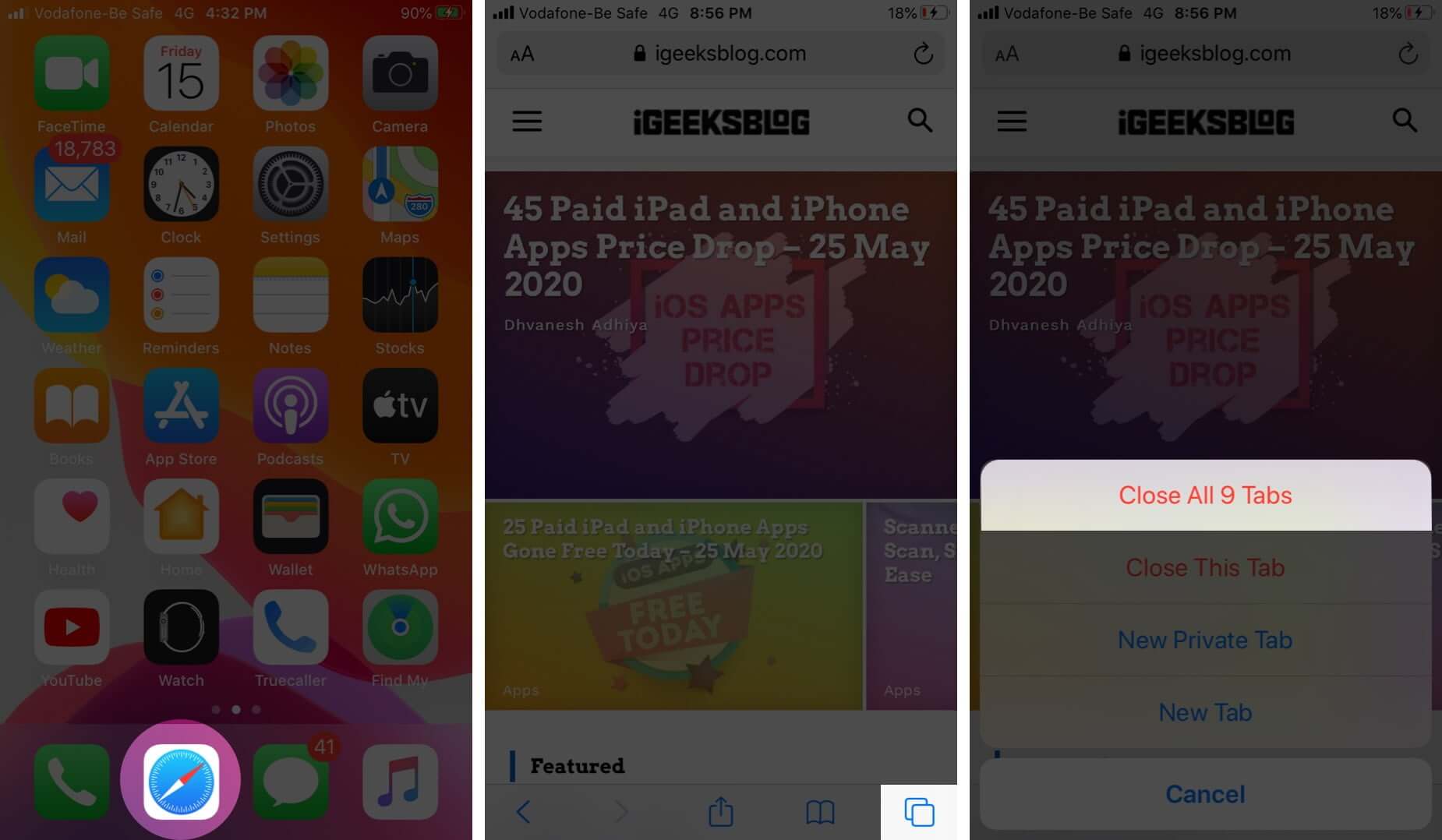
2. Clear History and Website Data
It is quick and easy to clear Safari history and website data . For this, open the Settings app, scroll down and tap on Safari.
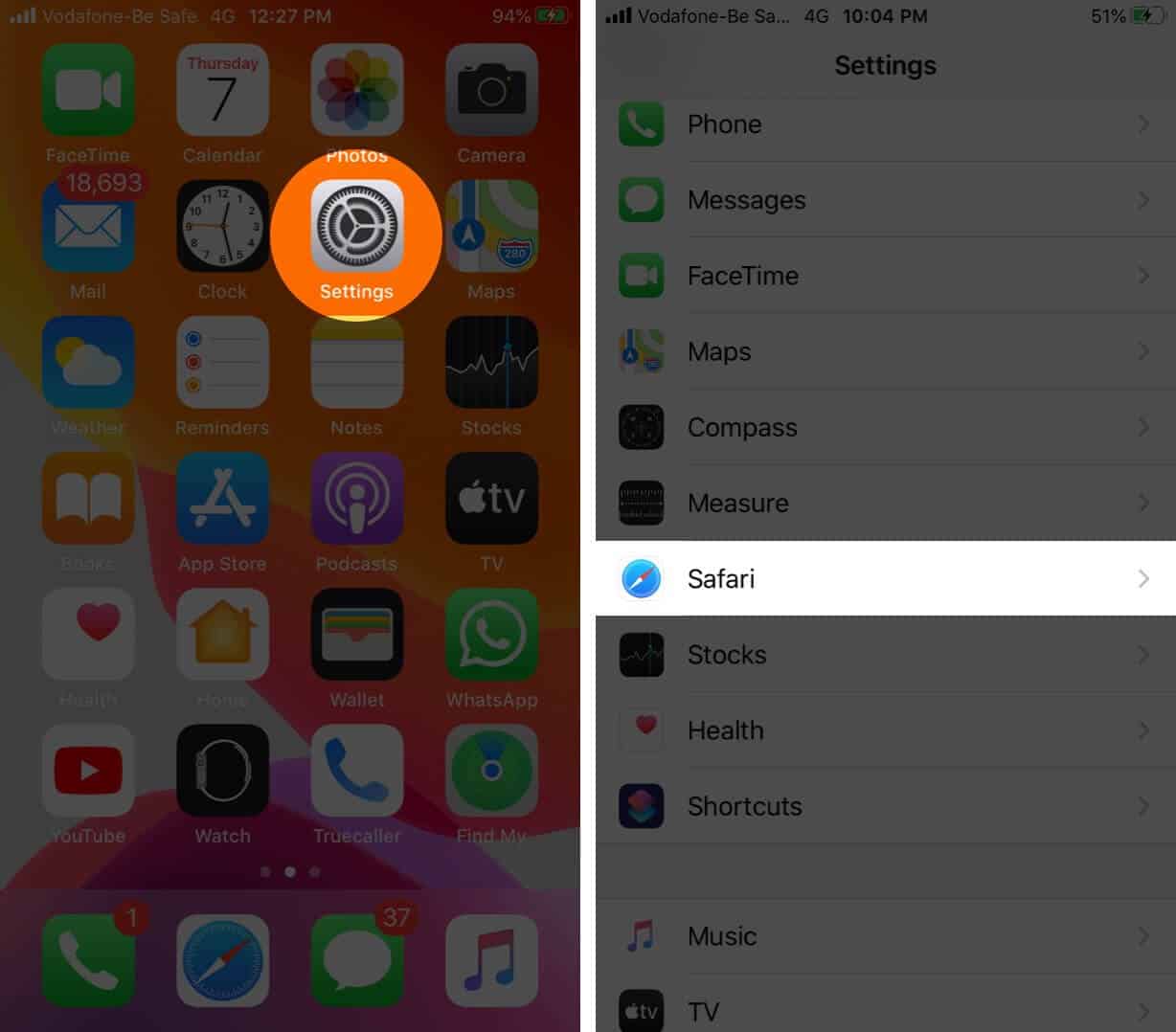
Next, tap on Clear History and Website Data and confirm your action.
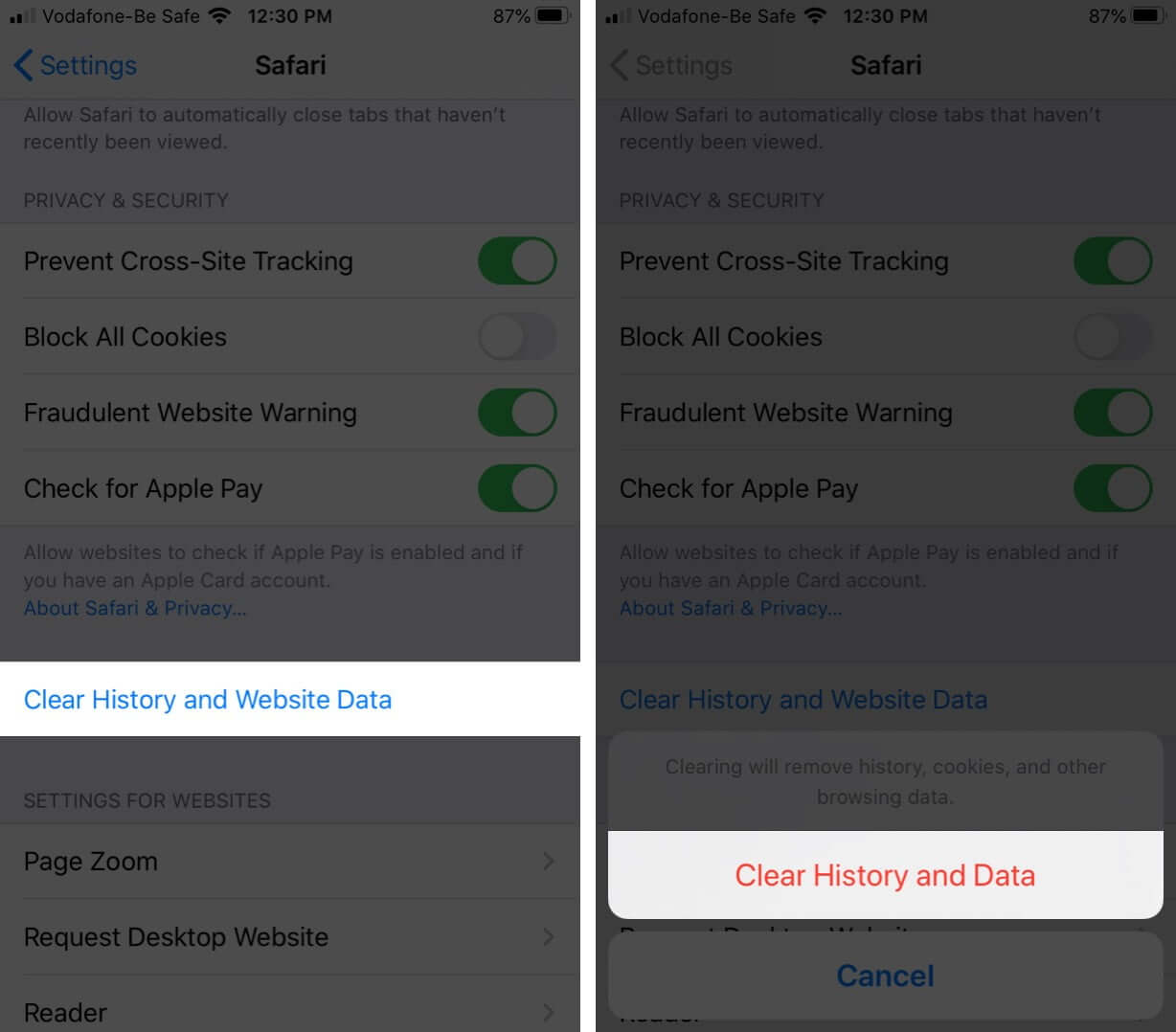
3. Force Quit Safari and Restart It
On iPhone and iPad with Face ID, swipe up from the bottom of the screen and hold. On devices with Home button, quickly double press it. Now, drag the Safari app card up to force close the app . After a moment, relaunch Safari.
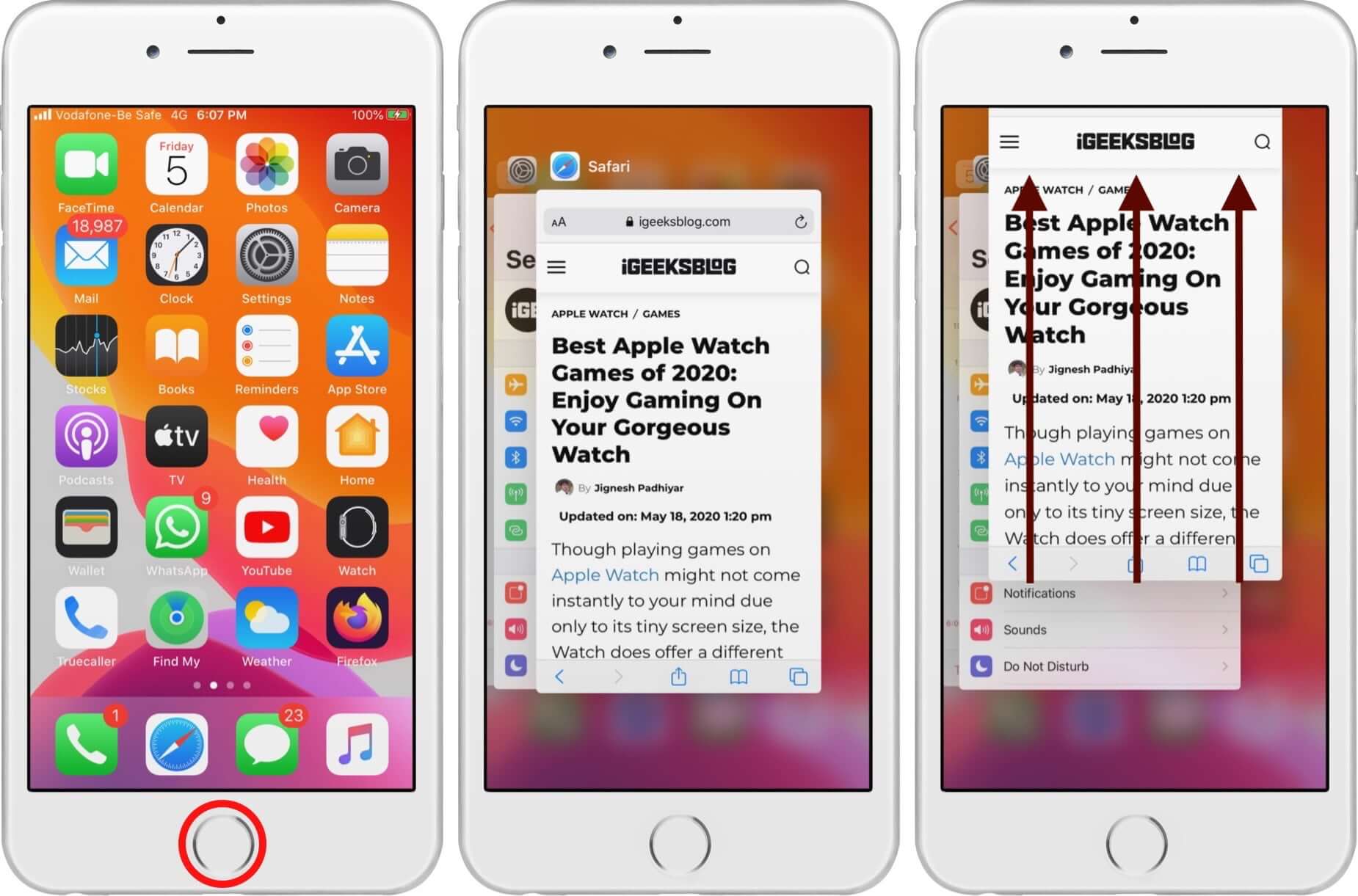
4. Turn Off Javascript
- Tap on Advanced from the bottom
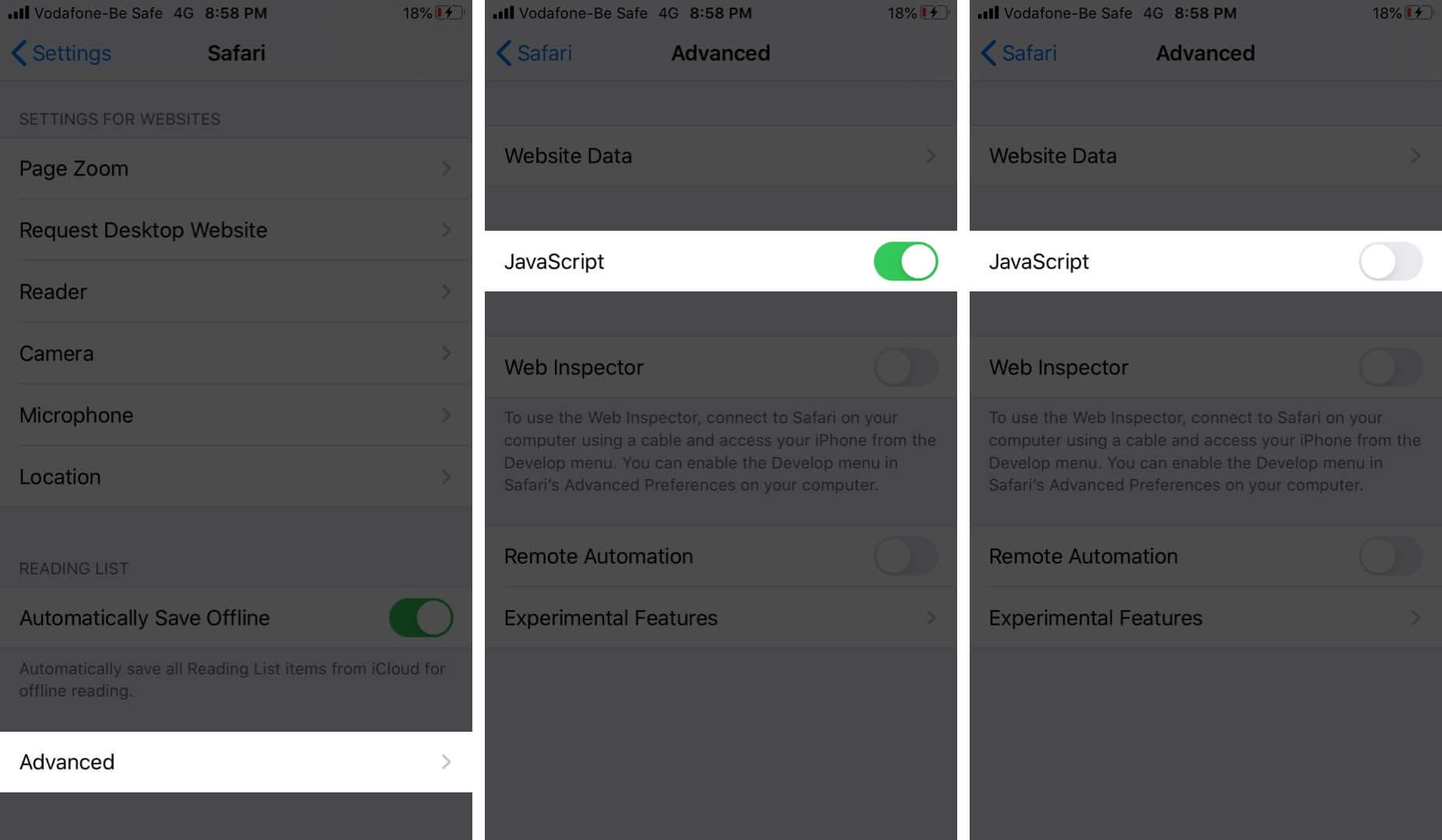
5. Disable Safari Suggestions

6. Disable Background Tasks
One reason Safari feels slow can be due to background tasks. Turning off automatic iOS updates and app updates might help. Secondly, disabling Background App Refresh may also boost the Safari performance.
To switch off automatic app update , tap on iTunes & App Store inside the Settings app. Disable the toggle for App Updates.
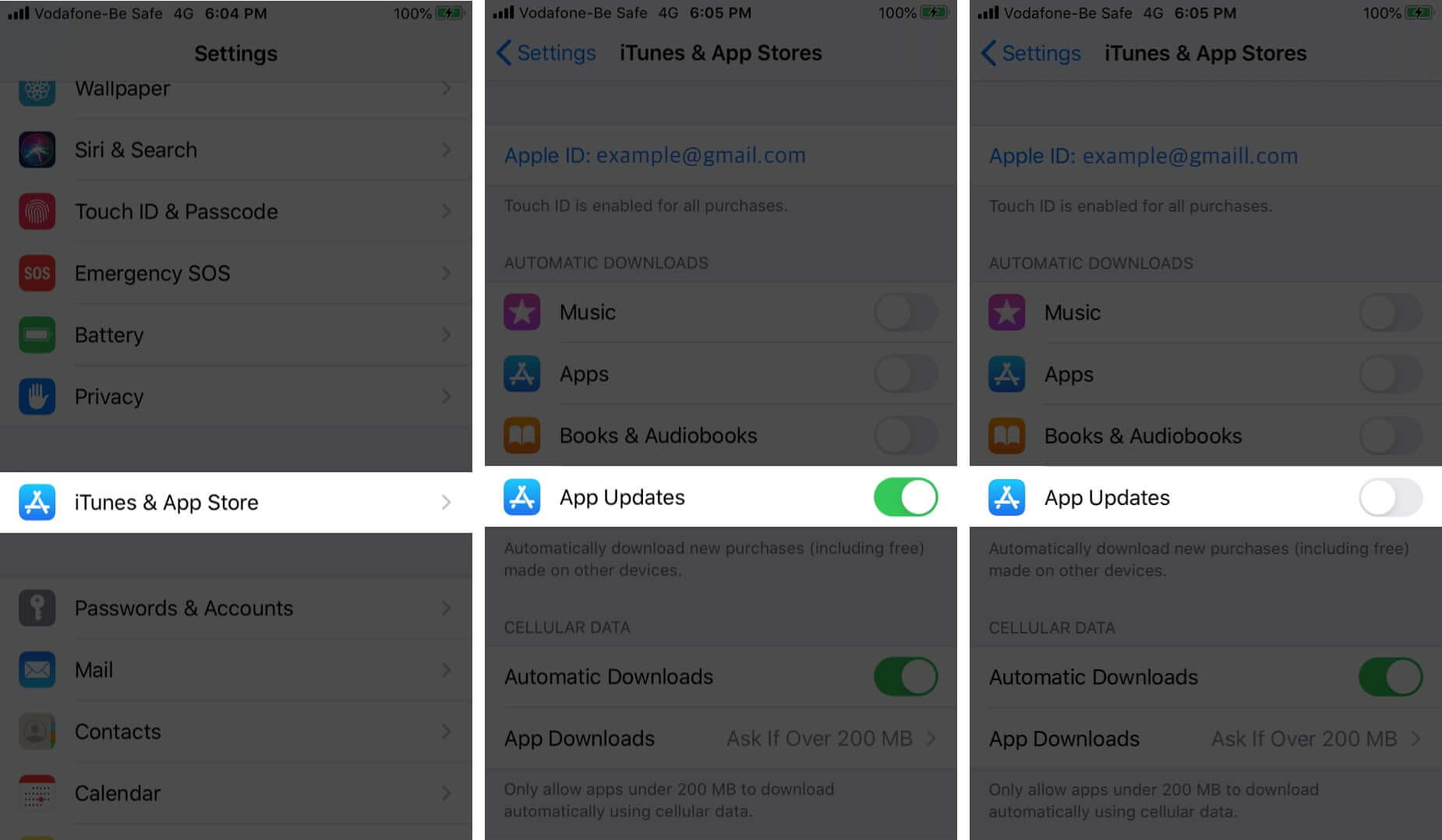
For turning off Background App Refresh , open the Settings app, and tap on General. Tap on Background App Refresh. On the next screen, you can turn it off for individual apps.
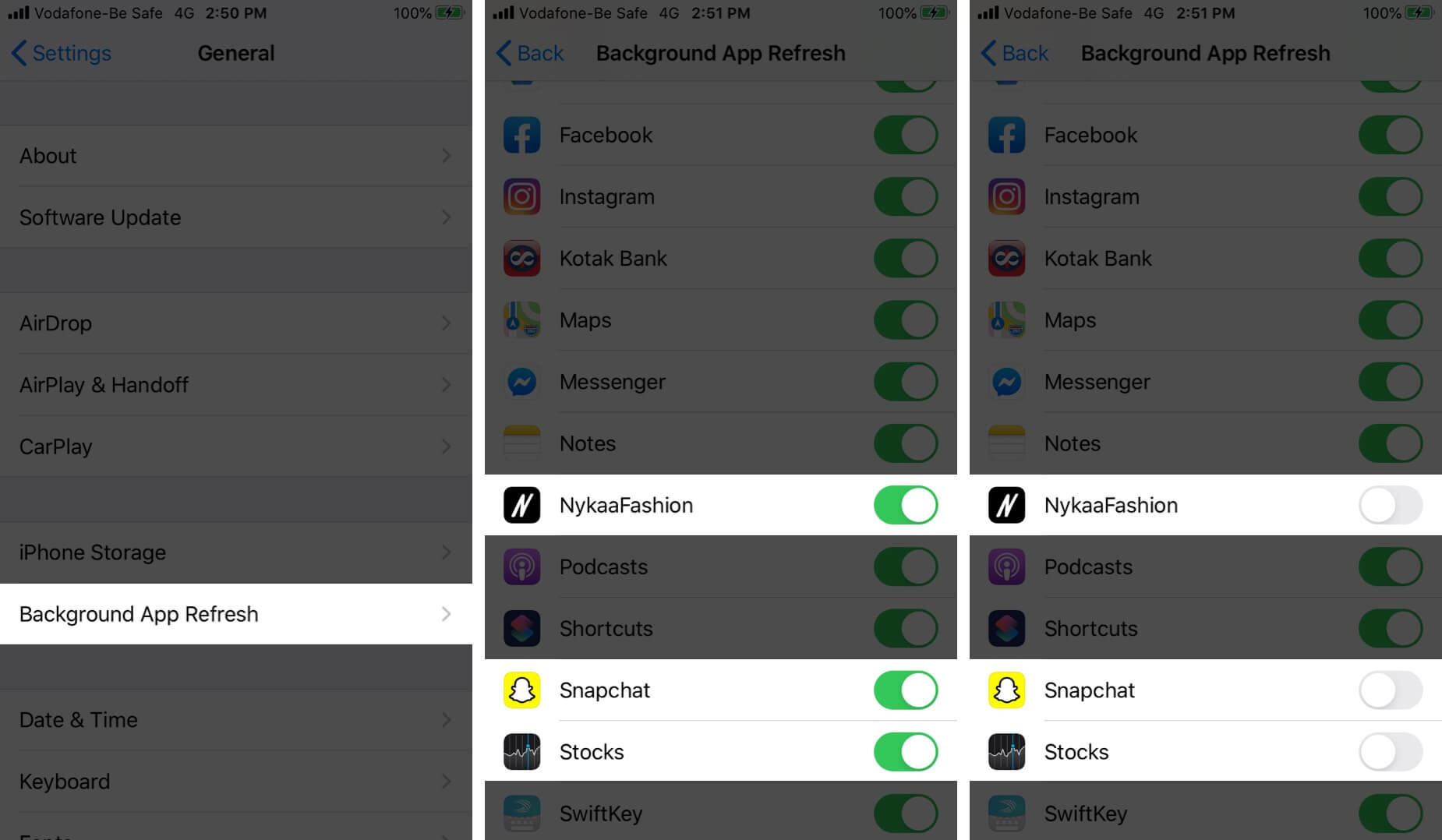
You may also disable it entirely by tapping on Background App Refresh and choosing Off.
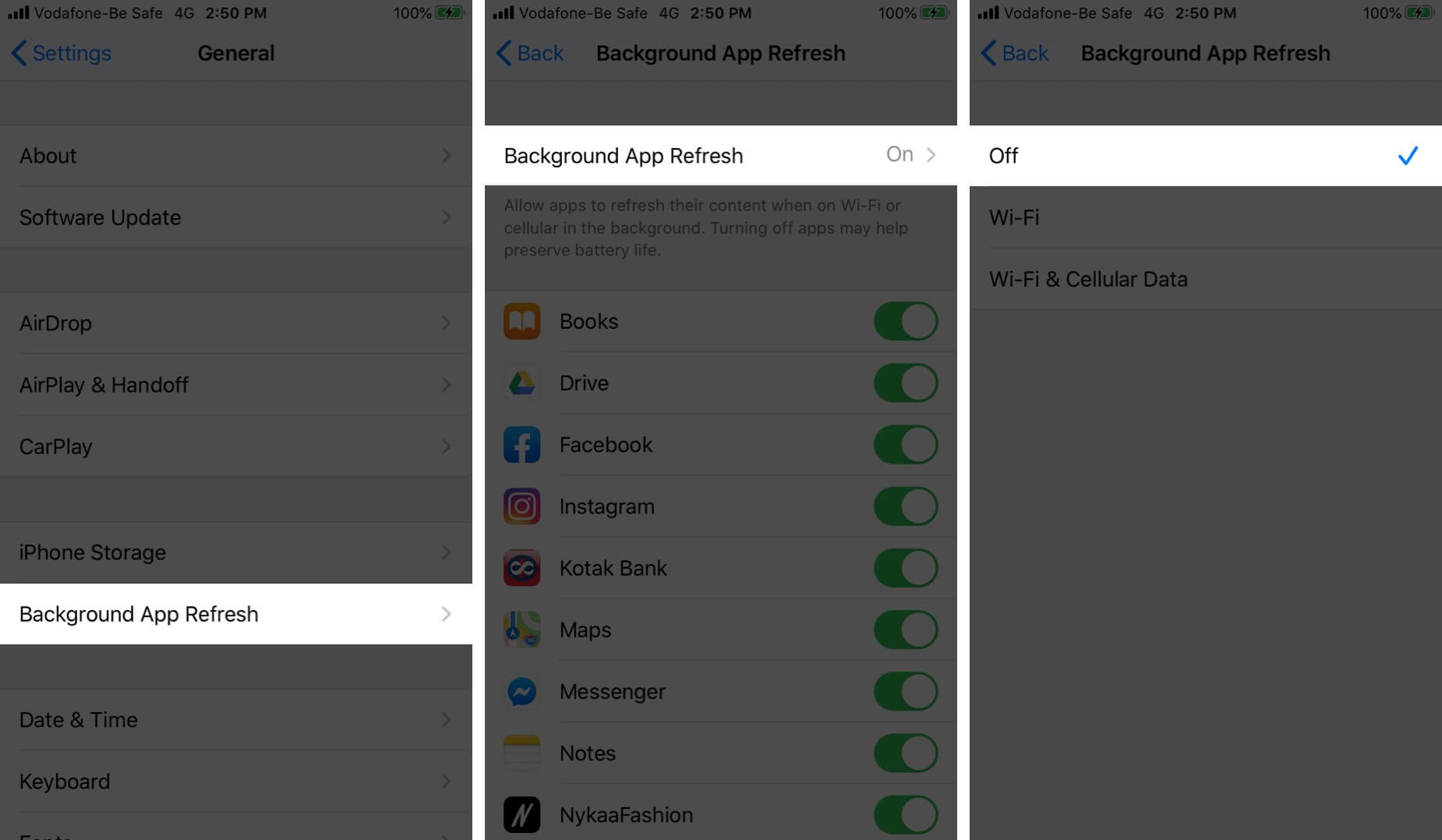
7. Update iOS on iPhone or iPad
Safari is a core app, and its updates, fixes, and improvements are handled directly via iOS software updates. It is good to run the latest version of iOS on your device. To update, open the Settings app and tap on General. Next, tap on Software Update , and if you have a pending update, tap on Download and Install.
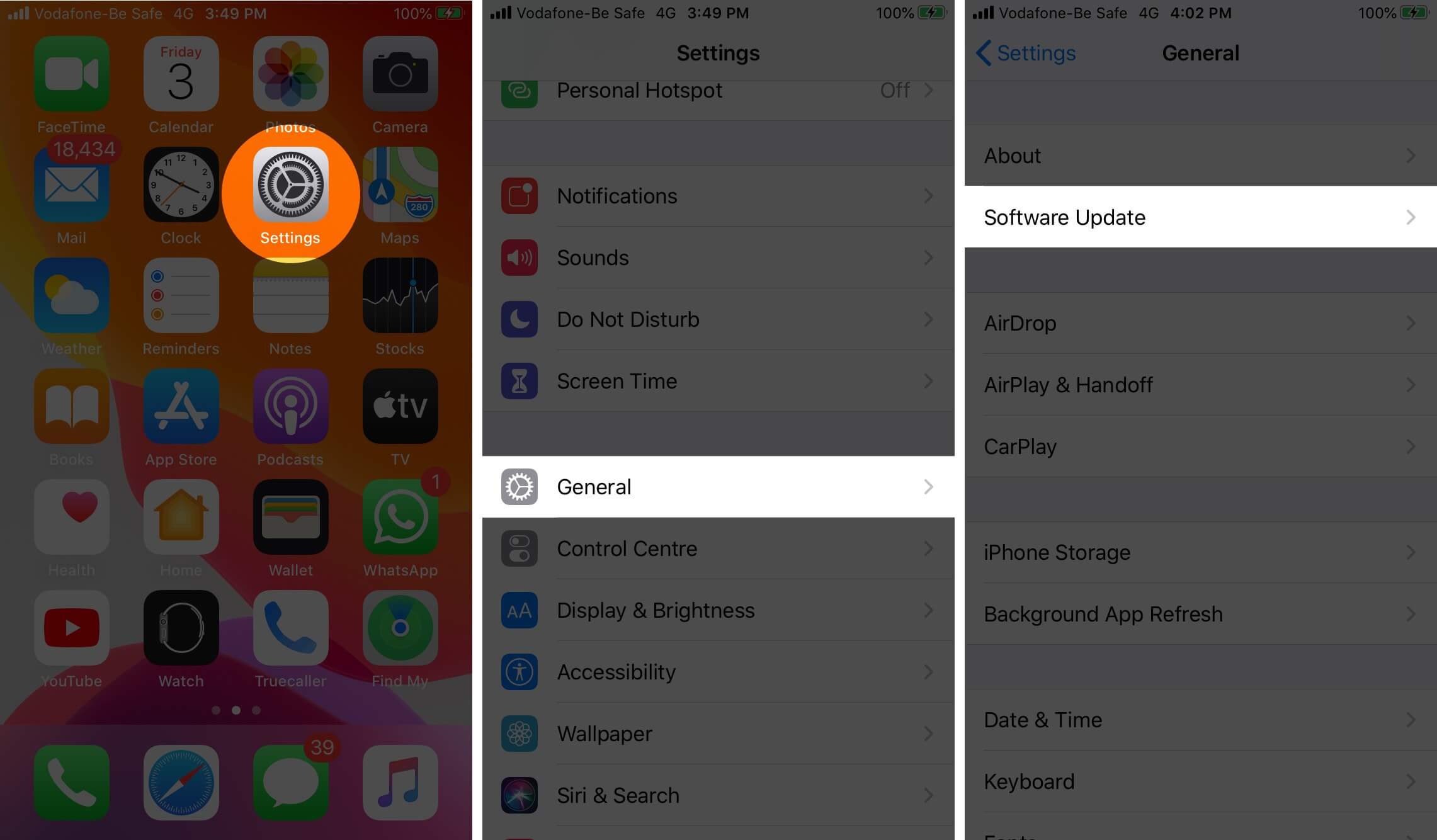
8. Reset Network Settings
In case, nothing helps, a reset of the network settings might come to the rescue. This will not delete any personal data. It will, however, erase saved Wi-Fi networks, Bluetooth devices, VPN configurations, and other such network settings. Before you proceed, it is recommended that you backup your device to a computer or iCloud.
To reset the network settings, open the Settings app, and tap on General. Scroll to the end and tap on Reset.
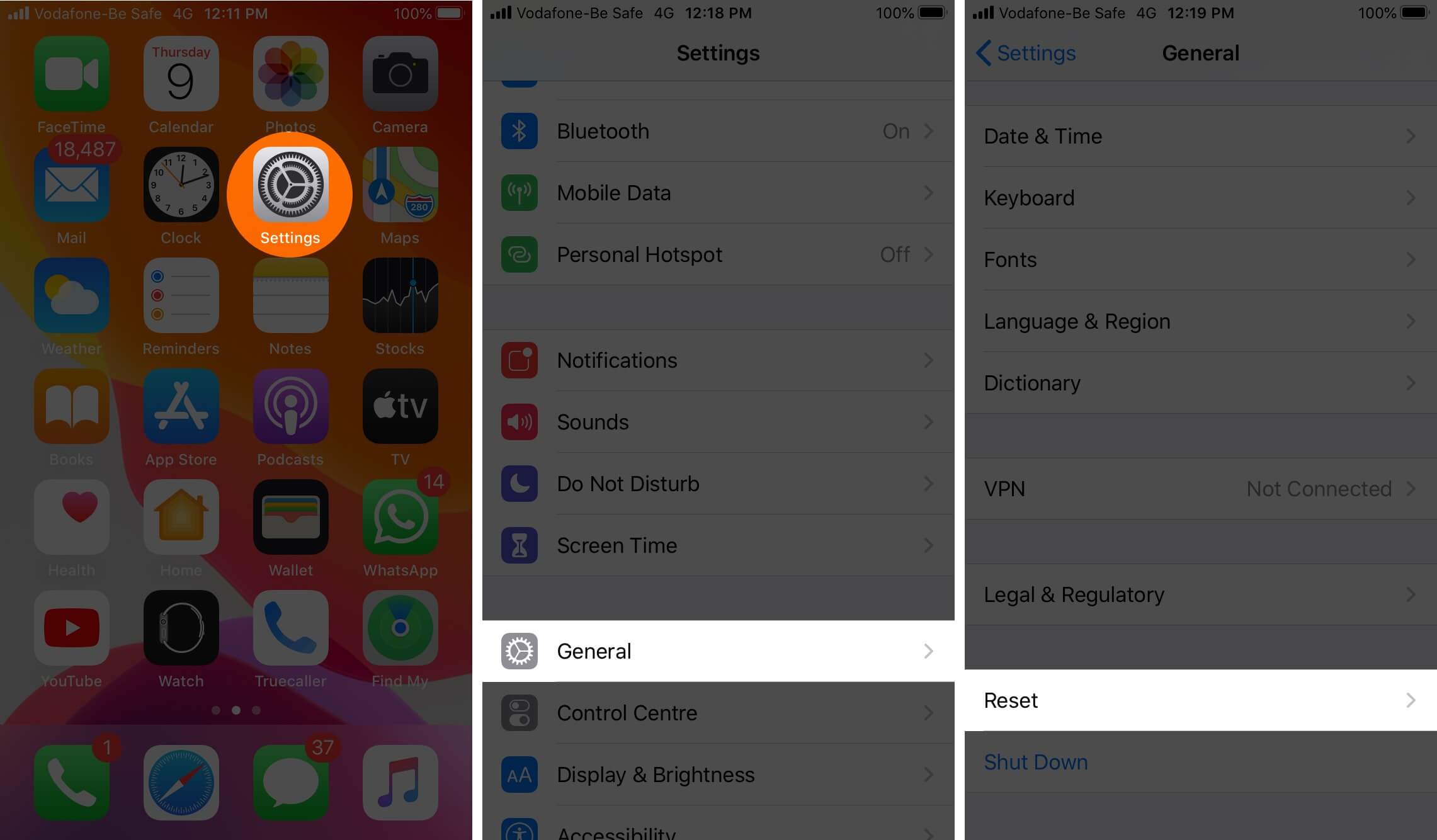
Next, tap on Reset Network Settings. Enter your iPhone password and confirm the reset.
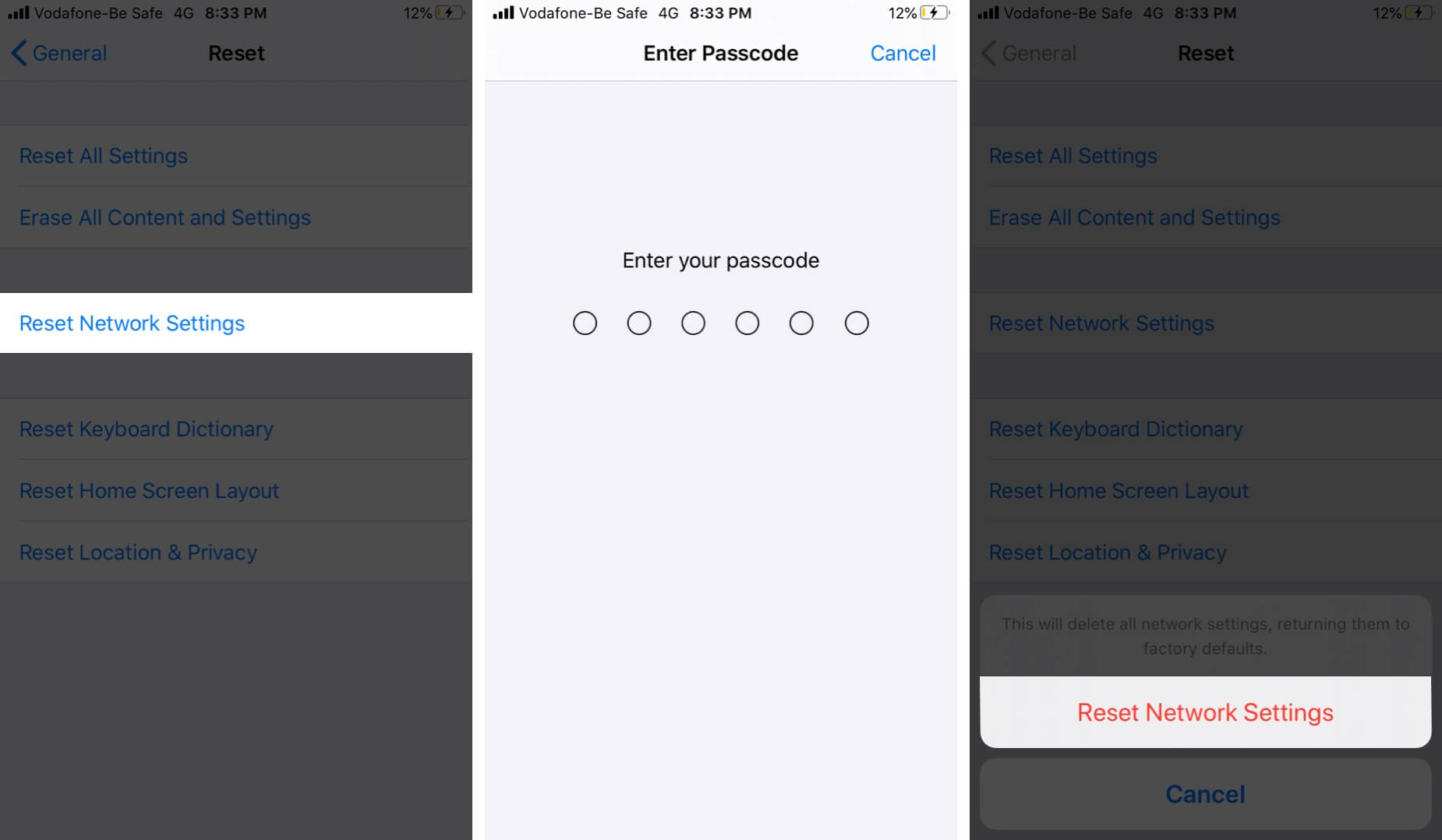
Signing off…
These are some of the effective solutions to fix the problem of slow Safari. You may also try to use Safari in Private tabs . Lastly, if you remain unsatisfied with Safari, you may consider trying some other reliable browsers for iOS and iPadOS .
You would like to read these posts as well:
- How to Translate Webpages in Safari on iPhone and iPad
- How to Delete Frequently Visited Sites in Safari on iPhone
- Best Safari Extensions for iPhone and iPad
- How to Request Desktop Site in Safari on iPhone or iPad
Jignesh Padhiyar is the co-founder of iGeeksBlog.com, who has a keen eye for news, rumors, and all the unusual stuff around Apple products. During his tight schedule, Jignesh finds some moments of respite to share side-splitting content on social media.
View all posts
🗣️ Our site is supported by our readers like you. When you purchase through our links, we earn a small commission. Read Disclaimer .
LEAVE A REPLY Cancel reply
Save my name, email, and website in this browser for the next time I comment.
Related Articles
10 best places to buy refurbished iphones in 2024, how to download watchos 10.5 beta 3 on apple watch, how to download macos sonoma 14.5 beta 3, how to download ipados 17.5 beta 3 on ipad.
- Skip to primary navigation
- Skip to main content
- Skip to primary sidebar
Technology Simplified.
How to Speed Up Slow Safari Browser on Mac
By: Waseem Patwegar | Filed Under: Mac
If the Safari Browser on your MacBook is running slow, you can find below the steps to speed up Slow Safari Browser on Mac.
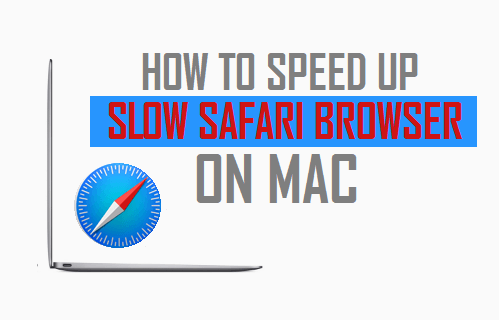
Slow Safari Browser On Mac
Similar to Google Chrome and other Web browser, the default Safari Browser on Mac can slow down over a period of time and sometimes become painfully slow due to corrupted cache and other reasons.
When this happens, you may notice a considerable delay in loading of web pages, you may find it difficult to scroll down the web pages and find certain websites failing to load.
Hence, we are providing below the steps to fix the issue of a Slow Safari Browser on Mac.
1. Clear Safari Browsing History
Start by clearing the Safari Browsing History on your Mac.
1. Open Safari Browser > select the Safari tab in top-menu bar and click on Clear History…. option.
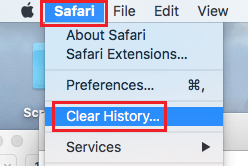
2. On the pop-up, select All History and click on Clear History button.
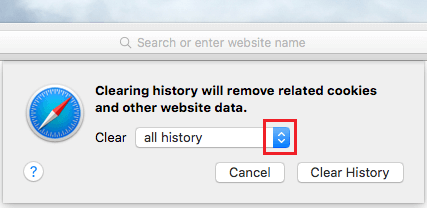
2. Change Safari Search Settings
While “Smart Search Settings” in Safari browser can enhance your browsing experience, they are also known to slow down the browser.
1. Open Safari Browser > select the Safari tab in top menu bar and click on System Preferences option in the drop-down menu.
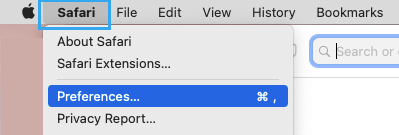
2. On the next screen, click on the Search Tab and disable Enable quick website search , Preload top hit in the background and Show Favourites options.
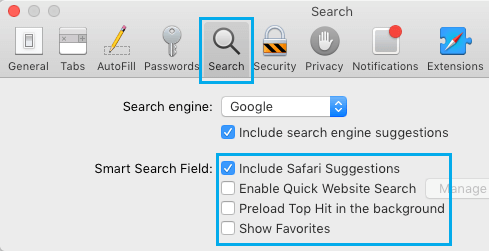
3. Turn OFF Dashboard
While the Dashboard feature on Mac is useful, it takes up resources, which can lead to slowing down of the Safari browser, especially on older MacBooks (2010 or earlier).
Hence, try disabling the Dashboard on your Mac and see if it makes any difference to the speed of Safari browser on your Mac.
1. Click on Apple Logo in top-menu bar and select System Settings… or System Preferences in the drop-down menu.
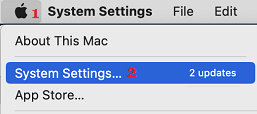
2. On the System Preferences screen, click on Mission Control .

3. On the next screen, turn OFF the Dashboard feature on your Mac.
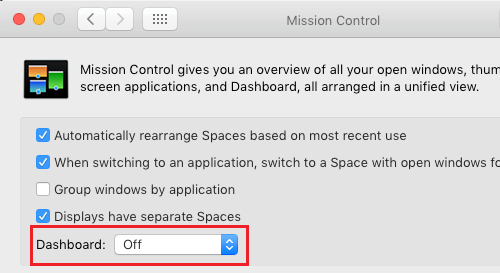
4. Clear Safari Browser Cache
Over a period of time Safari Browser Cache can grow large in size, leading to slowing down of the browser.
1. Open Safari Browser > select the Develop tab in top-menu bar and click on Empty Caches option in the drop-down menu.

Note: You need to Enable Develop menu in Safari , it is not enabled by default on Mac.
Once the Cache is emptied, you may find your favourite websites loading a bit slower during the first visit, but they will start loading faster during your subsequent visits.
5. Disable Safari Browser Extensions
Certain Safari Browser Extensions can slow down the browser and interfere with proper functioning of Safari on your Mac.
1. Open Safari Browser > select the Develop tab in top-menu bar and click on Disable Extensions option in the drop-down menu.
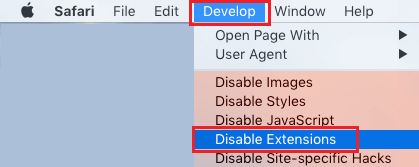
This will Disable all the Safari Browser Extensions on your computer.
6. Disable Unused Network
If you are mostly using Ethernet or WiFi, disabling the unused Network can help in speeding up Safari browser.
2. On System Preferences screen, click on the Network option.

3. On the next screen, select the unused Network (WiFi in this case) and click on Turn OFF button.
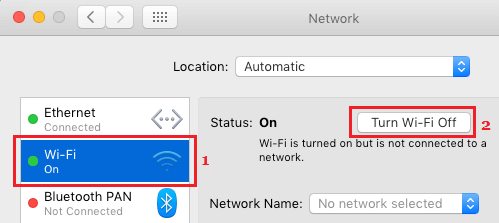
7. Establish Network Priority
In you use both WiFi and Ethernet, setup Network priority based on which Network you are mostly connected to.
1. Open System Preferences > click on Network .
2. On the Network screen, click on the Gear shaped icon and select Set Service Order… option in the drop-down menu.
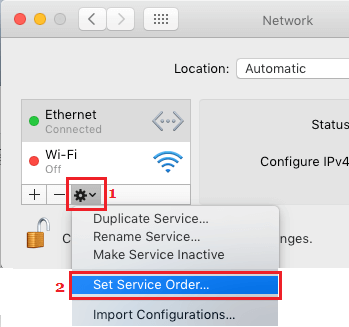
3. On the next screen, drag WiFi below Ethernet Network (if you mostly use Ethernet) or drag Ethernet below WiFi (If you mostly use WiFi Network).
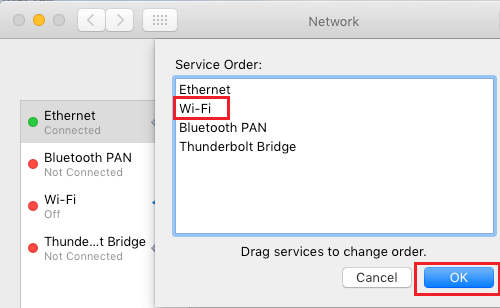
4. Click on OK to save this setting on your Mac.
8. Update Safari Browser
The best way to get the most out of Safari browser on Mac is to make sure that you are running the latest version of Safari browser on your computer.
1. Click on the Apple Icon in the top-menu bar and select About This Mac . option in the drop-down menu.

2. On the next screen, click on Update Software button
9. Use Google DNS
If you notice that the Safari Browser on your Mac usually gets slower during certain periods of the Day, the problem might be due to the DNS servers of your service provider getting congested.
You can switch to Google’s free Public DNS Service or OpenDNS and see of this helps in improving the browsing speed on your Mac.
The steps the change the DNS servers on you Mac can be found in this guide: How to Switch to Google DNS on Windows and Mac .
- How to Change Safari File Download Location On Mac
- How to Allow or Block Pop-ups in Safari Browser
Home » Mac » 8 Easy Ways to Speed Up Safari
8 Easy Ways to Speed Up Safari
Download and try Outbyte MacAries right now to see what it can do for your Mac.
Developed for macOS
Special offer. See more information about Outbyte and uninstall instructions . Please review EULA and Privacy Policy .
Safari has experienced a major overhaul with the release of macOS Big Sur . Safari fans have a lot to look forward to, not just because of the new features, but also in terms of speed and performance as well.
According to Apple, the new Safari is going to be twice as fast as Google Chrome. If this is true, that’s a huge leap in speed. And since the browser is optimized for Mac, it is less power-hungry and can provide you with more browsing and streaming time.
But did you know that Safari is more than that? There are several tips and tricks you can apply to boost speed and performance of Safari.
Why Is Safari Slow?
Most of the time, Safari offers the fastest and most efficient browsing performance for Mac users because Apple puts a lot of resources into optimizing its performance and energy consumption. But there are times when Safari becomes extremely slow or not performing properly due to some reason. It can even be unresponsive even if you’re not doing intensive.
Pro Tip: Scan your Mac for performance issues, junk files, harmful apps, and security threats that can cause system issues or slow performance.
Special offer. About Outbyte , uninstall instructions , EULA , Privacy Policy .
If Safari is too slow or is not performing properly, the first thing you need to do is check your internet connection. The problem might be caused by a poor internet connection. If you have a problem with your internet, then your browser will be greatly affected.
An outdated Safari also tends to be more prone to performance issues and slow speed. So if it’s been some time since you last updated your browser, you might need to check if there’s any update that you need to install.
Sometimes Safari can’t run properly if you have too many tabs open, you have a pile of cached files stored on your browser, or some extensions are not compatible with your browser.
Regardless of the reason, a slow Safari is a common cause of headaches for Mac users. If you find your browser unusually slow, you can speed up Safari with these tips.
How to Make Safari Browser Faster
If your Safari browser is crashing, freezing, or sluggish, you can tweak some settings to speed it up. Here’s how to speed up Safari in nine ways:
1. Restart and Install Updates.
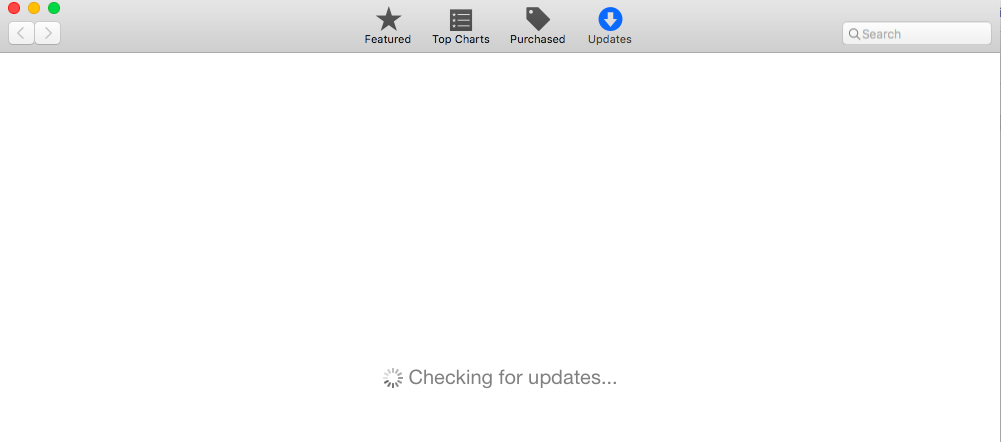
A simple restarting of your computer can fix many computer troubles, including a slow Safari. It should always be the first thing you should try when troubleshooting such issues. Just click the Apple menu then choose Restart.
After your Mac boots up, check if you have any outstanding Safari app updates in App Store > Updates. You should also check if there are pending macOS updates.
2. Close Unnecessary Tabs.

Do you have more than 10 or 20 tabs open every time you use Safari? How many of those tabs do you actually need? All your tabs remain active in the background, even if you’re not really using them. The easiest way to speed up Safari to close all tabs that you don’t need. Or you can choose to restart Safari and get rid of all the open tabs. Press Command + Q or click the X button to quit Safari.
3. Delete the Safari Cache.

Just like other browsers, Safari also saves a cache of data from the websites you access. This is so that you don’t have to fetch this data the next time you visit. This cached data eats up disk space, contributing to performance problems. It’s always a good idea to clean up Safari regularly by emptying the cache. This is particularly useful in improving the browser’s performance.
To clear your Safari browser’s cache:
- Open Safari , then click Safari > Preferences from the top menu bar.
- Click on the Advanced tab, and tick off Show Develop menu.
- Close the Preferences window.
- Click Develop > Empty Caches from the top menu to delete all cache.
4. Remove Faulty Extensions.
Safari has a wide selection of useful extensions Mac users can install, but there are times when they do more harm than good. This is especially true for extensions that directly impact the browsing experience.
To isolate the misbehaving extension, disable all your extensions under Safari > Preferences > Extensions by unchecking the box next to it. Next, re-enable the extensions one by one to find the culprit. You don’t have to worry because disabling extensions this way doesn’t remove them. If you want to completely remove them, you need to click the Uninstall button.
5. Restrict Plug-Ins.
Apple has been trying to eliminate plug-ins from the Safari browser, but some might cause performance issues or slow down occasionally. This happens when you’re running an older version of Safari. Make sure to configure plug-ins to ask you before Safari loads them. The same is true for other security settings.
To review this, go to Safari > Preferences > Websites to check which websites have requested access to your Mac. Go through the list and disable access for the websites that don’t need it. Disable auto-play as much as necessary.
If you’re using an older version of Safari, go to Safari > Preferences > Security > Plug-In Settings and set the plug-ins to Ask before they start running.
6. Identify Faulty Websites.
Is there a particular website that causes Safari to slow to a crawl? Websites can cause your browser to crash if it has too many scripts, auto-playing ads, rogue extensions, and problematic embeds. This can bring, not just your Safari but your entire Mac, to a grinding halt.
To fix this problem, do the following:
- Open Activity Monitor under Applications > Utilities.
- In the CPU tab, arrange the processes by name and find Safari.
- Check the % CPU column and close your Safari tabs one by one to see which has the biggest effect on your CPU usage.
- Once you’ve found that tab, make sure to block that website to prevent Safari from visiting that URL again.
7. Make Sure You Have Enough Storage Space.
Low disk space can impact your Mac’s overall performance. It is more likely to freeze, stutter, slow down, and crash. Safari is often one of the first apps impacted by this problem, so it is one of the signs that you need to free up some space.
For best performance, keep a healthy buffer of at least 10GB or more of free space. If you’re out of space, you can use a Mac cleaner to remove junk files from your computer.
8. Fix Other Performance Issues.
Boosting your Mac’s overall system performance will also boost speed and performance of Safari. This is because your resources are not tied up in non-critical tasks, making them available for Safari. You can close all unnecessary apps running in the background or disable some of the login items that load during startup. Keeping your Mac running in perfect condition also improves your Safari’s performance.
What’s Next?
The steps above should be enough to boost speed and performance of Safari, but it is also important to keep a backup browser just in case. You can try installing Google Chrome or Mozilla Firefox for when Safari becomes too slow to use.

Tips & Tricks
Troubleshooting, how to speed up or slow down any video in safari on iphone / ipad.

Do you want to speed up or slow down video playback on a website where the feature isn’t supported? As long as you use Safari to browse the web on your iPhone or iPad, there’s a nifty Shortcuts workaround that you can use to adjust the video playback speed according to your liking.
Popular video streaming platforms like YouTube allow users to conveniently change the video playback speed from the player itself. Unfortunately, a lot of websites don’t support this feature and you may have noticed that you’re unable to change the speed of all the videos that you’re watching in Safari. Well, this particular iOS shortcut has managed to address this issue. You can install and use it to speed up or slow down pretty much any video within Safari.
The Shortcuts app has been really helpful in bringing features that aren’t natively available in iOS/iPadOS and this time is no different. Here, we’ll be taking a look at how you can use the Shortcuts app to speed up or slow down any video in Safari.
How to Speed Up or Slow Down Any Video in Safari with Shortcuts
For those who aren’t aware, the iOS Shortcuts app is pre-installed on devices running the latest versions of iOS and iPadOS. However, if you’re iPhone or iPad running an earlier version, you’ll need to download it from the App Store . Once you’re done, simply follow these steps:
That’s it. The video will resume playing at the speed you selected using the shortcut.
Note that you can speed up the video to a maximum of 2x, but you can only slow it down to 0.8x using this particular shortcut. In comparison, the YouTube player lets you slow videos down to 0.25x.
What makes this Shortcut unique is the fact that you can run it from the iOS share sheet. You don’t need to open the Shortcuts app at all, unlike several other shortcut actions. Hence, it feels like a feature that’s natively built into iOS rather than a third-party solution.
The Gallery section of the Shortcuts app is a home to several other handy shortcuts too. For example, you can install the Convert Burst to GIF shortcut to make a GIF from your burst photos . Apart from the Gallery, you also have access to hundreds of other user-created shortcuts as long as you’ve allowed the installation of untrusted shortcuts on your device . Shortcuts is a pretty handy app, so don’t miss some of the great tricks you can do with it .
Did you speed up or slow down video playback in Safari on your iPhone or iPad? What’s your take on this nifty shortcut? How often do you find this shortcut useful and on what websites do you need it? Do share your personal experiences and feel free to leave your valuable feedback in the comments section down below.
Enjoy this tip? Subscribe to our newsletter!
Get more of our great Apple tips, tricks, and important news delivered to your inbox with the OSXDaily newsletter.
You have successfully joined our subscriber list.
Related articles:
- How to Speed Up & Slow Down Videos on iPhone with iMovie
- How to Automatically Change iPhone Wallpaper with Shortcuts
- How to Install Third-Party Shortcuts on iPhone & iPad
- How to Record Slow Motion Video with iPhone Camera
» Comments RSS Feed
How do you slow it down to less than .8?
I get the same “there are not videos” problem, looks like something broke
You are amazing!! Thanks for sharing this with me
Great information and I fix my issue for a long time
Thank you very much
I found it!! But it says there are no videos on the page even though there is a video playing. How to get around this error ? Is it because the video is embedded?
There’s no “Share Sheet Shortcuts” in iOS 14.6
Look for the “Share Sheet Shortcuts” or you can use the search bar and find the shortcut by typing in “Change Video Speed”.
Leave a Reply
Name (required)
Mail (will not be published) (required)
Subscribe to OSXDaily
- - How to Uninstall Apps on MacOS Sonoma & Ventura via System Settings
- - How to Mute a Call on Apple Watch
- - How to Use the Latest GPT 4 & DALL-E 3 Free on iPhone & iPad with Copilot
- - 15 Mail Keyboard Shortcuts for Mac
- - How to Use Hover Text on Mac to Magnify On-Screen Text
- - Apple Event Set for May 7, New iPads Expected
- - Beta 2 of iOS 17.5, iPadOS 17.5, macOS Sonoma 14.5, Available for Testing
- - Opinion: Shiny Keys on MacBook Air & Pro Are Ugly and Shouldn’t Happen
- - MacOS Ventura 13.6.6 & Safari 17.4.1 Update Available
- - Using M3 MacBook Air in Clamshell Mode May Reduce Performance
iPhone / iPad
- - How to Bulk Image Edit on iPhone & iPad wth Copy & Paste Edits to Photos
- - What Does the Bell with Line Through It Mean in Messages? Bell Icon on iPhone, iPad, & Mac Explained
- - iOS 16.7.7 & iPadOS 16.7.7 Released for Older iPhone & iPad Models
- - Fix a Repeating “Trust This Computer” Alert on iPhone & iPad
- - Make a Website Your Mac Wallpaper with Plash
- - The Best Way to Clean a MacBook Air Keyboard: Microfiber Cloth & KeyboardCleanTool
- - Fix “warning: unable to access /Users/Name/.config/git/attributes Permission Denied” Errors
- - How to Fix the Apple Watch Squiggly Charging Cable Screen
- - NewsToday2: What it is & How to Disable NewsToday2 on Mac

About OSXDaily | Contact Us | Privacy Policy | Sitemap
This website is unrelated to Apple Inc
All trademarks and copyrights on this website are property of their respective owners.
© 2024 OS X Daily. All Rights Reserved. Reproduction without explicit permission is prohibited.
- 0 + Awards Received
- 0 % Recovery Rate
- 30 Years of Excellence

Recovers lost or deleted Office documents, emails, presentations & multimedia files.
- Professional
Recovers deleted files, photos, videos etc. on Mac.
Recover photos, videos, & audio files from all cameras and storage on Windows or Mac.
iPhone Data Recovery
Recover deleted photos, videos, contacts, messages etc. directly from iPhone & iPad.
Video Repair
Repair multiple corrupt videos in one go. Supports MP4, MOV & other formats.
Photo Repair
Repair multiple corrupt photos in one go. Supports JPEG & other formats.
- Exchange Repair Repair corrupt EDB file & export mailboxes to Live Exchange or Office 365
- Outlook PST Repair Repair corrupt PST & recover all mailbox items including deleted emails & contacts
- OLM Repair Repair Outlook for Mac (OLM) 2011 & 2016 backup files & recover all mailbox items
- Exchange Toolkit Repair EDB & Exchange backup file to restore mailboxes, convert OST to PST, & convert EDB to PST
- Active Directory Repair Repair corrupt Active Directory database (Ntds.dit file) & extract all objects in original form
- EDB to PST Convert online & offline EDB file & extract all mailbox items including Public Folders in PST
- OST to PST Convert inaccessible OST file & extract all mailbox items including deleted emails in PST
- NSF to PST Convert IBM Notes NSF file & export all mailbox items including emails & attachments to PST
- MBOX to PST Convert MBOX file of Thunderbird, Entourage & other clients, & export mailbox data to PST
- OLM to PST Convert Outlook for Mac Data File (OLM) & export all mailbox data to PST in original form
- GroupWise to PST Convert GroupWise mail & export all mailbox items - emails, attachments, etc. - to PST
- EML to PST Convert Windows Live Mail (EML) file & export mailbox data - emails, attachments, etc. - to PST
- Office 365 to PST Connect to Office 365 account & export mailbox data to PST and various other formats
- Migrator for Office 365 Quickly migrate Outlook data files(OST/PST) directly to Office 365 or Live Exchange
- SQL Repair Repair corrupt .mdf & .ndf files and recover all database components in original form
- Access Repair Repair corrupt .ACCDB and .MDB files & recover all records & objects in a new database
- QuickBooks Repair Repair corrupt QuickBooks® data file & recover all file components in original form
- MySQL Repair Repair MyISAM & InnoDB tables and recover all objects - keys, views, tables, triggers, etc.
- Excel Repair Repair corrupt Excel (.XLS & .XLSX) files and recover tables, charts, chart sheet, etc.
- BKF Repair Repair corrupt backup (BKF, ZIP, VHDX and .FD) files and restore complete data
- Database Converter Interconvert MS SQL, MySQL, SQLite, and SQL Anywhere database files
- PowerPoint Repair Repair corrupt PPT files and restore tables, header, footer, & charts, etc. like new
- File Repair Toolkit Repair corrupt Excel, PowerPoint, Word & PDF files & restore data to original form
- Data Recovery Recover lost or deleted data from HDD, SSD, external USB drive, RAID & more.
- Tape Data Recovery Retrives data from all types and capacities of tape drives including LTO 1, LTO 2, LTO 3, & others.
- Virtual Machine Recovery Recover documents, multimedia files, and database files from any virtual machine
- File Erasure Permanently wipe files and folders, and erase traces of apps and Internet activity.
- Mobile Erasure Certified and permanent data erasure software for iPhones, iPads, & Android devices
- Drive Erasure Certified and permanent data erasure software for HDD, SSD, & other storage media
- Exchange Toolkit 5-in-1 software toolkit to recover Exchange database, convert EDB to PST, convert OST to PST, restore Exchange backup, and reset Windows Server password.
- Outlook Toolkit Comprehensive software suite to repair PST files, merge PST files, eliminate duplicate emails, compact PST files, and recover lost or forgotten Outlook passwords.
- File Repair Toolkit Powerful file repair utility to fix corrupt Word, PowerPoint, and Excel documents created in Microsoft Office. It also repairs corrupt PDF files and recovers all objects.
- MS SQL Toolkit 5-in-1 software toolkit to repair corrupt SQL database, restore database from corrupt backup, reset database password, analyze SQL logs, & interconvert databases.
- Data Recovery Toolkit Software helps to recovers deleted data from Windows, Mac and Linux storage devices. Also supports recovery from RAIDs & Virtual Drives.
- MySQL Toolkit 3-in-1 software toolkit to repair Corrupt Mysql, MariaDB & Analyze logs, and Interconvert Databases.
- Tape Recovery Toolkit Stellar Toolkit for Tape is comprehensive software designed to recover data from LTO tapes and support major parsers such as Veritas, TSM, Symantec NetBackup, as well as CPIO and TAR files.
- Email Forensic Advanced email forensic solution for cyber experts to audit, analyze, or investigate emails & gather evidences.
- Log Analyzer for MySQL Analyze forensic details of MySQL server database log files such as Redo, General Query, and Binary Log.
- Exchange Auditor Exchange Server monitoring solution to automate audits, scans and generate reports ìn real-time.
- Log Analyzer for MS SQL Track & analyze MS SQL Server database transactions log files.
- Our Partners
- Lab Services
Trending Searches
Data Recovery
Photo Recovery
File Erasure Software
Exchange Repair
Raid Recovery
MS SQL Repair
Impeccable Tips to Speed Up Slow Safari on Mac
Why is safari slow, how to speed up slow safari.
Summary: Why is Safari slow on my MacBook Pro? This question might have bugged you a lot. Don’t worry! Learn curated tips to speed up Safari on any Mac system. Before you proceed, launch free Mac disk cleaner software to de-clutter Mac SSD or HDD.
Safari runs slow due to the following reasons:
- Poor Internet connection
- Several opened tabs
- Safari history
- Caches & cookies
- AutoFill form text
- Corrupt Safari preferences file
- Third-party extensions
- Extensive use of system resources
- Outdated Safari
- Startup disk issue
- Low free space on the startup disk
To speed up the Safari browser on Mac, you need to follow a few simple tips. But make sure you back up your Mac using Time Machine before implementing any of the tips to avoid data loss. The following section shares some impeccable free tips that can help you speed up Mac and Safari performance.
1. Check Your Internet Speed
The browsing speed of your Safari depends on the following:
- Speed of the Internet you are using
- Speed of the webserver of the website you are visiting
Perform the Internet speed test on your browser; here is one such speed test website . If the speed is slow, try using broadband service or upgrade your Wi-Fi plan to improve Safari’s browsing experience. At times, Safari’s poor speed is attributed to the webserver’s low speed. You could wait for the speed to improve or switch to another exciting and fast site.
2. Close Unrequired Tabs
Opening multiple tabs on Safari reduces its performance. So, check how many tabs you’ve opened and how many of them you are currently using. If you’ve opened many tabs, close all those that are read or bookmarked and keep only those few that you need to browse. Opening an optimal number of tabs improves Safari speed.
3. Remove Safari History
Safari remembers all the websites and web pages you visited recently. You can go to the History menu to find a list of browsed sites and pages. Safari history is quite helpful to track your past browsing activity, but it also reduces the browser’s performance. So, clearing history will help speed up Safari and improve your browsing experience.
To remove Safari history, perform the following steps:
a) Go to the History menu and select Clear History .
b) In the dialog window, select the last hour, today, today and yesterday, or all history, as per your choice. Click the Clear History button to delete the Safari history.
The browsing history of your Safari web browser is removed from your Mac instantly.
4. Empty Cache
Safari creates a local cache when you visit a website for the first time. On subsequent visits to the site, Safari uses the cache to speed up the website loading time. The problem with this cache is that it grows to a considerable size, which slows down Safari’s performance. This slowness is because the browser looks up the cache to determine whether to load pages from the cache or download a new version. When you empty the cache, the browser starts afresh, which automatically reduces the cache lookup times.
To empty cache, perform the following steps:
a) Launch Safari on your Mac.
b) From the Menu bar, navigate to Safari > Preferences .
c) Click the Advanced tab, then select the “ Show Develop menu in menu bar ” checkbox.
d) Close the Preferences window. From the Menu bar, go to Develop > Empty Caches .
There you go, you’ve emptied the cache from your Safari browser. You must empty the cache regularly. The frequency of emptying cache depends on how often you use Safari. In case you use it daily, it is recommended that you empty the cache about once a week, or whenever you remember to do it, it could be less.
5. Remove Cookies
Safari stores a small piece of data called cookies on your Mac storage drive to store session information, personalization, and tracking. But it too, reduces Safari performance. You can remove stored cookies and data by using the following steps:
b) Navigate to Safari > Preferences > Privacy .
c) Click Manage Website Data .
d) Select one or more websites, then click Remove or Remove All .
Once stored cookies are removed from your Mac, Safari will work at an improved speed.
6. Configure Autofill
Safari remembers your user name, password, and other information for websites you visit and keeps the information in the AutoFill list with time. This AutoFill list grows, and Safari is slow to load during startup. So, if you don’t require the ease of Autofill, you can, of course, disable it or remove the information for sites that you seldom visit.
To configure Autofill data, perform the following:
a) Go to Apple menu > Preferences .
b) In the Preferences window, click the AutoFill tab.
c) Besides AutoFill Web Forms : uncheck or edit:
- Using information from my contacts
- User names and passwords
- Credit Cards
- Other forms
d) In the Edit window, to delete information for any site, click the Remove button.
That’s it. You’ve configured your Safari Autofill data.
7. Remove Safari Preferences File
Check your Safari preferences file if you encounter a time-out issue, error message, or website non-loading trouble while browsing through Safari. Maybe, the preferences file is corrupt that causes a problem with Safari. Delete the preferences file to fix such issues.
To remover Safari preferences file, perform the following:
a) Press Command + Shift + G to open the Go to folder .
b) Or else, navigate to Finder > Go > Go to Folder .
c) Type ~/Library/Preferences, then click Go .
d) Delete the file com.apple.Safari.plist to remove the preferences file.
Note : Do back up with Time Machine before performing a deletion task.
Next time when you open Safari, the older settings for the web browser won’t be available, and you need to set it up once again if required.
8. Disable Third-Party Safari Extensions
Some third-party extensions are handy utilities, but at the same time, few of them can be a reason for the poor performance of your Safari web browser. Thankfully, most of the extensions are equipped with the disable feature. So, to speed up Safari, you can disable the extensions that you don’t need. The steps to disable extensions are as follows:
c) Click the Extensions tab, then click the toggle switch beside any extension to disable it.
9. Relaunch Safari
Using Safari for a long-time can slow it down, and sometimes it stops responding. If your Safari is slow or unresponsive, close the app and relaunch it to fix the freezing issue. If the app doesn’t quit normally, force quit Safari using the following steps:
a) Press Option + Command + Esc hotkey.
b) Or else, go to Apple menu > Force Quit .
c) Select Safari and click the Force Quit button.
Once the Safari app closes, it releases all used systems resources. Relaunch Safari to make it function correctly.
10. Update Safari
Sometimes, updating your Safari to a newer version might speed it up. You need to install the latest macOS updates to get the recent version of Safari. The steps are as follows:
a) Go to Apple menu > System Preferences > Software Update .
b) Click the Update Now button if macOS updates are available.
c) Install the updates to get the latest Safari version.
d) If your Mac is up to date, quit the Software Update window.
11. Fix Startup Disk Issue
Safari might run slow due to issues with your startup disk. Try fixing the startup disk issues by running First Aid of Disk Utility in macOS Recovery. The steps are as follows:
a) For M1 Mac, press-hold the power button until the startup options screen appears. Click Options > Continue . For Intel Mac, press-hold Command + R keys until the Apple logo appears.
b) In macOS Recovery, go to macOS Utilities , then click Disk Utility > Continue to launch the app.
c) Select Macintosh HD from the sidebar, click First Aid > Run to initiate the startup disk repair.
d) If the repair succeeds, quit Disk Utility, restart Mac, and then let it boot normally.
After fixing the startup disk issue, Safari might work perfectly.
12. Clean Your Mac Disk to Regain Free Space
Safari might be slow due to low SSD free space. So, you must remove junks, caches, and other unneeded files from your Mac to regain free space. The steps to clean Mac disk are as follows:
a) Download and install SpeedUp Mac software on your iMac, MacBook, or Mac mini.
b) Provide full disk access permission to the software if using macOS Mojave or later. Read how.
c) Launch the software to find Speed Up, Memory, Uninstall, Login Items, and Preferences.
d) Click the Speed Up tab, select Macintosh HD from the sidebar, and click Scan to scan the disk.
e) Select a category from the sidebar, verify the selected files, and click CleanUp Now .
f) Wait till the software regains the mentioned free space on the SSD startup disk.
We hope the above tips helped you fix slow Safari on your Mac. By implementing those tips, you can speed up Safari. But if you want to focus your energy on productive tasks on Mac, always make sure you have enough disk spaces, especially when your Mac has an SSD. Use the free Mac disk cleaner app to perform the Mac optimization task (including Safari) with a click of a button.
About The Author

Santosh is a technical writer with 10-year experience in writing. He writes troubleshooting blogs, articles, and other web content on a variety of topics, including data recovery, data security, and data backup. His hobbies include solving puzzles, gardening & painting.
I have 2014 15″ rMBP 10GB RAM. Ever since I upgraded it to the El Capitan, Safari has been running very slowly. When I type text into the address bar, it takes a while to catch up and for the text to appear. Also, scrolling on web pages is taking more time. Would appreciate any help on how I can fix this issue.
Hi, It might be due to cookies, cache, or similar extensions that are creating this problem. To solve this issue, from your Safari menu bar click Safari > Preferences then select the Privacy tab. • Click: Remove All Website Data • Then delete the cache. • Open a Finder window. From the Finder menu bar, click Go > Go to Folder • Type or copy paste the following • ~/Library/Caches/com.apple.Safari/Cache.db • Click Go then move the Cache.db file to the Trash. • Quit and relaunch Safari to test. • If that doesn’t help, troubleshoot Safari extensions. • From the Safari menu bar click Safari > Preferences then select the Extensions tab. Turn that OFF, quit and relaunch Safari to test.
Leave a comment Cancel reply
Your email address will not be published. Required fields are marked *
Related Posts
How to fully uninstall adobe flash player from mac, how to uninstall any antivirus from mac, how to uninstall zoom video app from mac, free trial for 60 days.
WHY STELLAR ® IS GLOBAL LEADER
WHY STELLAR ® IS GLOBAL LEADER
Why Choose Stellar?
Years of Excellence
R&D Engineers
Awards Received
Technology You Can Trust A Brand Present Across The Globe
This website uses cookies in order to provide you with the best possible experience and to monitor and improve the performance of the site in accordance with our cookie policy .
Safari Too Slow on Your iPhone? 4 Ways to Speed It Up
Are webpages taking forever to load in Safari? Follow these troubleshooting steps to resolve your speed-related issues.
Safari is the native browser on Apple devices. While it's usually fast, sometimes Safari can be slow or laggy. When this happens, it can be bothersome, and some might even download another third-party browser.
If you're noticing that Safari is running slow on your iPhone, there are several things you can do to speed it up again. Give these tips a try, and hopefully, Safari will be at full speed in no time.
Check Your Internet Speed
Before passing the blame on Safari, it might be a good idea to check your internet speed. That way, you can make sure Safari is the issue and rule out anything else before continuing.
If you're connected to Wi-Fi, open another computer or device on the same Wi-Fi network, then head to Speedtest's site and check your internet speed. You won't want to do this on your iPhone, as Safari issues can slow your connection time, giving you a false negative.
If your internet speed is fast, then Safari is the issue, and it's time to fix it.
1. Close All Your Safari Tabs
Safari can usually handle a lot of bandwidth and keep many pages open. However, some websites drain Safari data. By closing all the currently open tabs, you can confirm if one of the open websites was using too much data.
To close all the tabs on Safari, open Safari and hold the Tab button in the bottom right-hand corner. A prompt will appear for you to close all the tabs. Once this appears, hit Close All Tabs . Then, give Safari a try again.
2. Clear Your Browsing History and Data
If clearing the tabs didn't fix the issue, you can reset Safari and clear up the cache, speeding it up in the process. To clear Safari, head to Settings > Safari > Clear History and Data .
Once you do this, relaunch Safari and see if it's loading up pages quickly enough. If it's faster for a little while but begins to slow down again, proceed to the next tip.
3. Check Your iPhone's Storage
If your iPhone storage is almost full, that means it can't handle much else. Safari, like most apps, uses device storage to store data from the app. And low storage means Safari won't have enough memory to work.
This is why some users find Safari temporarily faster once they clear their browsing history and data. However, some users might have used so much storage that Safari might not even speed up when you clear the cache.
Luckily, it's easy to check if this is an issue. All you need to do is head to Settings > General > Storage and see how much space your iPhone has used. And if it's almost full, you might have to delete some large files.
However, if you don't want to lose precious data, consider signing up for a paid iCloud plan .
4. Reset Network Settings
When all else fails, you can reset your iPhone's Network Settings. Doing this will reset all network-related connections on your iPhone, hopefully speeding up Safari in the process. Head to Settings > General > Transfer or Reset iPhone > Reset > Reset Network Settings to do this.
Once you do this, you'll need to set up your network connections again. This means re-entering your Wi-Fi passwords. However, it can clear up a lot of bugs, so it is worth a try if all else fails. You can also reset your iPhone to factory settings as a last resort.
Browse Seamlessly in Safari
Safari comes pre-installed on all Apple devices, including the iPhone, iPad, and Mac. And since it's the native browser, it works seamlessly across all your apps and Apple devices.
While switching to a third-party browser like Chrome might seem tempting when Safari is slow or lagging, you'll miss out on a seamless experience. So, it's worth taking the time to fix whatever issue you're facing.
4 ways to speed up Safari on your iPhone
Or your iPad for that matter.

Has browsing the Web become an exercise in frustration with Safari on your iPhone or iPad ?
The first suspect to consider in this crime most foul is your Wi-Fi network itself, but if other devices are humming along at a reasonable clip and it's just a single iOS device whose Safari is acting sluggish and slow, there are a few things you can try to speed it back up.
It's easy to run up the count of open tabs in Safari. As a lifelong fan of Ohio State football, I get a daily email newsletter about the team, and each time I tap on a story, it opens as a new tab in Safari. Do I then close each tab after I'm done reading about my Buckeyes? Of course not. When Safari feels a step slow, I close all of the open tabs I have sitting there in Safari by long-pressing the Tab button in the lower-right corner and then tapping Close All [insert number here] Tabs . (You can also tap the Tabs button and long-press Done to get to the same option.)

Clear history, cookies and data
This move may speed up Safari but will also make the browser a bit more of a pain to use at the outset because it won't suggest a URL as you type until you visit a site again. Go to Settings > Safari and tap Clear History and Website Data to clear your browsing history and data along with any cookies. Your bookmarks will remain, and Safari will remember your AutoFill information for forms.
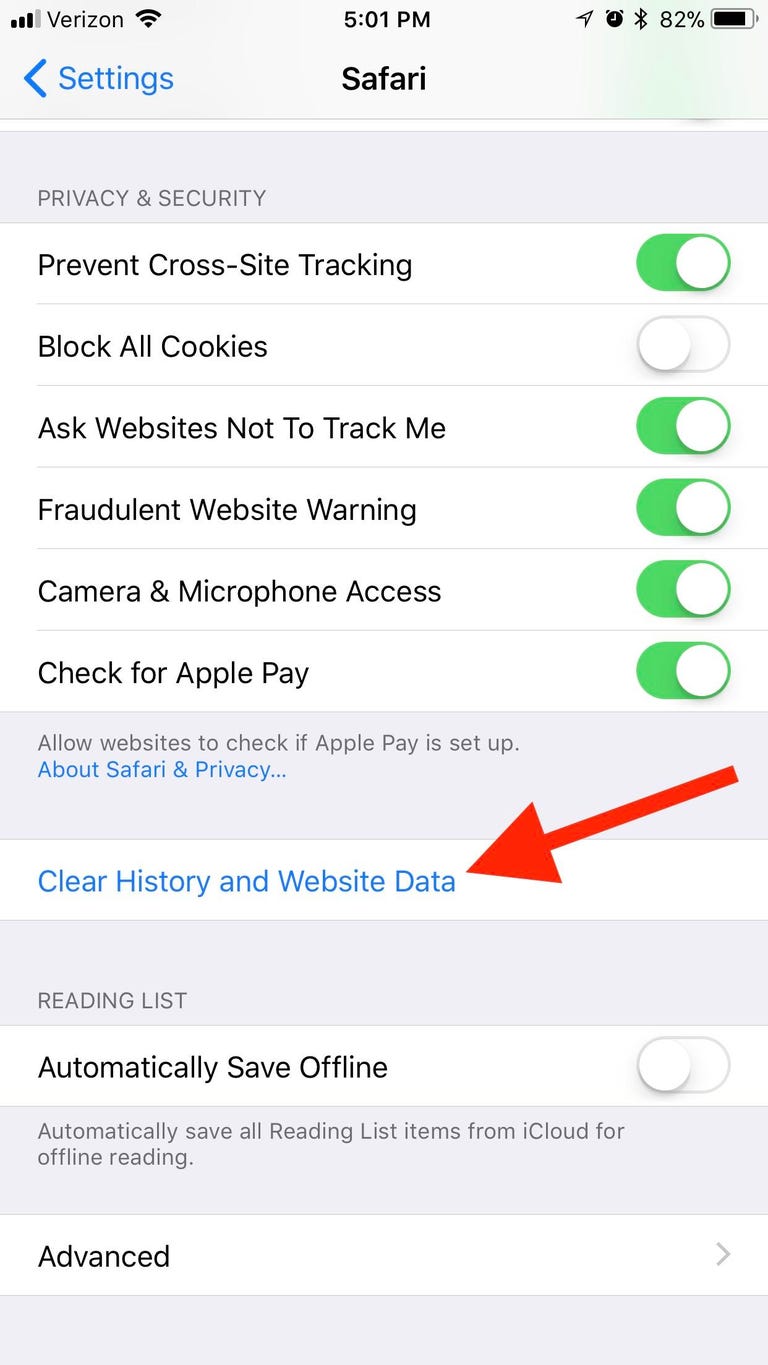
Disable background processes
It may be that Safari itself isn't to blame but a couple of background processes that are syphoning off valuable system resources. If your iPhone is downloading updates and refreshing apps in the background while you are browsing, then your performance might suffer.
To disable automatic downloads, go to Settings > iTunes & App Stores and turn off automatic downloads for Music, Apps, Book & Audiobook and Updates.
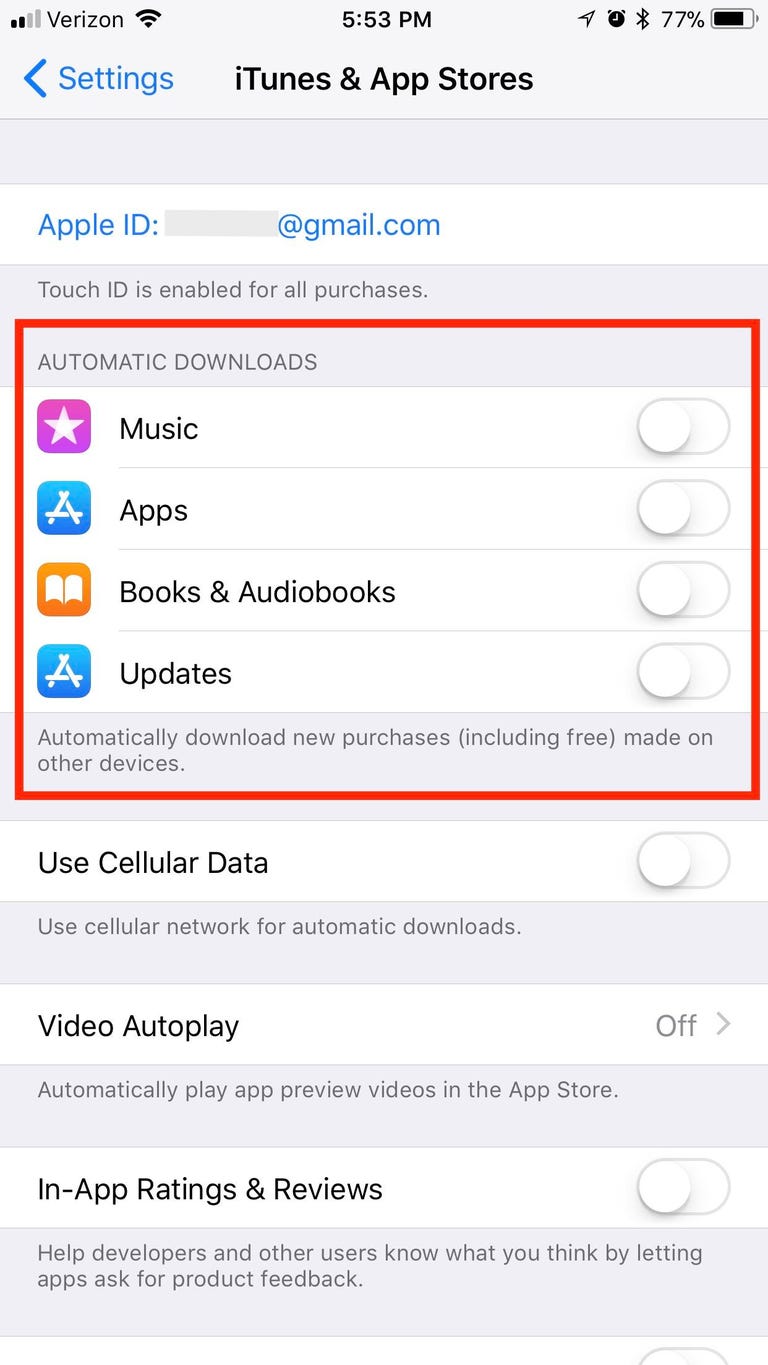
To disable background app refresh, head to Settings > General > Background App Refresh and turn it off. Or, if you have a firm suspicions of the app or apps that are refreshing in the background a bit too much to your liking, you can disable the feature for individual apps from the list below.
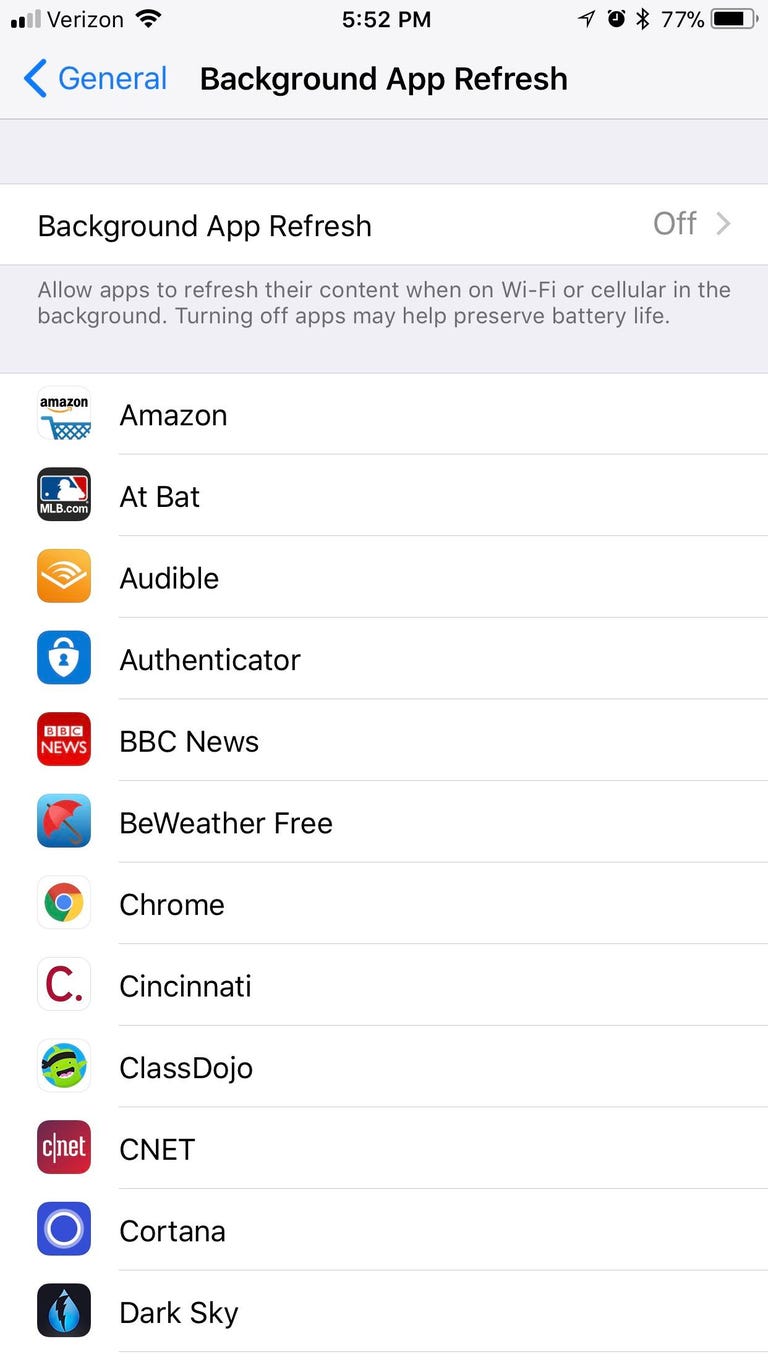
Reset network settings
When all else fails, you can try resetting your network connection. You'll need to reconnect to any of your Wi-Fi networks, but it might fix what ails Safari. Go to Settings > General and scroll down to the bottom and tap Reset . On the Reset page, tap Reset Network Settings .
Mobile Guides
- Best iPhone
- Best Galaxy S24 Deals
- Best iPhone Deals
- Samsung Galaxy S24 Review
- Best Android Phones
- Best Samsung Galaxy Phone
- Pixel 8 Pro Review
- iPhone 15 Pro/Pro Max Review
- Best iPhone 15 Deals
- Best Foldable Phones
- Galaxy Z Fold 5 Review
- OnePlus Open Review
- Best Galaxy Z Flip Deals
- Best Wireless Earbuds
- Best Noise Canceling Headphones
- Best Headphones
- Best Over Ear Headphones
- Best Wireless Earbuds and Headphones for Making Calls
- Best Headphones for Work at Home
- Best Noise Canceling Wireless Earbuds
- Best Sounding Wireless Earbuds
- Best Cheap Wireless Earbuds
- Best Wireless Headphones
- Best iPhone 15 Cases
- Best iPhone 14 Cases
- Best Power Bank for iPhone
- Best Airpods Pro Accessories
- Best Magsafe iPhone Accessories
- Best Speakerphone
- Best Wireless Car Charger and Mount
- Best iPhone Fast Charger
- Best Portable Chargers and Power Banks for Android
- Apple Watch Series 8 vs Series 7
- Best Apple Watch Bands
- Best Android Smartwatch
- Apple Watch Ultra Review
- Best Smartwatch
- Best Prepaid Phone Plans
- Best Cheap Phone Plans
- Best Unlimited Data Plans
- Best Phone Plans
- Best Phone Plan Deals
- Best Senior Phone Plans
- Best Family Phone Plans
- Best Travel Phone Plans
- Best Verizon Plans
- Samsung Promo Codes
- Consumer Cellular Coupons
- Verizon Promo Codes
- AT&T Wireless Promo Codes
- Best Buy Coupons
- Motorola Coupon Codes
- OnePlus Promo Codes
- Sony Coupon Codes
- Apple Store Promo Codes
Accelerate for Safari 4+
Control video playback, ritam sarmah.
- 4.2 • 219 Ratings
- Offers In-App Purchases
Screenshots
Description.
Accelerate is a Safari extension with powerful, customizable features for controlling video playback and speed. FEATURES • Control playback speed of HTML5 video • Personalize keyboard shortcuts for common media controls, e.g., play/pause, skipping, mute, Picture-in-Picture, etc. • Global shortcuts to control Safari playback while using other apps • Supports Picture-in-Picture and AirPlay • Works with YouTube, Netflix, Hulu, Apple TV+, Prime Video, Twitch, and more CONTROLS By default, you can use the following keys on your keyboard to control video speed: D: Speed Up S: Slow Down R: Toggle Default Speed (1x) A: Toggle 2x Speed V: Show Current Speed P: Enter Picture in Picture You can customize these and create additional shortcuts for the other playback actions available in Accelerate. PRIVACY Accelerate never collects any personal data or identifiable information from you. Safari will show a general warning that the extension can read sensitive info from all webpages. This permission level is required for extensions like Accelerate in order to interact with the web pages you visit. For more details, please see Accelerate's privacy policy. Privacy Policy: https://ritam.me/projects/accelerate/privacy FAQ: https://ritam.me/projects/accelerate/faq/ GitHub: https://github.com/ritamsarmah/accelerate
Version 4.2.1
Accelerate is now open source! If you're interested in contributing, please check out the GitHub repo: https://github.com/ritamsarmah/accelerate • Fixes playback rate calculation error
Ratings and Reviews
219 Ratings
Great but have recommendation
I am really enjoying the functionality of the extension. I use this as a medical student to more quickly navigate through lectures. One additional feature that would make this perfect for me would be menu commands to make universal keyboard shortcuts. An example this could be used is during recorded lectures and taking notes. If i miss a particular portion of the lecture audio and I need to skip backwards to get it, without exiting the note taking application, I would be able to do that. I cant tell you how much I am going in and out of applications when I just want to have a global shortcut for pause/play, skip forward and skip backward. Maybe Accelerate can do this and I just missed it. Great applicaiton none the less!
Its good for being one of the only fast forwards for safari
Im still a little confused sometimes on how to use it but the creator sent me to an faq page that helped me out. Im getting used to it, but it could still be a little clearer with instrcutions. though, it does what its supposed to do so it should get 5 stars. I also still dont like that it wans you that it could be steaking passwords, but the creator also explained that, and i guess ill just have to trust him if i want to watch netflix faster lol
Developer Response ,
Hi userjlv, I promise that Accelerate doesn't collect any personal info whatsoever, and you can see an explanation for the warning in my privacy policy, since it's a common concern with many Safari extensions. If you need help with getting the extension to work, there is an FAQ available on the Accelerate website with troubleshooting instructions. (https://ritam.me/projects/accelerate/faq) If you have other questions, feel free to email me and I'd be glad to answer them.
MacOS ver.: VGood, iOS ver.: Default Settings only
Again, great implementation on MacOS, but since I started using the iDevice variant, a) every input setting on the General app tab refuses to acknowledge changes to the playback speed multipliers or increment; on the Shortcuts app tab b) every created shortcut ignores user input and reverts to DEFAULT settings, and c) every Standard shortcut that is edited either resists editing entirely or replaces the Standard shortcut with the Default values from a newly created shortcut (in order to preserve the Standard shortcuts, the app must be clean re-installed). If the speed notification corner or the Keyboard shorts in the Standard shortcuts were in conflict with our workflow, I'd have to find another solution. Thankfully, the Standard shortcuts and General settings are tolerable. thx
App Privacy
The developer, Ritam Sarmah , indicated that the app’s privacy practices may include handling of data as described below. For more information, see the developer’s privacy policy .
Data Not Collected
The developer does not collect any data from this app.
Privacy practices may vary, for example, based on the features you use or your age. Learn More
Information
- Coffee Tip $1.99
- Developer Website
- App Support
- Privacy Policy
More By This Developer
You might also like.
Auto HD + FPS for YouTube
Paperback - A Komga Client
Callsheet: Find Cast & Crew
Remote for VLC, PC & Mac

IMAGES
VIDEO
COMMENTS
Click the Safari menu item at the top left of your screen. From the drop-down menu, select Settings. Select the Advanced tab and check the box next to the Show Develop menu in menu bar if it is unchecked. Return to the menu bar, click Develop, and select Empty Caches from this drop-down list.
How to Speed Up Safari . These tuneup tips can affect performance to varying degrees, but most of them offer only minor improvements in recent versions of Safari. Over time, Apple modified some of the routines in Safari to optimize performance. As a result, some tuneup techniques that created substantial performance increases in early versions ...
In this article you will find the following: How to speed up Safari on Mac. Check if your internet's slow. Close unnecessary tabs in Safari. Shut down apps and resource-intensive processes. Disable unnecessary Safari extensions. Switch DNS servers for Wi-Fi and Ethernet. Clear the Safari cache and cookies.
Launch Safari and click Safari > Preferences in the menu bar at the top of the screen. Click on the Advanced tab, then check Show Develop menu in menu bar at the bottom of the window. Close the Preferences window and click Develop > Empty Caches in the menu bar at the top of the screen. 4. Disable Thirsty Extensions.
Removing a build-up of cache is another quick way to improve Safari performance drastically. Here's how: Open Safari and select the Safari menu. Go to Settings and select the Advanced tab. At the bottom of the window, locate the Show Develop menu in the menu bar and select it. Now, select the Develop menu from the top menu bar and click Empty ...
9. Clear Safari's cache and cookies on Mac. Web browsers such as Safari enhance browsing by storing data like cookies and cache, which can speed up load times. Additionally, Safari keeps a record of your recently visited web pages. Though helpful, these can accumulate over time, causing your Safari to run slower than usual.
A quick way to speed up Safari is to clear your browsing history. Safari keeps a record of everywhere you go online, which can end up as hundreds or thousands of pages, or even more. Keep your history brief to keep it fast. Open Safari on your Mac. Select History and Clear History. Select the time period to clear history from and select OK.
Let's explore why Safari is running so slow on your Mac and how you can fix it. Table of Contents. Key Takeaways. Solution #1: Verify Your Internet Connection. Solution #2: Force Quit Safari. Solution #3: Update macOS. Solution #4: Close Excessive Tabs. Solution #5: Disable Extensions. Solution #6: Turn Off iCloud Private Relay - iCloud+ Only.
Cleaning this out will help speed up Safari in macOS. In older versions you can just open Safari and choose Safari > Reset Safari and check Remove all Website Data. (Leave the other options unticked.)
A sluggish Safari can hinder your productivity and dampen your browsing experience. However, with the right techniques and regular maintenance, you can ensure that Safari runs at optimal speed on ...
https://macmost.com/e-2339 Safari should be fast as loading and displaying web pages on your Mac. If it is slow, here are 15 things you can try to fix the pr...
Here's how to clean junk files on our Mac and speed up Safari: Download, install, and launch iBoysoft DiskGeeker on your Mac. Select your Mac's internal disk in the Local drive list, and click the Clean Junk button from the toolbar on the right. Select a folder from the left panel, select unwanted files/folders, then click the Clean button.
3. Force Quit Safari and Restart It. On iPhone and iPad with Face ID, swipe up from the bottom of the screen and hold. On devices with Home button, quickly double press it. Now, drag the Safari app card up to force close the app. After a moment, relaunch Safari. 4.
1. Open Safari Browser > select the Safari tab in top menu bar and click on System Preferences option in the drop-down menu. 2. On the next screen, click on the Search Tab and disable Enable quick website search, Preload top hit in the background and Show Favourites options. 3.
Tips to speed up Safari on your Mac. If your Safari Browser is running slow, you should be able to speed it up using the steps below. 1. Update Safari and macOS. Updating your Safari browser and macOS is crucial for optimal performance and security. Apple releases updates that include bug fixes, performance enhancements, and new features.
The easiest way to speed up Safari to close all tabs that you don't need. Or you can choose to restart Safari and get rid of all the open tabs. Press Command + Q or click the X button to quit Safari. 3. Delete the Safari Cache. Just like other browsers, Safari also saves a cache of data from the websites you access.
Tap on the share icon from the Safari menu at the bottom to bring up the iOS share sheet. Scroll all the way down to the bottom and select "Change Video Speed" to begin using the shortcut. You'll get the pop-up menu where you'll be able to choose your video playback speed. Select your preferred speed to continue to the next step.
To speed up the Safari browser on Mac, you need to follow a few simple tips. But make sure you back up your Mac using Time Machine before implementing any of the tips to avoid data loss. The following section shares some impeccable free tips that can help you speed up Mac and Safari performance. 1. Check Your Internet Speed
2. Clear Your Browsing History and Data. If clearing the tabs didn't fix the issue, you can reset Safari and clear up the cache, speeding it up in the process. To clear Safari, head to Settings > Safari > Clear History and Data . Once you do this, relaunch Safari and see if it's loading up pages quickly enough.
Close tabs. It's easy to run up the count of open tabs in Safari. As a lifelong fan of Ohio State football, I get a daily email newsletter about the team, and each time I tap on a story, it opens ...
How to speed up Firefox browser. There are multiple ways for your to speed up your Firefox browser. Try these options and see how they work for you. Update your Firefox browser. Open your Firefox browser Click the 3 horizontal lines in the top right of your screen; Click Help in the dropdown menu; Select About Firefox
Accelerate is a Safari extension with powerful, customizable features for controlling video playback and speed. FEATURES. • Control playback speed of HTML5 video. • Personalize keyboard shortcuts for common media controls, e.g., play/pause, skipping, mute, Picture-in-Picture, etc. • Global shortcuts to control Safari playback while using ...